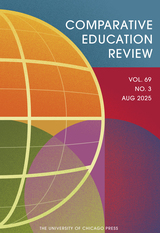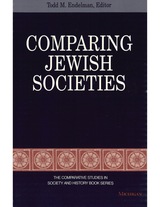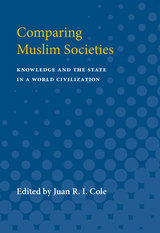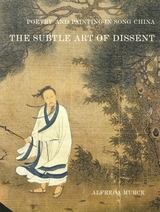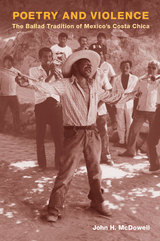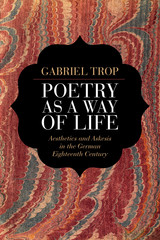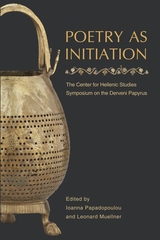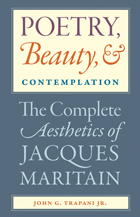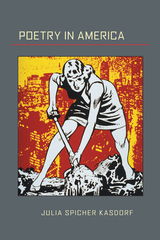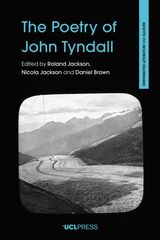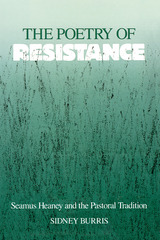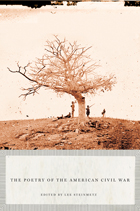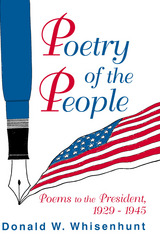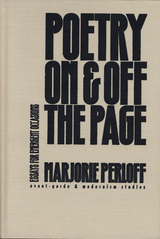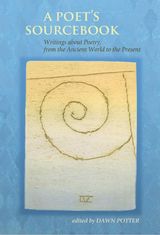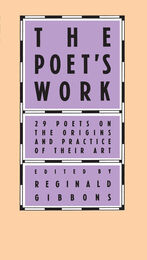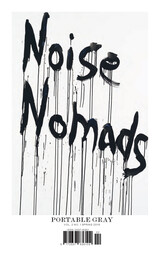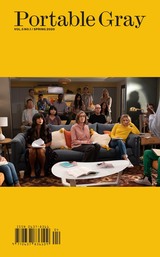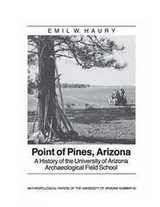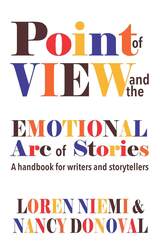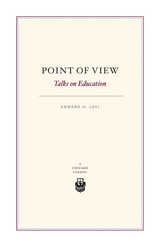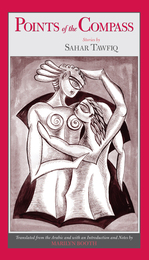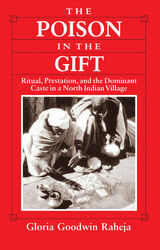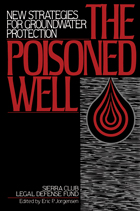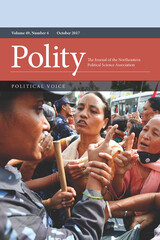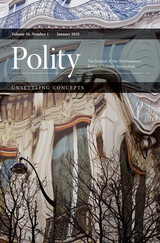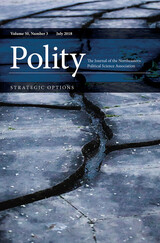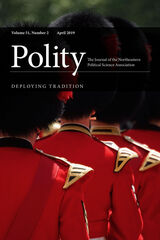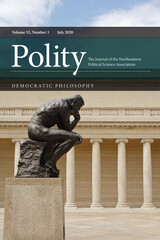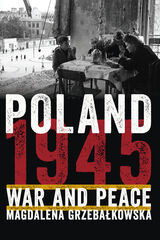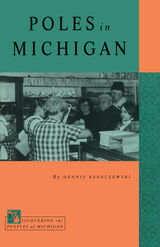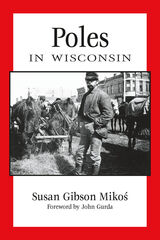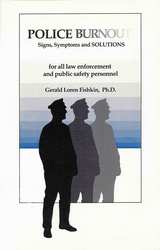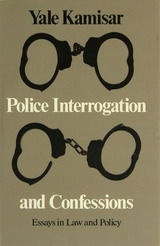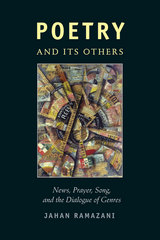 Poetry and Its Others: News, Prayer, Song, and the Dialogue of Genres
Jahan Ramazani
University of Chicago Press, 2013 What is poetry? Often it is understood as a largely self-enclosed verbal system—“suspended from any mutual interaction with alien discourse,” in the words of Mikhail Bakhtin. But in Poetry and Its Others, Jahan Ramazani reveals modern and contemporary poetry’s animated dialogue with other genres and discourses. Poetry generates rich new possibilities, he argues, by absorbing and contending with its near verbal relatives. Exploring poetry’s vibrant exchanges with other forms of writing, Ramazani shows how poetry assimilates features of prose fiction but differentiates itself from novelistic realism; metabolizes aspects of theory and philosophy but refuses their abstract procedures; and recognizes itself in the verbal precision of the law even as it separates itself from the law’s rationalism. But poetry’s most frequent interlocutors, he demonstrates, are news, prayer, and song. Poets such as William Carlos Williams and W. H. Auden refashioned poetry to absorb the news while expanding its contexts; T. S. Eliot and Charles Wright drew on the intimacy of prayer though resisting its limits; and Paul Muldoon, Rae Armantrout, and Patience Agbabi have played with and against song lyrics and techniques. Encompassing a cultural and stylistic range of writing unsurpassed by other studies of poetry, Poetry and Its Others shows that we understand what poetry is by examining its interplay with what it is not.
Poetry and Nation-Building in the Grand Duchy of Lithuania: Three Early Modern Latin Epics
Francis Young
Arc Humanities Press, 2024
Latin epic poetry flourished in the Grand Duchy of Lithuania between the early sixteenth and late seventeenth centuries, accompanied by the widely accepted belief that the Lithuanian language was a corrupted form of Latin and therefore Latin should be Lithuania’s national language. This edition presents translations of three key epics that reflect the beginnings, maturity and decline of the epic tradition in Lithuania: The Prussian War (1516) by Joannes Vislicensis; The Muscovite Expedition (1582) by Francisczek Gradowski; and The Strength of the Lord’s Right Arm (1674) by James Bennett. Between them, these epics show the creativity and inventiveness of the Lithuanian Latin epic tradition and the involvement of authors from different ethnic backgrounds in creating a national literature for early modern Central Europe’s largest state.
Poetry and Painting in Song China: The Subtle Art of Dissent
Alfreda Murck
Harvard University Press, 2000 Throughout the history of imperial China, the educated elite used various means to criticize government policies and actions. During the Song dynasty (960-1278), some members of this elite found an elegant and subtle means of dissent: landscape painting.
By examining literary archetypes, the titles of paintings, contemporary inscriptions, and the historical context, Alfreda Murck shows that certain paintings expressed strong political opinions—some transparent, others deliberately concealed. She argues that the coding of messages in seemingly innocuous paintings was an important factor in the growing respect for painting among the educated elite and that the capacity of painting's systems of reference to allow scholars to express dissent with impunity contributed to the art's vitality and longevity.
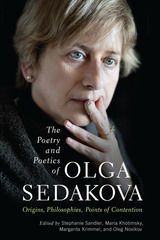 The Poetry and Poetics of Olga Sedakova: Origins, Philosophies, Points of Contention
Edited by Stephanie Sandler, Maria Khotimsky, Margarita Krimmel, and Oleg Novikov
University of Wisconsin Press, 2019 Olga Sedakova stands out among contemporary Russian poets for the integrity, erudition, intellectual force, and moral courage of her writing. After years of flourishing quietly in the late Soviet underground, she has increasingly brought her considered voice into public debates to speak out for freedom of belief and for those who have been treated unjustly. This volume, the first collection of scholarly essays to treat her work in English, assesses her contributions as a poet and as a thinker, presenting far-reaching accounts of broad themes and patterns of thought across her writings as well as close readings of individual texts.
Essayists from Russia, Ukraine, Germany, Italy, and the United States show how Sedakova has contributed to ongoing aesthetic and cultural debates. Like Sedakova's own work, the volume affirms the capacity of words to convey meaning and to change our understanding of life itself. The volume also includes dozens of elegant new translations of Sedakova's poems.
 Poetry and Politics in the Play Sir Thomas More
L. Joseph Herbert
Catholic University of America Press, 2026 If ever a play had something to say about the art of statesmanship, that play is Sir Thomas More. Its origins and authorship shrouded in mystery, the manuscript was likely written and revised between 1593 and 1604. This carefully crafted and dramatically compelling work pays tribute to a man eminent in philosophy and literature as well as politics, whose brilliant career and violent death revolved around controversies relevant to the turbulent transformations of the Tudor age, and to the subsequent development of modern government and society.
Known then and now as "a man for all seasons," More was an accomplished poet, rhetorician, lawyer, diplomat, member of parliament and speaker of the House of Commons, a legal and political advisor to the city of London and King Henry VIII, and finally Chancellor of England. Having established a reputation for moral integrity, fervent piety, and vigorous opposition to both corruption and misguided attempts at reform, More saw his public career come to an abrupt end when he refused to recognize Henry as head of the English Church. In the generations that followed his trial and execution for "high treason," More was hailed by many as a man of wisdom, courage, and good faith-indeed, as "a blessed and happy martyr,"-even as the regime whose foundations he opposed continued to insist upon his error, guilt, and folly.
Under the watchful eye of an Elizabethan censor, Sir Thomas More explores questions of profound philosophic and historic significance-questions that remained politically explosive at the time, and that continue to divide authors and audiences today. This book is the first to offer a comprehensive reading of the political and philosophical currents informing the play, including scene by scene summaries of the drama and clarifying synopses of sources referenced in the commentary.
 Poetry and Pragmatism
Richard Poirier
Harvard University Press, 1992 Richard Poirier, one of America's most eminent critics, reveals in this book the creative but mostly hidden alliance between American pragmatism and American poetry. He brilliantly traces pragmatism as a philosophical and literary practice grounded in a linguistic skepticism that runs from Emerson and William James to the work of Robert Frost, Gertrude Stein, and Wallace Stevens, and on to the cultural debates of today.
More powerfully than ever before, Poirier shows that pragmatism had its start in Emerson, the great example to all his successors of how it is possible to redeem even as you set out to change the literature of the past. Poirier demonstrates that Emerson—and later William James—were essentially philosophers of language, and that it is language that embodies our cultural past, an inheritance to be struggled with, and transformed, before being handed on to future generations. He maintains that in Emersonian pragmatist writing, any loss—personal or cultural—gives way to a quest for what he calls “superfluousness,” a kind of rhetorical excess by which powerfully creative individuals try to elude deprivation and stasis. In a wide-ranging meditation on what James called “the vague,” Poirier extols the authentic voice of individualism, which, he argues, is tentative and casual rather than aggressive and dogmatic.
The concluding chapters describe the possibilities for criticism created by this radically different understanding of reading and writing, which are nothing less than a reinvention of literary tradition itself. Poirier's discovery of this tradition illuminates the work of many of the most important figures in American philosophy and poetry. His reanimation of pragmatism also calls for a redirection of contemporary criticism, so that readers inside as well as outside the academy can begin to respond to poetic language as the source of meaning, not to meaning as the source of language.
 Poetry and Prophecy: The Anthropology of Inspiration
John Leavitt, Editor
University of Michigan Press, 1997 The "magic" of words is something many people refer to without qualification or, often, attention. In this pathbreaking collection, John Harold Leavitt has assembled five essays that explore the places where magic and words most clearly intersect: in prophetic or inspired acts of speech and writing.
Based on rich ethnographic work in Western and non-Western cultures, the essays represent distinct approaches to the topic, from one person's account of her interactions with a possessing spirit to another's world-spanning statement on prophetic poetics. Each contributor challenges easy assumptions that poetic texts are crafted works, products of skill rather than inspiration, while prophetic speech and writing are best understood as spontaneous performance rather than formal art.
As a whole the collection aims to reorient the anthropological study of possession and oracular experiences toward an awareness of the word, and to draw the attention of literary critics to "inspired" poetry. It will also appeal to readers in performance studies and comparative religion.
Contributors are Marjorie Mandelstam Balzer, James Fernandez, Paul Friedrich, John Leavitt, Dennis Tedlock, Margaret Trawick.
John Harold Leavitt is Professor of Anthropology, University of Montreal.
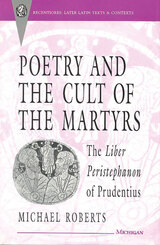 Poetry and the Cult of the Martyrs: The Liber Peristephanon of Prudentius
Michael Roberts
University of Michigan Press, 1993 Prudentius' Peristephanon is a collection of martyr texts from a vital period for the growth of martyr cult in the West. Building on recent work on the cult of the saints and on the sacralization of the space and time, Roberts demonstrates how the Peristephanon relates to developments in late fourth century spirituality. The author examines how Prudentius creates an idiom to express devotion to the martyrs, particularly in the structuring of narrative and the use of poetic language. Roberts concludes by demonstrating how Prudentius employs the model of martyr cult to articulate the status of Christian literature, the role of the bishop in the Christian community, and the symbolic status of Rome in the Christian West. Michael Roberts is Robert Rich Professor of Latin, Wesleyan University. Jacket art: Gold-glass vase, after A.D. 350. By permission of the Trustees of the British Museum.
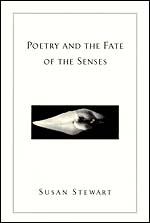 Poetry and the Fate of the Senses
Susan Stewart
University of Chicago Press, 2001 What is the role of the senses in the creation and reception of poetry? How does poetry carry on the long tradition of making experience and suffering understood by others? With Poetry and the Fate of the Senses, Susan Stewart traces the path of the aesthetic in search of an explanation for the role of poetry in our culture. The task of poetry, she tells us, is to counter the loneliness of the mind, or to help it glean, out of the darkness of solitude, the outline of others. Poetry, she contends, makes tangible, visible, and audible the contours of our shared humanity. It sustains and transforms the threshold between individual and social existence.
Herself an acclaimed poet, Stewart not only brings the intelligence of a critic to the question of poetry, but the insight of a practitioner as well. Her new study draws on reading from the ancient Greeks to the postmoderns to explain how poetry creates meanings between persons. Poetry and the Fate of the Senses includes close discussions of poems by Stevens, Hopkins, Keats, Hardy, Bishop, and Traherne, of the sense of vertigo in Baroque and Romantic works, and of the rich tradition of nocturnes in visual, musical, and verbal art. Ultimately, Stewart explores the pivotal role of poetry in contemporary culture. She argues that poetry can counter the denigration of the senses and can expand our imagination of the range of human expression.
Poetry and the Fate of the Senses won the 2004 Truman Capote Award for Literary Criticism in Memory of Newton Arvin, administered for the Truman Capote Estate by the University of Iowa Writers' Workshop. It also won the Phi Beta Kappa Society's 2002 Christian Gauss Award for Literary Criticism.
 Poetry and the Police: Communication Networks in Eighteenth-Century Paris
Robert Darnton
Harvard University Press, 2012 “We are given a vivid sense of how songs were circulated and performed on the streets of Paris…Darnton has opened up another rich vein of research in the eighteenth century.” —Times Literary Supplement
In spring 1749, François Bonis, a medical student in Paris, found himself unexpectedly hauled off to the Bastille for distributing an “abominable poem about the king.” So began the Affair of the Fourteen, a police crackdown on ordinary citizens for unauthorized poetry recitals. Why was the official response to these poems so intense?
In this captivating book, Robert Darnton follows the poems as they passed through several media: copied on scraps of paper, dictated from one person to another, memorized and declaimed to an audience. But the most effective dispersal occurred through music, when poems were sung to familiar tunes. Lyrics often referred to current events or revealed popular attitudes toward the royal court. The songs provided a running commentary on public affairs, and Darnton brilliantly traces how the lyrics fit into song cycles that carried messages through the streets of Paris during a period of rising discontent. He uncovers a complex communication network, illuminating the way information circulated in a semi-literate society.
This lucid and entertaining book reminds us of both the importance of oral exchanges in the history of communication and the power of “viral” networks long before our internet age.
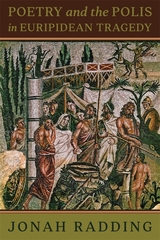 Poetry and the Polis in Euripidean Tragedy
Jonah Radding
Harvard University Press Most critics agree that Euripidean tragedy addresses a wealth of political questions, and that it successfully incorporates and engages with a variety of ancient Greek poetic traditions. Nevertheless, these topics and questions have generally been treated separately. In this book, Jonah Radding contends that the political issues addressed in Euripides’ tragedies are inextricably related to his employment of choral lyric genres such as paean and epinician, and to his engagement with canonical poetic texts such as the Iliad and Aeschylus’ Agamemnon.
We see that Euripides consistently recasts traditional poetic genres and texts in order to dramatize and illuminate political questions that are central to his tragedies. At the same time, Radding suggests that the dramatic politicization of the poetic tradition also serves to question the manner in which ancient Athenians understood and utilized these various poetic forms in their own polis. Ultimately, we see that the relationship between poetry and politics in Euripidean tragedy is truly reciprocal, for both aspects illuminate—and are illuminated by—the other, each becoming a more powerful force in the process.
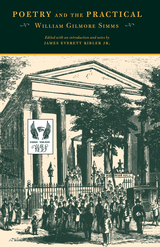 Poetry and the Practical
William Gilmore Simms
University of Arkansas Press, 1998 Delivered as a three-part lecture series in 1854 at the famous Hibernian Society Hall in Charleston, South Carolina, Simms’s spirited defense of poetry stands in the nobel line of poetic credos from poets such as Sir Philip Sidney and Percy Bysshe Shelley. It is the only full-length work of its kind in American literature, and it has never before been published. Seventh in the University of Arkansas Press’s Simms Series, Poetry and the Practical is a clear, forceful rebuttal of arguments that would relegate poetry to the margins of life. It proclaims the high calling of poets as spokesmen and romantic visionaries, underscoring their mission to reveal truth and passion, mind and heart and to transcend the limiting bounds of the empirical. In proving poetry’s utility and worth, Simms uses all the tools of persuasion open to him: his wide reading, his considerable knowledge of the history of culture and civilizations, his understanding of the values of place and tradition, and, above all, an oratorical eloquence, which allows his words to leave the page in a rush of inspiration. These lectures, which still retain their identity as scripts prepared and punctuated for performance, provide profound insight into Simms the poet and into the effects of industrialization, the southern sensibility, and the influence of European thought on southern literature at a critical point in that literature’s development.
Poetry and Violence: The Ballad Tradition of Mexico's Costa Chica
John H. McDowell
University of Illinois Press, 1999 John H. McDowell provides an in-depth look at the Mexican ballad form known as the corrido, a body of poetry that draws from violence for its subject matter. Through interviews with male and female corrido composers and performers, plus a generous sampling of ballad texts, McDowell reveals a living vernacular tradition that chronicles local and regional rivalries and spawned the narcocorrido, ballads set in the drug trade and particularly popular along the Rio Grande border. Detailed and rife with social and cultural implications, Poetry and Violence is a compelling commentary on violence as both human experience and communicative action.
Poetry as a Way of Life: Aesthetics and Askesis in the German Eighteenth Century
Gabriel Trop
Northwestern University Press, 2014 What would it mean to make a work of art the focal point of one’s life practice? Poetry as a Way of Life goes back to the origins of aesthetics as a philosophical discipline in the early eighteenth century in order to uncover an understanding of the work of art as an exercise of the self. Engaging in close readings of works by both canonical and less well-known eighteenth-century German poets such as Friedrich Holderlin, Novalis, Friedrich von Hagedorn, and Johann Wilhelm Ludwig Gleim, Gabriel Trop illustrates the ways in which these authors tap into the potential of poetic form to redefine the limits of human perception and generate alternative ways of being in the world.
Poetry as Initiation: The Center for Hellenic Studies Symposium on the Derveni Papyrus
Ioanna Papadopoulou
Harvard University Press, 2014 The Derveni Papyrus is the oldest known European "book." It was meant to accompany the cremated body in Derveni Tomb A but, by a stroke of luck, did not burn completely. Considered the most important discovery for Greek philology in the twentieth century, the papyrus was found accidentally in 1962 during a public works project in an uninhabited place about 10 km from Thessaloniki, and it is now preserved in the Archaeological Museum of Thessaloniki.
The papers in Poetry as Initiation discuss a number of open questions: Who was the author of the papyrus? What is the date of the text? What is the significance of burying a book with a corpse? What was the context of the peculiar chthonic ritual described in the text? Who were its performers? What is the relationship of the author and the ritual to the so-called Orphic texts?
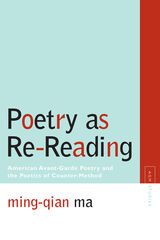 Poetry as Re-Reading: American Avant-Garde Poetry and the Poetics of Counter-Method
Ming-Qian Ma
Northwestern University Press, 2008 Rereading and rewriting our understanding of the poetics of modernism and postmodernism, this truly revisionary work identifies a significant counter-tradition in twentieth-century poetry. Postmodernism, Ming-Qian Ma argues, does not so much follow from modernism as coexist with it, with postmodernists employing the anarchic poetics introduced by Gertrude Stein in countering the rationalist method of high modernists such as T. S. Eliot and Ezra Pound.
Grounded in a detailed and compelling account of the philosophy guiding such a project, Ma’s book traces a continuity of thought and practice through the very different poetic work of objectivists Louis Zukofsky, George Oppen, Carl Rakosi, and John Cage and language poets Susan Howe, Lyn Hejinian, Bruce Andrews, and Charles Bernstein. His deft individual readings provide an opening into this notoriously difficult work, even as his larger critique reveals a new and clarifying perspective on American modernist and post-modernist avant-garde poetics. Ma shows how we cannot understand these poets according to the usual way of reading but must see how they deliberately use redundancy, unpredictability, and irrationality to undermine the meaning-oriented foundations of American modernism--and to force a new and different kind of reading.
With its unusually clear explanation of the philosophy informing postmodern practice, and its unique insights into some of the more interesting and vexing poets of our time, this book points to a reading of an important strain of postmodern American poetry that is likely to develop well into the twenty-first century.
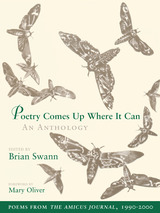 Poetry Comes Up Where It Can
Brian Swann
University of Utah Press, 2000 Walk with this book to find some of the unexpected places where poetry can flourish. Discover poetry growing "where it can," in the infinite and in the microscopic: in the "star-gazing, star-thinking, star-dreaming...Milky Way," and "in minute invisible architectures...of snowflake sculpture reality;" in mountain passes where "gold leaves spill and spin like doubloons," and in the grizzly, "hunger-hearted and ugly, a horrible beauty, / a hairy breath of berry-laced and blood-hot red, / hunter and hunted, and hated;" in the city where "birds...survive to sing about sun- / light straining through the gritty breath / of New York," and in wilderness that has "no nakedness," that is "lovely because it is empty."
The poems in this anthology first appeared in The Amicus Journal, the quarterly publication of the Natural Resources Defense Council (NRDC). Selected by the journal’s poetry editor, Brian Swann, they represent a broad array of responses to the natural world—from warning to celebration—by some of the nation’s most distinguished poets. Included is work by American poets Wendell Berry, Michael Dorris, Denise Levertov, Mary Oliver, Pattiann Rogers, and William Stafford, as well as work from poets in Australia and Mexico. All grapple with issues of nature and the environment from the perspective of the final decade of the millennium.
These poems remind us that we can be dazzled both by nature and by the poetry that explores the natural world.
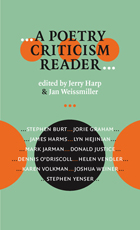 A Poetry Criticism Reader
Jerry Harp
University of Iowa Press, 2006 A timely and informative collection, A Poetry Criticism Reader brings together eleven essays and reviews that constitute some of the best and most illuminating poetry criticism from the past decade.In his introduction to the book, editor-poet Jerry Harp gives an overview of poetry criticism and its pluralistic traditions after the high modernist years of T. S. Eliot. In the essays that follow, esteemed critics and poets explore varied aspects of poetics, make aesthetic statements, relate to postmodernism with its array of meanings, and examine particular poets and poems. Works by Donald Justice, James Tate, Paul Muldoon, Jorie Graham, Seamus Heaney, and Czeslaw Milosz are among those studied. None of the pieces was written in direct response to any of the others; nonetheless, they complement each other, forming a kind of dialogue. Because editors Jerry Harp and Jan Weissmiller selected writers who give us a broad range of perspectives on our postmodern moment as they reach into history for context, the collection offers students---the next generation of poets and critics---and their teachers exemplary models of fine critical writing and thought.
 Poetry Does Theology: Chaucer Grosseteste and the "Pearl"-Poet
Jim Rhodes
University of Notre Dame Press, 2001 What happens when poetry deals explicitly with a serious theological issue? In Poetry Does Theology, Jim Rhodes seeks one answer to that question by analyzing the symbiotic relationship that existed between theology and poetry in fourteenth-century England. He pays special attention to the narrative poems of Chaucer, Grosseteste, the Pearl-poet, the author of Saint Erkenwald, and Langland. Rhodes’ careful analysis describes how the relationship between theology and poetry underwent a radical transformation as the latter half of the fourteenth century progressed.
"As Jim Rhodes demonstrates in this readable and extremely intelligent book, the diverse ways in which Chaucer, Grosseteste, and the Pearl-poet treat theological themes are intricate and subtle. . . . Rhodes's book definitely breaks new ground by advancing our understanding of the theological facets of Ricardian literature." —Studies in the Age of Chaucer
“Rhodes emerges as a reader to whom fictive persons matter, regardless of the century they inhabit, because they and their lives speak about us—not as subjectivities but as souls. His book deserves credit for treating both medieval religion and medieval poetry seriously as liberating elements in human life.” —Speculum
"The influence of Christian thinking on medieval English society is often reflected and refracted through the literature of the period. Analyses of the interplay between poetry and doctrine regularly add to the stream of literary criticism of Middle English texts, a tally to which Jim Rhodes adds his own contribution with this volume." —The Heythrop Journal
"Rhodes's book establishes a provocative topic most worthy of further consideration." —Journal of Religion
Jim Rhodes is professor emeritus of English at Southern Connecticut State University.
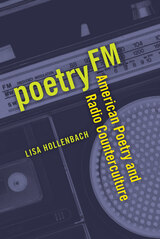 Poetry FM: American Poetry and Radio Counterculture
Lisa Hollenbach
University of Iowa Press, 2023 Poetry FM is the first book to explore the dynamic relationship between post-1945 poetry and radio in the United States. Contrary to assumptions about the decline of literary radio production in the television age, the transformation of the broadcasting industry after World War II changed writers’ engagement with radio in ways that impacted both the experimental development of FM radio and the oral, performative emphasis of postwar poetry.
Lisa Hollenbach traces the history of Pacifica Radio—founded in 1946, the nation’s first listener-supported public radio network—through the 1970s: from the radical pacifists and poets who founded Pacifica after the war; to the San Francisco Renaissance, Beat, and New York poets who helped define the countercultural sound of Pacifica stations KPFA and WBAI in the 1950s and 1960s; to the feminist poets and activists who seized Pacifica’s frequencies in the 1970s. In the poems and recorded broadcasts of writers like Kenneth Rexroth, Jack Spicer, Allen Ginsberg, Amiri Baraka, Audre Lorde, Pat Parker, Bernadette Mayer, and Susan Howe, one finds a recurring ambivalence about the technics and poetics of reception. Through tropes of static noise, censorship, and inaudibility as well as voice, sound, and signal, these radiopoetic works suggest new ways of listening to the sounds and silences of Cold War American culture.
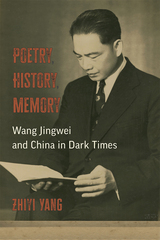 Poetry, History, Memory: Wang Jingwei and China in Dark Times
Zhiyi Yang
University of Michigan Press, 2023 Wang Jingwei, poet and politician, patriot and traitor, has always been a figure of major academic and popular interest. Until now, his story has never been properly told, let alone critically investigated. The significance of his biography is evident from an ongoing war on cultural memory: modern mainland China prohibits serious academic research on wartime collaboration in general, and on Wang Jingwei in particular. At this critical juncture, when the recollection of World War II is fading from living memory and transforming into historical memory, this knowledge embargo will undoubtedly affect how China remembers its anti-fascist role in WWII. In Poetry, History, Memory: Wang Jingwei and China in Dark Times, Zhiyi Yang brings us a long overdue reexamination of Wang’s impact on cultural memory of WWII in China.
In this book, Yang brings disparate methodologies into a fruitful dialogue, including sophisticated methods of poetic interpretation. The author argues that Wang’s lyric poetry, as the public performance of a private voice, played a central role in constructing his political identity and heavily influenced the public’s posthumous memory of him. Drawing on archives (in the PRC, Taiwan, Japan, the USA, France, and Germany), memoires, historical journals, newspapers, interviews, and other scholarly works, this book offers the first biography of Wang that addresses his political, literary, and personal life in a critical light and with sympathetic impartiality.
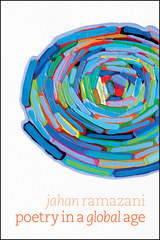 Poetry in a Global Age
Jahan Ramazani
University of Chicago Press, 2020 Ideas, culture, and capital flow across national borders with unprecedented speed, but we tend not to think of poems as taking part in globalization. Jahan Ramazani shows that poetry has much to contribute to understanding literature in an extra-national frame. Indeed, the globality of poetry, he argues, stands to energize the transnational turn in the humanities.
Poetry in a Global Age builds on Ramazani’s award-winning A Transnational Poetics, a book that had a catalytic effect on literary studies. Ramazani broadens his lens to discuss modern and contemporary poems not only in relation to world literature, war, and questions of orientalism but also in light of current debates over ecocriticism, translation studies, tourism, and cultural geography. He offers brilliant readings of postcolonial poets like Agha Shahid Ali, Lorna Goodison, and Daljit Nagra, as well as canonical modernists such as W. B. Yeats, Wallace Stevens, T. S. Eliot, and Marianne Moore. Ramazani shows that even when poetry seems locally rooted, its long memory of forms and words, its connections across centuries, continents, and languages, make it a powerful imaginative resource for a global age. This book makes a strong case for poetry in the future development of world literature and global studies.
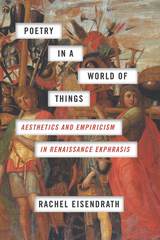 Poetry in a World of Things: Aesthetics and Empiricism in Renaissance Ekphrasis
Rachel Eisendrath
University of Chicago Press, 2018 We have become used to looking at art from a stance of detachment. In order to be objective, we create a “mental space” between ourselves and the objects of our investigation, separating internal and external worlds. This detachment dates back to the early modern period, when researchers in a wide variety of fields tried to describe material objects as “things in themselves”—things, that is, without the admixture of imagination. Generations of scholars have heralded this shift as the Renaissance “discovery” of the observable world.
In Poetry in a World of Things, Rachel Eisendrath explores how poetry responded to this new detachment by becoming a repository for a more complex experience of the world. The book focuses on ekphrasis, the elaborate literary description of a thing, as a mode of resistance to this new empirical objectivity. Poets like Petrarch, Spenser, Marlowe, and Shakespeare crafted highly artful descriptions that recovered the threatened subjective experience of the material world. In so doing, these poets reflected on the emergence of objectivity itself as a process that was often darker and more painful than otherwise acknowledged. This highly original book reclaims subjectivity as a decidedly poetic and human way of experiencing the material world and, at the same time, makes a case for understanding art objects as fundamentally unlike any other kind of objects.
Poetry in America
Julia Spicher Kasdorf
University of Pittsburgh Press, 2011
Poetry in America offers extravagantly formed lyric and narrative poems that function like works of social realism for our times: hard times, wartime, divorce, times of downturn and dissipated resources. Where, in such times, can poetry emerge, the book asks—and answers—again and again. Largely set in rural places and small towns, these poems are politically committed but deeply sensuous, emotionally complex and compassionate. They take up the everyday in meaningful ways, and deliver it with blunt force, yet not without hope or bright humor.
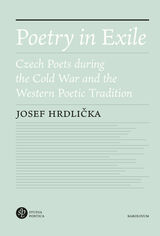 Poetry in Exile: Czech Poets during the Cold War and the Western Poetic Tradition
Josef Hrdlicka
Karolinum Press, 2021 In this comparative tour de force, Josef Hrdlička--one of the Czech Republic’s foremost experts on lyric poetry--examines the impact of exile, literal or spiritual, on poetry. Hrdlička argues that exile serves to disrupt the fundamental elements of poetry, especially its linguistic and cultural framework. Beginning with an examination of exile as a cultural phenomenon in the Western tradition, Hrdlička follows its complex history and treatment by poets from Solon to Celan. Focusing on the specific poetics of exile, he identifies Ovid’s elegies as an early model of exile in poetics before tracing the metamorphosis of exile as a concept through the modern age and the very Baudelarian idea that a person can be metaphorically exiled by the act of daily living itself. The core of Poetry in Exile, however, hews closer to Hrdlička’s homeland, homing in on the postwar poetry of Czech exiles. Poets such as Ivan Blatný, Milada Součková, Ivan Diviš, and Petr Král are investigated as examples to test the theoretical questions raised in the first part of the book and discover the answers that their individual poems provide.
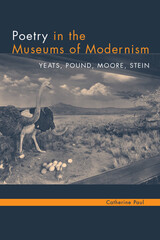 Poetry in the Museums of Modernism: Yeats, Pound, Moore, Stein
Catherine Paul
University of Michigan Press, 2002 This book explores the relationships between four modernist poets and the museums that helped shape their writing. During the early twentieth century, museums were trying to reach a wider audience and used displayed objects to teach that audience about art, culture, and ecology. Writers such as Yeats, Pound, Moore, and Stein borrowed strategies and techniques from museums in order to create literary modernism. Poetry in the Museums of Modernism places these writers' poetry and prose within the context of specific gallery spaces, curatorial practices, displayed objects, and exhibition objectives of the museums that inspired them, exposing the ways in which literary modernism is linked to museums.
Although critics have attested to the importance of the visual arts to literary modernists and have begun to explore the relationships between literary production and social institutions, before now no one has examined the particular institutions in which modernist poets found the artworks, specimens, and other artifacts that inspired their literary innovations. Catherine Paul's book offers the reader a fresh encounter with modernism that will interest literary and art historians, literary theorists, critics, and scholars in cultural studies and museum studies.
Catherine Paul is Associate Professor of English, Clemson University.
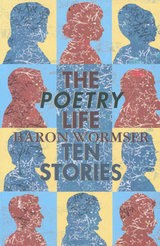 The Poetry Life: Ten Stories
Baron Wormser
CavanKerry Press, 2008 Baron Wormser brings to life the immense force poetry can have in people’s lives. In stories funny, tender, sad, and edgy, the narrators register how poetry has changed how they see themselves, how they live, and what they care about. As it bends genres by adapting aspects of fiction, biography, essay and monologue, The Poetry Life shows how poetry can be lightning in the soul. “Baron Wormser has pulled off a miraculous feat—he has written a collection of stories that reveals the absolute necessity of poetry in our lives. His prose style is riveting, and his characters are as diverse as a phone book. Each voice conjures up a passionate portrait of inner life, telling us—through episodes both comic and tragic—that the world of the deceased poet remains eternally relevant to our own.” —Clint McCown, author of The Weatherman: A Novel “‘Poetry,’ Baron Wormser writes, ‘is about generosity.’ So too are these ten stories you hold in your hands. They are about generosity. And mystery. And loneliness. And life. They are about how poetry helps us ‘stay in our skins.’ You will fall in love with these stories and with the ten poets who appear in them. What Baron Wormser says about William Carlos Williams, I say about him here, ‘He nailed it.’” —Ann Hood, author of The Knitting Circle: A Novel “A book of stories not about poets but driven by the presence of poetry and the shadows of poets: madness undoubtedly. But the best kind of madness! With this book, Baron Wormser invites us to reconsider the connection between poetry and our lives, to remember that we really do live hungry for inner vision, for small insights that can save us from the slag heap of goofdom and pointlessness. It’s a wonderful book. It’s the kind of stuff that makes you want to stay in the world. ” —Tim Seibles, author of Buffalo Head Solos
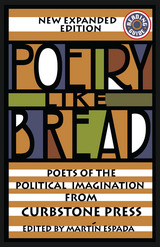 Poetry Like Bread, New Expanded Edition: Poets of the Political Imagination from Curbstone Press
Martín Espada
Northwestern University Press, 2000 Poetry Like Bread contains poems by nearly forty poets published by the Curbstone Press during the last twenty years. These poets are probably unlike any you have studied. Their engagement with everyday political and economic realities is as direct as a newspaper, their language as familiar as conversation. Their motto, taken from Roque Dalton for the title of the collection, is that "poetry, like bread, is for everyone." These poems were not written to be studied. They were meant to be read. Or better yet, heard. Whole or in part. Alone or among friends and strangers. Reading and hearing them, you must respond and react. Some may inspire you, knock the wind out of you—make you indignant, sad, joyous, ashamed. Whether you drop this book, seek out others, join a social action group, write letters to your elected representatives, or write poems of your own, your reaction to the poems will be as political as the poems themselves. Some of the subjects of these poems may be unfamiliar to you, or very familiar to you. Many relate stories from war-torn Central and South America, where U. S. policy has had a huge impact on people's lives. The rest are the voices of the voiceless here in the U.S: Latinos and African Americans, Vietnam veterans and Vietnamese, prison inmates, blue collar workers, migrant workers, women, the homeless. It's the poet's job to open up and validate these worlds to us. Our job, once roused, is to learn. To learn and to act.
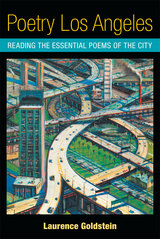 Poetry Los Angeles: Reading the Essential Poems of the City
Laurence Goldstein
University of Michigan Press, 2014 Is there such a thing as Los Angeles poetry? How do we assess a poem about a city as elusive of identity as Los Angeles? What features do poems about this unique urban landscape of diverse peoples and terrains have in common? Poetry Los Angeles is the first book to gather and analyze poems about sites as different as Hollywood, Santa Monica and Venice beaches, the freeways, downtown, South Central and East L.A. Laurence Goldstein presents original commentary on six decades of poets who have contributed to the iconography and poetics of Los Angeles literature, including Elizabeth Alexander, Jimmy Santiago Baca, Dorothy Barresi, Victoria Chang, Wanda Coleman, Dana Gioia, Joy Harjo, James Harms, Robert Hass, Eloise Klein Healy, Garrett Hongo, Suzanne Lummis, Paul Monette, Harryette Mullen, Carol Muske-Dukes, Frederick Seidel, Gary Soto, Timothy Steele, Diane Wakoski, Derek Walcott, and Charles Harper Webb. Forty poems are reproduced in their entirety. One chapter is devoted to Charles Bukowski, the celebrity face of the city’s poetry. Other chapters discuss the ways that poets explore “Interiors” and “Exteriors” throughout the cityscape. Goldstein also provides ample connections to the novels, films, art, and politics of Southern California. In clear prose, Poetry Los Angeles examines the strategies by which poets make significant places meaningful and memorable to readers of every region of the U.S. and elsewhere.
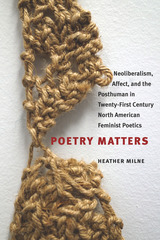 Poetry Matters: Neoliberalism, Affect, and the Posthuman in Twenty-First Century North American Feminist Poetics
Heather Milne
University of Iowa Press, 2018 Poetry Matters explores poetry written by women from the United States and Canada, which documents the social and political turmoil of the early twenty-first century and places this poetry in dialogue with recent currents of feminist theory including new materialism, affect theory, posthumanism, and feminist engagements with neoliberalism and capitalism. Central to this project is the conviction that a poetics that explores the political dimensions of affect; demonstrates an understanding of subjectivity as posthuman and transcorporeal; critically reflects on the impact of capitalism on queer, racialized, and female bodies; and develops an ethical vocabulary for reimagining the nation state and critically engaging with issues of democracy and citizenship is now more urgent than ever before. Milne focuses on poetry published after 2001 by writers who mostly began writing after the feminist writing movements of the 1980s, but who have inherited and built upon their political and aesthetic legacies. The poets discussed in this book—including Jennifer Scappettone, Margaret Christakos, Larissa Lai, Rita Wong, Nikki Reimer, Rachel Zolf, Yedda Morrison, Marcella Durand, Evelyn Reilly, Juliana Spahr, Claudia Rankine, Dionne Brand, Jena Osman, and Jen Benka—bring a sense of political agency to poetry. These voices seek new vocabularies and dissenting critical and aesthetic frameworks for thinking across issues of gender, materiality, capitalism, the toxic convergences of nationalism and racism, and the decline of democratic institutions. This is poetry that matters—both in its political urgency and in its attentiveness to the world as “matter”—as a material entity under siege. It could not be more timely or more relevant.
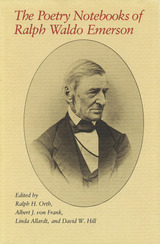 The Poetry Notebooks of Ralph Waldo Emerson
Ralph Waldo Emerson; Edited by Ralph H. Orth, Albert J. von Frank, Linda Allardt, & David W. Hill
University of Missouri Press, 1986
Published here in full are Ralph Waldo Emerson's nine poetry notebooks, the single greatest source of information about his creative habits in poetry. Emerson kept rough drafts, revised versions, and fair copies of hundreds of poems in these notebooks, so that the genesis and development of poems both famous and obscure can be traced closely. The notebooks have been remarkably little consulted, primarily because their unedited textual condition makes them difficult to use. This edition makes them accessible to scholars by presenting a faithful transcription of each notebook, a detailed analysis of the history of each poem, an introduction, and a cross-referenced index.
For this edition, the editors have followed the high standards of textual practice developed for Harvard University Press's edition of The Journals and Miscellaneous Notebooks of Ralph Waldo Emerson. That editorial approach makes possible a logical, clear presentation of material that Emerson often jotted down in segments or with multiple erasures and insertions.
Because it will allow scholars to examine as never before the many facets of Emerson the poet, The Poetry Notebooks of Ralph Waldo Emerson will be a major impetus to study of the man considered by many to be America's greates thinker.
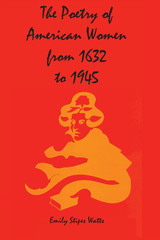 The Poetry of American Women from 1632 to 1945
By Emily Stipes Watts
University of Texas Press, 1977 American women have created an especially vigorous and innovative poetry, beginning in 1632 when Anne Bradstreet set aside her needle and picked up her "poet's pen." The topics of American women poets have been various, their images their own, and their modes of expression original. Emily Stipes Watts does not imply that the work of American men and that of American women are two different kinds of poetry, although they have been treated as such in the past. It is her aim, rather, to delineate and define the poetic tradition of women as crucial to the understanding of American poetry as a whole. By 1850, American women of all colors, religions, and social classes were writing and publishing poetry. Within the critical category of "female poetry," developed from 1800 to 1850, these women experimented boldly and prepared the way for the achievement of such women as Emily Dickinson in the second half of the nineteenth century. Indeed at times—for example from 1860 through 1910—it was women who were at the outer edge of prosodic experimentation and innovation in American poetry. Moving chronologically, Professor Watts broadly characterizes the state of American poetry for each period, citing the dominant male poets; she then focuses on women contemporaries, singling out and analyzing their best work. This volume not only brings to light several important women poets but also represents the discovery of a tradition of women writers. This is a unique and invaluable contribution to the history of American literature.
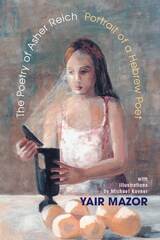 The Poetry of Asher Reich: Portrait of a Hebrew Poet
Yair Mazor
University of Wisconsin Press, 2004 A rich union of image and word, this striking book introduces English-speaking audiences to a full range of poetry by Asher Reich, one of Israel’s most celebrated contemporary poets, paired with evocative drawings by renowned Israeli artist Michael Kovner. Yair Mazor, a leading scholar of Hebrew literature, provides readers with an introduction to Reich’s work and its prominent position within the panorama of modern literature in Hebrew.
Asher Reich’s poetry has been characterized as vivid, vibrant, passionate, and expressionistic. Dominated by themes of stormy sensuality and frank sexuality, his dramatic imagery and metaphors interweave Mishnaic, Talmudic, and Biblical references in a colorful, complex poetic texture. The beautiful simplicity of Kovner’s drawings—depicting female figures and natural landscapes—resonates throughout the book. Tender, stark, and striking, the drawings illustrate life’s fragility and grace with a subtlety and dignity that complements Reich’s sensitive style.
Presenting contemporary Hebrew poetry, modern Israeli art, and informed literary commentary in an engaging format, this book promises to delight a broad audience of readers.
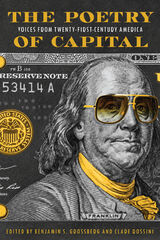 The Poetry of Capital: Voices from Twenty-First-Century America
Edited by Benjamin S. Grossberg and Clare Rossini
University of Wisconsin Press, 2021 What do we talk about when we talk about money? As the forty-four poets in this brilliant new anthology show, the answer is everything. From the impact of global economic crises to local tag sales, from the subversive effects of dark money on politics to the freedom granted by a summer job, from sweatshops where our clothes are produced to the malls where they are sold, this volume gets to the heart of Americans’ relationships to capital as only poetry can.
Editors Benjamin S. Grossberg and Clare Rossini selected poems to reflect broad themes of labor, history and economic forces, social equity, and the environment. In addition, they asked each poet to provide a brief prose comment to introduce their work. Some give broad statements on the nature of wealth in America today; others are intimate, offering insight into how life experiences inform their writing; still others reflect on the art of poetry itself and its unique power to speak to economic pressures of the moment.
Contributors include Mary Jo Bang, Xochiquetzal Candelaria, Alan Chazaro, Mark Doty, Denise Duhamel, Tony Hoagland, Yusef Komunyakaa, Dorianne Laux, Kimiko Hahn, Sharon Olds, George Perreault, Robert Pinsky, Minnie Bruce Pratt, Afaa Michael Weaver, David Wojahn, and others.
The Poetry of George Herbert
Helen Vendler
Harvard University Press, 1975 The transparent beauty and effortless grace of George Herbert's poetry have made it seem almost devoid of art. In this comprehensive reading of Herbert, Helen Vendler reveals the complexity inherent in the apparent simplicity of his lyrics. Herbert appears here, both in introspective and in devotional verse, as a poet of universal feeling whose work can be given a human interpretation independent of any religious conviction.
Very nearly all of Herbert's poems are treated in this finely written, forcefully argued study. By looking at the poet's less successful attempts as well as at his best work, Vendler is able to trace his surest line of development in the various modes and forms in which he worked. Comparisons with the work of his adapters and imitators make apparent the perfection and finish of his lines, their interior intellectual and psychological harmony.
 The Poetry of George Herbert
Helen Vendler
Harvard University Press “I cannot imagine that anybody who cares for Herbert, or more generally for poetry, will fail to learn something from this book.”
—Frank Kermode, New York Times Book Review
A comprehensive reevaluation of the eminent metaphysical poet discovers the human passions warring with his saintly visions of divine harmony.
George Herbert’s admission to the canon of English poetry was hard won. Though acclaimed in his own time as an exemplar of pious conformity to Anglican orthodoxies, the distinctive personality and profound creativity of Herbert’s lyrics went largely unremarked. Even after he was rediscovered—first by Samuel Taylor Coleridge, later by T. S. Eliot—he was seen as exceptional mainly for the depth of his religious conviction: inspiring to devout Christians, but otherwise a resoundingly minor poet.
Helen Vendler gives us a different, more expansive Herbert. In place of a doctrinal poet seeking the ideal form for conventional religious beliefs, she shows us one whose exuberant search for experiential truth exceeds any dogmatic content. Scripture and traditional liturgies are his starting point, but he is propelled by a restless intellect that is never satisfied with received wisdom. “My thoughts,” Herbert writes, “are all a case of knives.” Yet his faith remains unshaken. Herbert’s singular genius, Vendler argues, is his ability to embody in verse the unresolved tensions between customary belief and personal meaning, between self-effacing deference to God and egotistic protest, between anodyne cliché and trenchant insight. His poems constantly double back, reject their initial premises, and redefine their topic to approach, always unsteadily, the truth of his own feeling.
Covering nearly all of Herbert’s poetry, from his devotional verse to his allegorical and speculative lyrics, Vendler demonstrates his incomparable significance, not only as a Christian poet but also as a poet of universal feeling—one to be prized by any reader moved by an authentic voice.
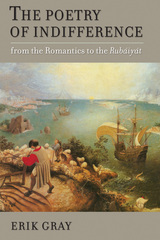 The Poetry of Indifference: From the Romantics to the Rubaiyat
Erik Irving Gray
University of Massachusetts Press, 2005 Indifference is a common, even indispensable element of human experience. But it is rare in poetry, which is traditionally defined by its direct opposition to indifference—by its heightened emotion, consciousness, and effort. This definition applies especially to English poets of the nineteenth century, heirs to an age that predicated aesthetics on moral sentiment or feeling. Yet it was in this period, Erik Gray argues, that a concentrated strain
of poetic indifference began to emerge.
The Poetry of Indifference analyzes nineteenth-century works by Wordsworth, Keats, Byron, Tennyson, Robert Browning, and Edward FitzGerald, among others—works that do not merely declare themselves to be indifferent but formally enact the indifference they describe. Each poem consciously disregards some aspect of poetry that is usually considered to be crucial or definitive, even at the risk of seeming "indifferent" in the sense of "mediocre." Such gestures discourage critical attention, since the poetry of indifference refuses to make claims for itself.
This is particularly true of FitzGerald's Rubáiyát, one of the most popular poems of the nineteenth century, but one that recent critics have almost entirely ignored. In concentrating on this underexplored mode of poetry, Gray not only traces a major shift in recent literary history, from a Romantic poetics of sympathy to a Modernist poetics of alienation, but also considers how this literature can help us understand the sometimes embarrassing but unavoidable presence of indifference in our lives.
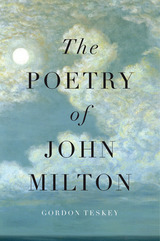 The Poetry of John Milton
Gordon Teskey
Harvard University Press, 2015 John Milton is regarded as the greatest English poet after Shakespeare. Yet for sublimity and philosophical grandeur, Milton stands almost alone in world literature. His peers are Homer, Virgil, Dante, Wordsworth, and Goethe: poets who achieve a total ethical and spiritual vision of the world. In this panoramic interpretation, the distinguished Milton scholar Gordon Teskey shows how the poet’s changing commitments are subordinated to an aesthetic that joins beauty to truth and value to ethics. The art of poetry is rediscovered by Milton as a way of thinking in the world as it is, and for the world as it can be.
Milton’s early poems include the heroic Nativity Ode; the seductive paired poems “L’Allegro” and “Il Penseroso”; the mythological pageant Comus, with its comically diabolical enchanter and its serious debate on the human use of nature; and “Lycidas,” perhaps the greatest short poem in English and a prophecy of vast human displacements in the modern world. Teskey follows Milton’s creative development in three phases, from the idealistic transcendence of the poems written in his twenties to the political engagement of the gritty, hard-hitting poems of his middle years. The third phase is that of “transcendental engagement,” in the heaven-storming epic Paradise Lost, and the great works that followed it: the intense intellectual debate Paradise Regained, and the tragedy Samson Agonistes.
The Poetry of John Tyndall
Edited by Roland Jackson, Nicola Jackson, and Daniel Brown
University College London, 2020 John Tyndall (c. 1822–1893), is best known as a leading natural philosopher and trenchant public intellectual of the Victorian age, who spoke and wrote controversially on the relationship between science and religion. Far fewer people know that he also wrote poetry.
The Poetry of John Tyndall contains annotated transcriptions of all 76 of Tyndall’s extant poems, the majority of which have not been published before. The poems are complemented by an extended introduction, which explores what the poems can tell us about Tyndall’s self-fashioning, his values and beliefs, and the role of poetry for him and his circle. More broadly, this introduction addresses the relationship between the scientific and poetic imaginations, and wider questions of the purpose of poetry in relation to science and religion in the nineteenth century.
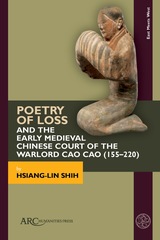 Poetry of Loss and the Early Medieval Chinese Court of the Warlord Cao Cao (155–220)
Hsiang-Lin Shih
Arc Humanities Press, 2024 Upon the fall of the Han empire, the warlord Cao Cao (155–220) established a new political domain. The Cao court became known for its accomplished writers, including the warlord himself and two of his sons, Cao Pi (187–226) and Cao Zhi (192–232). Afflicted by sibling rivalry and an epidemic, these poets distinguished themselves by writing about frustration, sorrow, and death. Yet, as observed in Poetry of Loss, the poets drew on experiences of loss to reinvent the court, its collective memory, and its ways of remembering. While addressing melancholy and nostalgia, they also meditated on such themes as aging, widowhood, and parental loss. In this book, Hsiang-Lin Shih reconstructs a network of courtly texts and uncovers new inter-and-intra textual elements of the works. She shows how writers at the Cao court employed their poetic art to establish, develop, and sustain a community in each difficult moment of their intertwined lives.
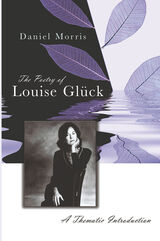 The Poetry of Louise Glück: A Thematic Introduction
Daniel Morris
University of Missouri Press, 2021 A dominant figure in American poetry for more than thirty-five years, Louise Glück has been the recipient of virtually every major poetry award. She won the Nobel Prize in Literature in 2020 and was named U.S. poet laureate for 2003–2004. In a full-length study of her work, Daniel Morris explores how this prolific poet utilizes masks of characters from history, the Bible, and even fairy tales. Morris treats Glück’s persistent themes—desire, hunger, trauma, survival—through close reading of her major book-length sequences from the 1990s: Ararat, Meadowlands, and The Wild Iris. An additional chapter devoted to The House on Marshland (1975) shows how its revision of Romanticism and nature poetry anticipated these later works. Seeing Glück’s poems as complex analyses of the authorial self via sustained central metaphors, Morris reads her poetry against a narrative pattern that shifts from the tones of anger, despair, and resentment found in her early Firstborn to the resignation of Ararat—and proceeds in her latest volumes, including Vita Nova and Averno, toward an ambivalent embrace of embodied life. By showing how Glück’s poems may be read as a form of commentary on the meanings of great literature and myth, Morris emphasizes her irreverent attitude toward the canons through which she both expresses herself and deflects her autobiographical impulse. By discussing her sense of self, of Judaism, and of the poetic tradition, he explores her position as a mystic poet with an ambivalent relationship to religious discourse verging on Gnosticism, with tendencies toward the ancient rabbinic midrash tradition of reading scripture. He particularly shows how her creative reading of past poets expresses her vision of Judaism as a way of thinking about canonical texts. The Poetry of Louise Glück is a quintessential study of how poems may be read as a form of commentary on the meanings of great literature and myth. It clearly demonstrates that, through this lens of commentary, one can grasp more firmly the very idea of poetry itself that Glück has spent her career both defining and extending.
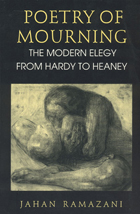 Poetry of Mourning: The Modern Elegy from Hardy to Heaney
Jahan Ramazani
University of Chicago Press, 1994 Called the "mother of beauty" by Wallace Stevens, death has been perhaps the favorite muse of modern poets. From Langston Hughes's lynch poems to Sylvia Plath's father elegies, modern poetry has tried to find a language of mourning in an age of mass death, religious doubt, and forgotten ritual. For this reason, Jahan Ramazani argues, the elegy, one of the most ancient of poetic genres, has remained one of the most vital to modern poets.
Through subtle readings of elegies, self-elegies, war poems, and the blues, Ramazani greatly enriches our critical understanding of a wide range of poets, including Thomas Hardy, Wilfred Owen, Wallace Stevens, Langston Hughes, W. H. Auden, Sylvia Plath, and Seamus Heaney. He also interprets the signal contributions to the American family elegy of Robert Lowell, Allen Ginsberg, Anne Sexton, John Berryman, Adrienne Rich, Michael Harper, and Amy Clampitt. Finally, he suggests analogies between the elegy and other kinds of contemporary mourning art—in particular, the AIDS Memorial Quilt and the Vietnam Veterans Memorial.
Grounded in genre theory and in the psychoanalysis of mourning, Ramazani's readings also draw on various historical, formal, and feminist critical approaches. This book will be of interest to anyone concerned with the psychology of mourning or the history of modern poetry.
"Consists of full, intelligent and lucid exposition and close reading. . . . Poetry of Mourning is itself a welcome contribution to modern poetry's search for a 'resonant yet credible vocabulary of grief in our time."—Times Literary Supplement
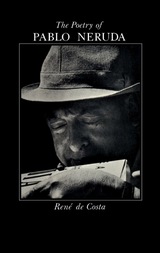 The Poetry of Pablo Neruda
René de Costa
Harvard University Press, 1979 “I undertook the greatest departure from myself: creation, wanting to illuminate words.” So wrote Chilean poet Pablo Neruda in 1924 at the start of a long and brilliant career that was to bring him international renown—and, in 1971, two years before his death, the Nobel Prize in Literature. This work, intended for the general reader as well as the specialist, explores the sensitive complexities of the varied, sometimes contradictory, and always exciting writings produced during fifty years. Neruda’s output throughout his long literary life was phenomenal, and certain volumes have already become modern-day classics; it is these that René de Costa concentrates on. After describing the reception of each book at the time of publication, he evaluates its importance among Neruda’s oeuvre and, through the use of carefully selected Spanish verses, all translated into English, makes the reader aware of the range and aesthetic significance of the poet’s work.
Midway through his career as poet-diplomat, Neruda joined the Communist Party and became a poet-politician, a fact that far too often has colored the reception of his literary efforts. Here, for perhaps the first time, is a book that rises above such tendentious criticism to give an impartial view of the poet’s political and nonpolitical writings. The discerning reader is left with a heightened respect for and appreciation of the man who believed that “Poetry is like bread, and it must be shared…by everyone in our vast, incredible, extraordinary family of man.”
 The Poetry of Pope’s Dunciad
John E. Sitter
University of Minnesota Press, 1972
The Poetry of Pope's Dunciad was first published in 1972. Minnesota Archive Editions uses digital technology to make long-unavailable books once again accessible, and are published unaltered from the original University of Minnesota Press editions.
Alexander Pope's last and longest poem, the Dunciad, is also his most difficult. Attempting to provide the kind of "second reading" that Pope himself felt the work needed, Professor Sitter approaches the poem as an enduring artistic achievement rather than occasional satire (as has been the case in most previous studies). Pope recognized the complexity of the Dunciad when he wrote to a friend, a year after its initial publication, that "the poem itself will bear a second reading, or (to express myself more justly and modestly) will be better borne at the second than the first reading." It is this poetic complexity which the present study helps to clarify.
Professor Sitter considers the imagery, structure, and conception of the poem. In the first chapter, which is almost exclusively critical, he analyzes patterns of imagery and metaphor as they occur throughout the four books of the poem. In the second chapter he considers Pope's poetic practice and irony against the larger background of eighteenth-century ideas of epic and heroic poetry. In the third and final chapter he compares the Dunciad with Pope's much earlier poem The Temple of Fortune.Here he defines the iconographic mode and allegorical form of the Dunciad and places the poem in the context of Pope's sometimes unclassical concern for "visionary" poetry. There are a bibliography and notes.
The study is concerned mainly with the finished version of the Dunciad which was published in 1743, the edition which, as Professor Sitter explains, Pope regarded as authoritative. Earlier versions were published in 1728 and 1729.
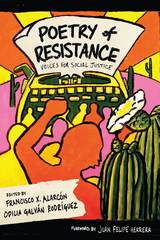 Poetry of Resistance: Voices for Social Justice
Edited by Francisco X. Alarcón and Odilia Galván Rodríguez
University of Arizona Press, 2016 On April 20, 2010, nine Latino students chained themselves to the main doors of the Arizona State Capitol in an act of civil disobedience to protest Arizona’s SB 1070. Moved by the students’ actions, that same day Francisco X. Alarcón responded by writing a poem in Spanish and English titled “Para Los Nueve del Capitolio/ For the Capitol Nine,” which he dedicated to the students. The students replied to the poem with a collective online message. To share with the world what was taking place, Alarcón then created a Facebook page called “Poets Responding to SB 1070” and posted the poem, launching a powerful and dynamic forum for social justice.
Since then, more than three thousand original contributions by poets and artists from around the globe have been posted to the page. Poetry of Resistance offers a selection of these works, addressing a wide variety of themes, including racial profiling, xenophobia, cultural misunderstanding, violence against refugees, shared identity, and much more. Contributors include distinguished poets such as Francisco Aragón, Devreaux Baker, Sarah Browning, Lorna Dee Cervantes, Susan Deer Cloud, Sharon Dubiago, Martín Espada, Genny Lim, Pam Uschuk, and Alma Luz Villanueva.
Bringing together more than eighty writers, the anthology powerfully articulates the need for change and the primacy of basic human rights. Each poem shows the heartfelt dedication these writers and artists have to justice in a world that has become larger than borders. Poetry of Resistance is a poetic call for tolerance, reflection, reconciliation, and healing.
The Poetry of the American Civil War
Lee Steinmetz
Michigan State University Press, 2013 Deeply affecting and diverse in perspective, The Poetry of the American Civil War is the first comprehensive volume to focus entirely on poetry written and published during the Civil War. Of the nearly one thousand books of poetry published in the 1860s, some two hundred addressed the war in some way, and these collectively present a textured portrait of life during the conflict. The poets represented here hail from the North and the South, and at times mirror each other uncannily. Among them are housewives, doctors, preachers, bankers, journalists, and teachers. Their verse reflects the day-to-day reality of war, death, and destruction, and it contemplates questions of faith, slavery, society, patriotism, and politics. This is an essential volume for poetry lovers, historians, and Civil War enthusiasts alike.
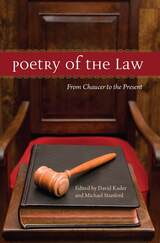 Poetry of the Law: From Chaucer to the Present
David Kader
University of Iowa Press, 2010 Since the time of Blackstone's "Farewell," poetry has been seen as celestial, pastoral, solitary, and mellifluous; law as venerable, social, urban, and cacophonous. This perception has persisted even to the present, with the bourgeoning field of law and literature focusing almost exclusively on fiction and drama. Poetry of the Law, however, reveals the richness of poetry about the law.
Poetry of the Law is the first serious anthology of law-related poetry ever published in the United States. As the editors make clear, though, serious need not imply solemn. Instead, David Kader and Michael Stanford have assembled a surprisingly capacious collection of 100 poems from the 1300s to the present. Set in courtrooms, lawyers’ offices, law-school classrooms, and judges’ chambers; peopled with attorneys, the imprisoned (both innocent and guilty), judges, jurors, witnesses, and law-enforcement officers; based on real events (think “Scottsboro”) or exploring the complexity of abstract legal ideas; the poems celebrate justice or decry the lack of it, ranging in tone from witty to wry, sad to celebratory, funny to infuriating. Poetry of the Law is destined to become an authoritative source for years to come.
Contributors Include: W. H. Auden Robert Burns Lewis Carroll John Ciardi Daniel Defoe Emily Dickinson John Donne Rita Dove Ralph Waldo Emerson Martín Espada Thomas Hardy Seamus Heaney A. E. Housman Langston Hughes Ben Jonson X. J. Kennedy Yusef Komunyakaa Ted Kooser D. H. Lawrence Edgar Lee Masters W. S. Merwin Edna St. Vincent Millay Sir Walter Raleigh Muriel Rukeyser Carl Sandburg William Shakespeare Jonathan Swift Mona Van Duyn Oscar Wilde William Carlos Williams from “The Hanging Judge” by Eavan Boland Come to the country where justice is seen to be done, Done daily. Come to the country where Sentence is passed by word of mouth and raw Boys split like infinitives. Look, here We hanged our son, our only son And hang him still and still we call it law.
Poetry of the People: Poems to the President, 1929–1945
Donald W. Whisenhunt
University of Wisconsin Press, 1996 The Great Depression was one of the most traumatic events of recent American history. Donald W. Whisenhunt has analyzed, and provided context for, the vast collection of poetry and song lyrics in the Hoover and Roosevelt presidential libraries to assess another aspect of American public opinion.
The poets of the era voiced their opinions on virtually every subject. They wrote about New Deal agencies, they praised and condemned Hoover and Roosevelt. They expressed their views about the Supreme Court, the third term, and the approaching war in Europe. The resulting study, arranged topically rather than chronologically, provides a unique perspective on American popular culture and American politics.
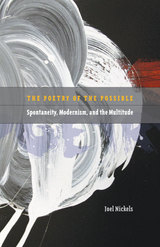 Poetry of the Possible: Spontaneity, Modernism, and the Multitude
Joel Nickels
University of Minnesota Press, 2012 The Poetry of the Possible challenges the conventional image of modernism as a socially phobic formation, arguing that modernism’s abstractions and difficulties are ways of imagining unrealized powers of collective self-organization. Establishing a conceptual continuum between modernism and contemporary theorists such as Paulo Virno, Michael Hardt, Antonio Negri, and Alain Badiou, Joel Nickels rediscovers modernism’s attempts to document the creative potenza of the multitude. By examining scenes of collective life in works by William Carlos Williams, Wyndham Lewis, Laura Riding, and Wallace Stevens, Nickels resurrects modernism’s obsession with constituent power: the raw, indeterminate capacity for reciprocal counsel that continually constitutes and reconstitutes established political regimes. In doing so, he reminds us that our own attempts to imagine leaderless networks of collective initiative are not so much breaks with modernist forms of knowledge as restagings of some of modernism’s most radical moments of political speculation. Setting modernism’s individual and collective models of spontaneity in dialogue with theorists of political spontaneity such as Antonio Gramsci, Herbert Marcuse, and Theodor Adorno, Nickels retells the story of modernism as the struggle to represent powers of collective self-organization that lie outside established regimes of political representation.
Poetry On and Off the Page: Essays for Emergent Occasions
Marjorie Perloff
Northwestern University Press, 1998 The fourteen essays that make up this collection have as their common theme a reconsideration of the role historical and cultural change has played in the evolution of twentieth-century poetry and poetics. Committed to the notion that, in John Ashbery's words, "You can't say it that way anymore," Poetry On & Off the Page describes the formations and transformations of literary and artistic discourses, and traces these discourses as they have evolved in their dialogue with history, culture, and society. The volume is testimony to the important role that contemporary artistic practice will continue to play as we move into the twenty-first century.
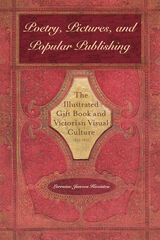 Poetry, Pictures, and Popular Publishing: The Illustrated Gift Book and Victorian Visual Culture, 1855–1875
Lorraine Janzen Kooistra
Ohio University Press, 2011 In Poetry, Pictures, and Popular Publishing eminent Rossetti scholar Lorraine Janzen Kooistra demonstrates the cultural centrality of a neglected artifact: the Victorian illustrated gift book. Turning a critical lens on “drawing-room books” as both material objects and historical events, Kooistra reveals how the gift book’s visual/verbal form mediated “high” and popular art as well as book and periodical publication. A composite text produced by many makers, the poetic gift book was designed for domestic space and a female audience; its mode of publication marks a significant moment in the history of authorship, reading, and publishing. With rigorous attention to the gift book’s aesthetic and ideological features, Kooistra analyzes the contributions of poets, artists, engravers, publishers, and readers and shows how its material form moved poetry into popular culture. Drawing on archival and periodical research, she offers new readings of Eliza Cook, Adelaide Procter, and Jean Ingelow and shows the transatlantic reach of their verses. Boldly resituating Tennyson’s works within the gift-book economy he dominated, Kooistra demonstrates how the conditions of corporate authorship shaped the production and receptionof the laureate’s verses at the peak of his popularity. Poetry, Pictures, and Popular Publishing changes the map of poetry’s place—in all its senses—in Victorian everyday life and consumer culture.
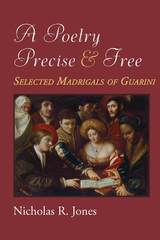 A Poetry Precise and Free: Selected Madrigals of Guarini
Nicholas R. Jones
University of Michigan Press, 2018 A Poetry Precise and Free collects 150 lyric poems by the Renaissance Italian poet Giovanni Battista Guarini in new translations, accompanied by the Italian originals and commentary that will enlighten and engage both scholars and general readers. Guarini’s madrigals provide insight into northern Italian court culture of the late Renaissance, when poetry and music were enjoyed as companion arts. Hundreds of composers of Guarini’s day set his lyric poems to music. Primarily known today in their vocal settings, most famously those of Claudio Monteverdi, the poems merit appreciation in their own right.
This volume is organized into ten sections, grouping the madrigals around themes such as the anguish of passion, the asymmetry of desire, the incursions of jealousy, and the possibility of mutual bliss. Nicholas R. Jones renders Guarini’s poetry into accessible contemporary English verse that nevertheless stays true to the substance and form of the original texts, reflecting their roots in the Petrarchan poetic tradition and displaying the emotion and musicality that made these lyrics so popular from the start. A substantive introduction provides cultural context for the madrigals and their musical settings; brief commentaries follow each translation to illuminate aspects of poetic and rhetorical craft. An extensive appendix lists the madrigal compositions that set these lyrics for vocal performance.
The book fills a major gap in the scholarship on Guarini’s literary legacy. It will appeal to scholars of literature, Renaissance studies, and musicology, early-music performers, and general readers interested in poetry and classical music.
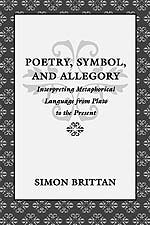 Poetry, Symbol, and Allegory: Interpreting Metaphorical Language from Plato to the Present
Simon Brittan
University of Virginia Press, 2003 "Poetry, Symbol, and Allegory offers an elegantly written and bracingly wide-ranging introduction to a crucial strand of the history of literary interpretation. Brittan has written a book that we need."--Adam Parkes, University of Georgia
Dealing with poetry is frequently problematic for the university teacher and student: although undergraduates are usually responsive to discussions about drama and prose, poetry often silences the classroom. Unless a poem provides references easily applicable to their own lives, many students feel they can't relate to the piece and are stymied. In particular, allegorical poetry produces tensions among the desire to find the meanings of the poet's symbolism, the fear of voicing a "wrong" interpretation, and a natural objection to perceived restrictions on interpretive freedom.
Poetry, Symbol, and Allegory eases that dilemma by providing a historical overview of theories of interpretation as they apply to symbol and allegory in poetry, thereby reclaiming valuable and useful methods of analyzing poems. Beginning with Plato and Aristotle, Simon Brittan moves from classical theory to the lesser-known medieval exegetical theories of such notables as Augustine, Aquinas, and Origen; addresses theory pertaining to Renaissance Italy and Dante, English theory of the Middle Ages, the sixteenth and seventeenth centuries, and the Romantic period; and concludes by weighing the poetry of T. E. Hulme, T. S. Eliot, and Ezra Pound on the larger historical scale of literary theory. By acknowledging interpretive theories of the past, Brittan provides a proper historical frame of reference in which today's student can better understand figurative language in poetry.
--------------------------------------------------------------------------------
Simon Brittan is an independent scholar who divides his time between England and Michigan. He has taught at the University of East Anglia and in the Department for Continuing Education at the University of Oxford and written for Renaissance Forum, the Times Literary Supplement, and Gravesiana.
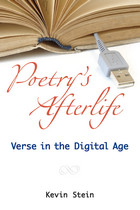 Poetry's Afterlife: Verse in the Digital Age
Kevin Stein
University of Michigan Press, 2010 "The great pleasure of this book is the writing itself. Not only is it free of academic and ‘lit-crit' jargon, it is lively prose, often deliciously witty or humorous, and utterly contemporary. Poetry's Afterlife has terrific classroom potential, from elementary school teachers seeking to inspire creativity in their students, to graduate students in MFA programs, to working poets who struggle with the aesthetic dilemmas Stein elucidates, and to teachers of poetry on any level."
--- Beckian Fritz Goldberg, Arizona State University "Kevin Stein is the most astute poet-critic of his generation, and this is a crucial book, confronting the most vexing issues which poetry faces in a new century."
---David Wojahn, Virginia Commonwealth University At a time when most commentators fixate on American poetry's supposed "death," Kevin Stein's Poetry's Afterlife instead proposes the vitality of its aesthetic hereafter. The essays of Poetry's Afterlife blend memoir, scholarship, and personal essay to survey the current poetry scene, trace how we arrived here, and suggest where poetry is headed in our increasingly digital culture. The result is a book both fetchingly insightful and accessible. Poetry's spirited afterlife has come despite, or perhaps because of, two decades of commentary diagnosing American poetry as moribund if not already deceased. With his 2003 appointment as Illinois Poet Laureate and his forays into public libraries and schools, Stein has discovered that poetry has not given up its literary ghost. For a fated art supposedly pushing up aesthetic daisies, poetry these days is up and about in the streets, schools, and universities, and online in new and compelling digital forms. It flourishes among the people in a lively if curious underground existence largely overlooked by national media. It's this second life, or better, Poetry's Afterlife, that his book examines and celebrates. Kevin Stein is Caterpillar Professor of English and Director of the Creative Writing Program at Bradley University and has served as Illinois Poet Laureate since 2003, having assumed the position formerly held by Gwendolyn Brooks and Carl Sandburg. He is the author of numerous books of poetry and criticism. digitalculturebooksis an imprint of the University of Michigan Press and the Scholarly Publishing Office of the University of Michigan Library dedicated to publishing innovative and accessible work exploring new media and their impact on society, culture, and scholarly communication. Visit the website at www.digitalculture.org.
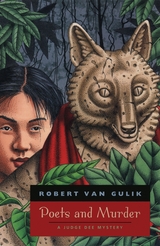 Poets and Murder: A Judge Dee Mystery
Robert van Gulik
University of Chicago Press, 1968 A double murder confounds everyone in this mystery--but not the beloved detective Judge Dee, whom the Los Angeles Times ranked with Sherlock Holmes
Judge Dee, the master detective of seventh-century China, sets out to solve a puzzling double murder and discovers complex passions lurking beneath the placid surface of academic life. A mild-mannered student is rumored to have been slain by a fox-demon, while a young dancer meets her death as she dresses to perform for the magistrate's illustrious dinner guests—an obese Zen monk revered for his calligraphy, a beautiful poetess accused of murder, and the past president of the imperial academy. To connect the present crimes with betrayals and adulteries from decades past, the clever judge must visit a high-class brothel and the haunted shrine of the Black Fox. From the moment the young scholar is found dead on the eve of the Autumn Festival, the pace never lets up.
Poets and Playwrights: Shakespeare, Jonson, Spenser, Milton
Elmer Edgar Stoll
University of Minnesota Press, 1967
Poets and Playwrights was first published in 1967. Minnesota Archive Editions uses digital technology to make long-unavailable books once again accessible, and are published unaltered from the original University of Minnesota Press editions.
Poets and Playwrights is a collection of nine essays by the eminent Shakespearean scholar and critic, the late Elmer Edgar Stoll. In this work, which was first published by the University of Minnesota Press in 1930, Professor Stoll presents his maturest consideration of the art of the poets and playwrights of his subtitle—Shakespeare, Jonson, Spenser, and Milton. The most extensive essay, "Shakespeare and the Moderns," includes, in Mr. Stoll's words, "a review of Shakespeare as I conceive him, in order the better to compare him with those who in some respect or other are his peers."
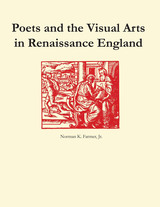 Poets and the Visual Arts in Renaissance England
By Norman K. Farmer, Jr.
University of Texas Press, 1984 In the twentieth century, the pioneering work of such art historians as Erwin Panofsky and Edgar Wind heightened our awareness of the relationship between Renaissance literature and the visual arts. By focusing on that relationship in the work of such poets as Sir Philip Sidney, John Donne, Richard Crashaw, Edmund Waller, and Robert Herrick, Norman K. Farmer, Jr., convincingly shows that they and other writers of the late sixteenth and early seventeenth centuries in England wrote with a lively and creative sense of the visual—a sense richly informed by the theory and practice of Renaissance art. Farmer begins by describing the powerful visual matrix that underlies the narrative structure of Sidney's New Arcadia. He compares the role of the visual in the poetry of Donne and Ben Jonson, and demonstrates how works by both Thomas Carew and Lord Herbert exhibit poetic invention according to familiar Renaissance pictorial themes. Herrick's Hesperides is shown to be the major seventeenth-century poetic application of the Horatian idea ut pictura poesis. A special feature of this gracefully written and enlightening volume is Farmer's discussion of Lady Drury's oratory at Hawstead Hall. Published here for the first time are photographs of this uniquely decorated oratory, in which themes from a variety of English and Continental emblem books were painted on the walls of a room apparently designed for private meditation.
 Poets as Readers in Nineteenth-Century France: Critical Reflections
Edited by Joseph Acquisto, Adrianna M. Paliyenko, and Catherine Witt
University of London Press, 2015 This volume of essays focuses on how poets approach reading as a notion and a practice that both inform their writing and their relationship to their readers. The nineteenth century saw a broadened and increasingly self-conscious concern with reading as an interpretive and political act, with significant implications for poets' individual practice, which they often forged in dialogue with other poets and artists of the time. Covering the 1830s to the late 1990s, a period rich in poetic innovation, the essays examine a wide range of authors and their diverse approaches to reading as inscribed in - and related to - creative writing, and articulate the many ways in which reading developed as an active engagement key to the critical thought that drove poetic creation at the dawn of aesthetic modernity. Joseph Acquisto is Professor of French at the University of Vermont. Adrianna M. Paliyenko is the Charles A. Dana Professor of French at Colby College, Maine. Catherine Witt is Associate Professor of French at Reed College, Oregon (USA).
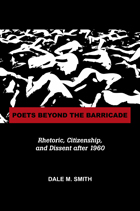 Poets Beyond the Barricade: Rhetoric, Citizenship, and Dissent after 1960
Dale M. Smith
University of Alabama Press, 2012 Normal0falsefalsefalseEN-USX-NONEX-NONEMicrosoftInternetExplorer4 Since the cultural conflicts over the Vietnam War and civil rights protests, poets and poetry have consistently raised questions surrounding public address, social relations, friction between global policies and democratic institutions, and the interpretation of political events and ideas. In Poets Beyond the Barricade: Rhetoric, Citizenship, and Dissent after 1960, Dale Smith makes meaningful links among rhetoric, literature, and cultural studies, illustrating how poetry and discussions of it shaped public consciousness from the socially volatile era of the 1960s to the War on Terror of today. The book begins by inspecting the correspondence and poetry of Robert Duncan and Denise Levertov, which embodies competing perspectives on the role of writers in the Vietnam War and in the peace movement. The work addresses the rational-critical mode of public discourse initiated by Jürgen Habermas and the relevance of rhetorical studies to literary practice. Smith also analyses letters and poetry by Charles Olson that appeared in a New England newspaper in the 1960sand drew attention to city management conflicts, land-use issues, and architectural preservation. Public identity and U.S. social practice are explored in the 1970s and ‘80s poetry of Lorenzo Thomas and Edward Dorn, whose poems articulate tensions between private and public life. The book concludes by examining more recent attempts by poets to influence public reflection on crucial events that led to the wars in Iraq and Afghanistan. By using digital media, public performance, and civic encounters mediated by texts, these poetic initiatives play a critical role in the formation of cultural identity today. Normal0falsefalsefalseMicrosoftInternetExplorer4
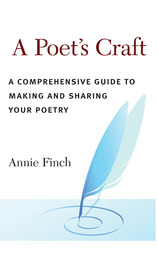 A Poet's Craft: A Comprehensive Guide to Making and Sharing Your Poetry
Annie Finch
University of Michigan Press, 2012 A Poet's Craft transcends the limitations of current books, combining the best of three types of poetry-writing guides: textbooks for academic use, general guides to writing poetry, and guides to writing in form. Like textbooks, it includes poetry-writing exercises and discussion of classic and contemporary poems as examples, and is logically organized to provide a complete overview of the elements of poetry writing, from diction to trope to free verse. Like general poetry guides, it has a tone lively and mature enough for the nonundergraduate, and includes sections on journaling and inspiration, revision, publishing, and even how to assemble a poetry book. Like form guides, A Poet's Craft provides an introduction to meter and to writing formal poetry. Finch's book goes further than any poetry-writing guide now available to give readers a thorough, eclectic, and exciting introduction to every aspect of the art of poetry.
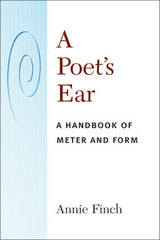 A Poet's Ear: A Handbook of Meter and Form
Annie Finch
University of Michigan Press, 2013 Praise for Annie Finch “A self-proclaimed ‘postmodern poetess,’ Annie Finch lives up to the moniker, presenting a simultaneously thorough and mercurial array of musings on poetics focusing on form and meter, remaining three beats ahead of the rank-and-file herd of traditional prosodists.”
—Art New England For beginning or advanced students of poetry focused on the art of structuring a poem, A Poet’s Ear serves as a handbook to writing in numerous fixed forms. Here, Annie Finch’s remarkably in-depth introduction to poetic form in English opens a new and exciting world to contemporary poets. From the basic meters and traditional European forms of the ballad and the sonnet to poetic forms brought to English from worldwide cultures and postmodern forms and techniques, A Poet’s Ear serves as both a survey and a guide to the exploration of poetic form. More diverse and comprehensive than any other form handbook, A Poet’s Ear will be essential to the serious student of poetry.
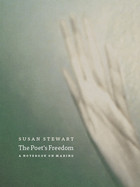 The Poet's Freedom: A Notebook on Making
Susan Stewart
University of Chicago Press, 2011 Why do we need new art? How free is the artist in making? And why is the artist, and particularly the poet, a figure of freedom in Western culture? The MacArthur Award–winning poet and critic Susan Stewart ponders these questions in The Poet’s Freedom. Through a series of evocative essays, she not only argues that freedom is necessary to making and is itself something made, but also shows how artists give rules to their practices and model a self-determination that might serve in other spheres of work. Stewart traces the ideas of freedom and making through insightful readings of an array of Western philosophers and poets—Plato, Homer, Marx, Heidegger, Arendt, Dante, and Coleridge are among her key sources. She begins by considering the theme of making in the Hebrew Scriptures, examining their accountof a god who creates the world and leaves humans free to rearrange and reform the materials of nature. She goes on to follow the force of moods, sounds, rhythms, images, metrical rules, rhetorical traditions, the traps of the passions, and the nature of language in the cycle of making and remaking. Throughout the book she weaves the insight that the freedom to reverse any act of artistic making is as essential as the freedom to create. A book about the pleasures of making and thinking as means of life, The Poet’s Freedom explores and celebrates the freedom of artists who, working under finite conditions, make considered choices and shape surprising consequences. This engaging and beautifully written notebook on making will attract anyone interested in the creation of art and literature.
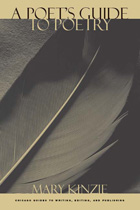 A Poet's Guide to Poetry
Mary Kinzie
University of Chicago Press, 1999 A Poet's Guide to Poetry brings Mary Kinzie's expertise as poet, critic, and director of the creative writing program at Northwestern University to bear in a comprehensive reference work for any writer wishing to better understand poetry. Detailing the formal concepts of poetry and methods of poetic analysis, she shows how the craft of writing can guide the art of reading poems. Using examples from the major traditions of lyric and meditative poetry in English from the medieval period to the present, Kinzie considers the sounds and rhythms of poetry along with the ideas and thought-units within poems. Kinzie shares her own successful classroom tactics—encouraging readers to approach a poem as if it were provisional.
The three parts of A Poet's Guide to Poetry lead the reader through a carefully planned introduction to the ways we understand poetry. The first section provides careful, step-by-step instruction to familiarize students with the formal elements of poems, from the most obvious feature through the most devious.
Part I presents the style, grammar, and rhetoric of poems with a wealth of examples from various literary periods.
Part II discusses the way the elements of a poem are controlled in time through a careful explanation and exploration of meter and rhythm. The "four freedoms" of free verse are also examined.
Part III closes the book with helpful practicum chapters on writing in form. Included here are writing exercises for beginning as well as advanced writers, a dictionary of poetic terms replete with poetry examples, and an annotated bibliography for further explanatory reading.
This useful handbook is an ideal reference for literature and writing students as well as practicing poets.
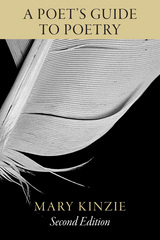 A Poet's Guide to Poetry, Second Edition
Mary Kinzie
University of Chicago Press, 2013 In A Poet’s Guide to Poetry, Mary Kinzie brings her decades of expertise as poet, critic, and director of the creative writing program at Northwestern University to bear in a comprehensive reference work for any writer wishing to better understand poetry. Detailing the formal concepts of poetry and methods of poetic analysis, she shows how the craft of writing can guide the art of reading poems. Using examples from the major traditions of lyric and meditative poetry in English from the medieval period to the present, Kinzie considers the sounds and rhythms of poetry along with the ideas and thought-units within poems. Kinzie also shares her own successful classroom tactics that encourage readers to approach a poem as if it were provisional.
The three parts of A Poet’s Guide to Poetry lead the reader through a carefully planned introduction to the ways we understand poetry. The first section provides careful, step-by-step instruction to familiarize students with the formal elements of poems, from the most obvious feature through the most subtle. The second part carefully examines meter and rhythm, as well as providing a theoretical and practical overview of free verse. The final section offers helpful chapters on writing in form. Rounding out the volume are writing exercises for beginning and advanced writers, a dictionary of poetic terms, and a bibliography of further reading.
For this new edition, Kinzie has carefully reworked the introductory material and first chapter, as well as amended the annotated bibliography to include the most recent works of criticism. The updated guide also contains revised exercises and adjustments throughout the text to make the work as lucid and accessible as possible.
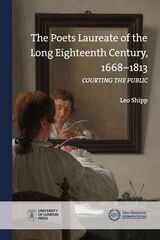 Poets Laureate in the Long Eighteenth Century, 1668-1813
Leo Shipp
University of London Press, 2022 A history of the development and importance of the office of poet laureate of Britain.
The office of the poet laureate of Britain was a highly prominent, relevant, and respectable institution throughout the long eighteenth century. First instituted for John Dryden in 1668, the laureateship developed from an honorific into a functionary office with a settled position in court, and in 1813 was bestowed upon Robert Southey, whose tenure transformed the office. Taking an interdisciplinary approach, this book examines the office’s institutional changes and public reception, the mechanics of each laureate’s appointment, and the works produced by the laureates before and after their appointments. It argues that the laureateship played a key part in some of the most vital trends in eighteenth-century culture.
At the core of the book is a new research paradigm that Leo Shipp calls the conceptual geography of culture. It shows that Britons routinely used spatial concepts to understand culture throughout the period, which became increasingly abstract over time. As part of this, Shipp shows, the court evolved from a concrete space in London to an abstract space capable of hosting the entire British public. The laureateship was a dynamic office positioned at the interface of court and public, evolving in line with its audiences. An important intervention in eighteenth-century historiography, this book presents a nuanced understanding of eighteenth-century culture and society, in which the laureateship exemplified the enduring centrality of the court to the British conceptual geography of culture.
 Poets of Reality: Six Twentieth-Century Writers
J. Hillis Miller
Harvard University Press Although many books deal individually with each of the major writers treated in Poets of Reality, none attempts through analyses of these particular men and their works, to identify the new directions taken by twentieth-century literature. J. Hillis Miller, challenging the assumption that modern poetry is merely the extension of an earlier romanticism, presents critical studies of the six central figures—Joseph Conrad, W. B. Yeats, T. S. Eliot, Dylan Thomas, Wallace Stevens, and William Carlos Williams—who played key roles in evolving a poetry in which “reality comes to be present to the senses, and present in the words of the poem which ratify this possession.”
A new kind of poetry has appeared in the twentieth century, the author claims, a poetry which, growing out of romanticism and symbolism, goes far beyond it. The old generalizations about the nature and use of poetry are no longer applicable, and it is the gradual emergence of new forms, culminating in the work of Williams, that Miller traces and defines.
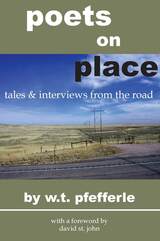 Poets On Place
W. T. Pfefferle
Utah State University Press, 2005 Out to see America and satisfy his travel bug, W. T. Pfefferle resigned from his position as director of the writing program at Johns Hopkins University and hit the road to interview sixty-two poets about the significance of place in their work. The lively conversations that resulted may surprise with the potential meanings of a seemingly simple concept. This gathering of voices and ideas is illustrated with photo and word portraits from the road and represented with suitable poems. The poets are James Harms, David Citino, Martha Collins, Linda Gregerson, Richard Tillinghast, Orlando Ricardo Menes, Mark Strand, Karen Volkman, Lisa Samuels, Marvin Bell, Michael Dennis Browne, David Allan Evans, David Romtvedt, Sandra Alcosser, Robert Wrigley, Nance Van Winckel, Christopher Howell, Mark Halperin, Jana Harris, Sam Hamill, Barbara Drake, Floyd Skloot, Ralph Angel, Carol Muske-Dukes, David St. John, Sharon Bryan, Donald Revell, Claudia Keelan, Alberto Rios, Richard Shelton, Jane Miller, William Wenthe, Naomi Shihab Nye, Peter Cooley, Miller Williams, Beth Ann Fennelly, Natasha Trethewey, Denise Duhamel, Campbell McGrath, Terrance Hayes, Alan Shapiro, Nikki Giovanni, Charles Wright, Rita Dove, Henry Taylor, Dave Smith, Nicole Cooley, David Lehman, Lucie Brock-Broido, Michael S. Harper, C. D. Wright, Mark Wunderlich, James Cummins, Frederick Smock, Mark Jarman, Carl Phillips, Scott Cairns, Elizabeth Dodd, Jonathan Holden, Bin Ramke, Kenneth Brewer, and Paisley Rekdal.
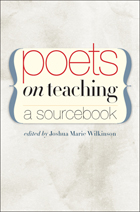 Poets on Teaching: A Sourcebook
Joshua Marie Wilkinson
University of Iowa Press, 2010 In response to a lack of source works for wide-ranging approaches to teaching poetry, award-winning poet Joshua Marie Wilkinson has gathered ninety-nine micro-essays for poets, critics, and scholars who teach and for students who wish to learn about the many ways poets think about how a poem comes alive from within—and beyond—a classroom. Not narrowly concerned with how to read poetry or how to write poetry, by virtue of their central concern with teaching poetry, the essays in this fresh and innovative volume address both reading and writing and give teachers and students useful tools for the classroom and beyond. Divided into four sections—“Reflections / Poetics,” “Exercises / Praxis,” “New Approaches to Poetry Courses and Methodology,” and “Talks / Directives”—Poets on Teaching provides practical, intelligent advice. “Reflections / Poetics” encompasses the most expansive approaches to teaching poetry, where poets reflect variously on what teachers can cultivate in their classrooms. “Exercises / Praxis” consists of hands-on approaches to reading and, especially, writing poems. “New Approaches to Poetry Courses and Methodology” features essays on rethinking specific courses, offering new ideas for course design and pedagogy. “Talks / Directives” contains a series of more informal and conversational discussions geared toward becoming a stronger reader, writer, teacher, and student of poetry. Poets on Teaching will be required reading for new and experienced teachers alike. Contributors: Kazim Ali, Rae Armantrout, Hadara Bar-Nadav, Dan Beachy-Quick, Bruce Beasley, Claire Becker, Jaswinder Bolina, Jenny Boully, Joel Brouwer, Lily Brown, Laynie Browne, Stephen Burt, Julie Carr, Joshua Clover, Matthew Cooperman, Oliver de la Paz, Linh Dinh, Ben Doller, Sandra Doller, Julie Doxsee, Lisa Fishman, Graham Foust, John Gallaher, Forrest Gander, C. S. Giscombe, Peter Gizzi, Lara Glenum, Kenneth Goldsmith, Johannes Göransson, Noah Eli Gordon, Arielle Greenberg, Richard Greenfield, Sarah Gridley, Anthony Hawley, Terrance Hayes, Eric Hayot, Brian Henry, Brenda Hillman, Jen Hofer, Paul Hoover, Christine Hume, Brenda Iijima, Lisa Jarnot, Kent Johnson, Bhanu Kapil, Karla Kelsey, Aaron Kunin, Quraysh Ali Lansana, Dorothea Lasky, Sueyeun Juliette Lee, Ada Limón, Timothy Liu, Sabrina Orah Mark, Dawn Lundy Martin, Kristi Maxwell, Joyelle McSweeney, Christina Mengert, Albert Mobilio, K. Silem Mohammad, Fred Moten, Jennifer Moxley, Laura Mullen, Sawako Nakayasu, Aimee Nezhukumatathil, Hoa Nguyen, Jena Osman, D. A. Powell, Kristin Prevallet, Bin Ramke, Jed Rasula, Srikanth Reddy, Barbara Jane Reyes, Boyer Rickel, Elizabeth Robinson, Martha Ronk, Emily Rosko, Prageeta Sharma, Evie Shockley, Eleni Sikelianos, Richard Siken, Ron Silliman, Tracy K. Smith, Juliana Spahr, Sasha Steensen, Peter Streckfus, Cole Swensen, Michael Theune, Tony Trigilio, Spring Ulmer, Karen Volkman, Catherine Wagner, G. C. Waldrep, Mark Wallace, Tyrone Williams, Mark Yakich, Jake Adam York, Stephanie Young, Timothy Yu, Matthew Zapruder, Andrew Zawacki, and Rachel Zucker
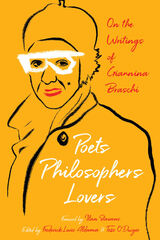 Poets, Philosophers, Lovers: On the Writings of Giannina Braschi
Frederick Luis Aldama and Tess O'Dwyer
University of Pittsburgh Press, 2020 This collection of essays, by fifteen scholars across diverse fields, explores forty years of writing by Giannina Braschi, one of the most revolutionary Latinx authors of her generation. Since the 1980s, Braschi’s linguistic and structural ingenuities, radical thinking, and poetic hilarity have spanned the genres of theatre, poetry, fiction, essay, musical, manifesto, political philosophy, and spoken word. Her best-known titles are El imperio de los sueños, Yo-Yo Boing!, and United States of Banana. She writes in Spanish, Spanglish, and English and embraces timely and enduring subjects: love, liberty, creativity, environment, economy, censorship, borders, immigration, debt, incarceration, colonialization, terrorism, and revolution. Her work has been widely adapted into theater, photography, film, lithography, painting, sculpture, comics, and music. The essays in this volume explore the marvelous ways that Braschi’s texts shake upside down our ideas of ourselves and enrich our understanding of how powerful narratives can wake us to our higher expectations.
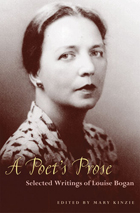 A Poet’s Prose: Selected Writings Of Louise Bogan
Louise Bogan
Ohio University Press, 2005 Although best known as a master of the formal lyric poem, Louise Bogan (1897–1970) also published fiction and what would now be called lyrical essays. A Poet’s Prose: Selected Writings of Louise Bogan showcases her devotion to compression, eloquence, and sharp truths.
Louise Bogan was poetry reviewer for the New Yorker for thirty-eight years, and her criticism was remarkable for its range and effect. Bogan was responsible for the revival of interest in Henry James and was one of the first American critics to notice and review W. H. Auden. She remained intellectually and emotionally responsive to writers as different from one another as Caitlin Thomas, Dorothy Richardson, W. B. Yeats, André Gide, and Rainer Maria Rilke.
Bogan’s short stories appeared regularly in magazines during the 1930s, penetrating the social habits of the city as well as the loneliness there. The autobiographical element in her fiction and journals, never entirely confessional, spurred some of her finest writing. The distinguished poet and critic Mary Kinzie provides in A Poet’s Prose a selection of Bogan's best criticism, prose meditations, letters, journal entries, autobiographical essays, and published and unpublished fiction.
Louise Bogan won the Bollingen Prize in 1954 for her collected poems. She is the subject of the Pulitzer Prize-winning biography by Elizabeth Frank, Louise Bogan: A Portrait.
A Poet's Sourcebook: Writings about Poetry, from the Ancient World to the Present
Edited by Dawn Potter
Autumn House Press, 2013 A collection of writings about poetry from both ancient and contemporary writers including Homer, Plato, Aristotle, William Shakespeare, William Wordsworth, John Keats, Edgar Allan Poe, Frederick Douglass, Walt Whitman, Emily Dickinson, Ezra Pound, Philip Levine, Adrienne Rich, Gary Snyder, and Rita Dove.
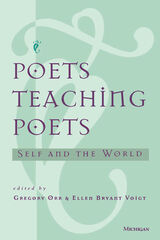 Poets Teaching Poets: Self and the World
Gregory Orr and Ellen Bryant Voigt, Editors
University of Michigan Press, 1996 The Warren Wilson College MFA Program for Writers has emerged as one of the most well-respected writing programs in the country, producing a generation of first-rate poets who are also deeply dedicated teachers of their art. Poets Teaching Poets collects essays by current and former lecturers at Warren Wilson, including acclaimed poets Joan Aleshire, Marianne Boruch, Carl Dennis, Stephen Dobyns, Reginald Gibbons, Louise Glück, Allen Grossman, Robert Haas, Tony Hoagland, Heather McHugh, Gregory Orr, Michael Ryan, Ellen Bryant Voigt, Alan Williamson, Eleanor Wilner, and Renate Wood.
This passionate and provocative anthology presents an extended, insightful dialogue on an astonishing range of topics: writers from Homer, Dickinson, and Akhmatova to Bishop, O'Hara, Milosz, and Plath; meditations on the nature of the image and the discovery of the self in Greek verse; a passionate defense of lyric poetry; and other engaging themes. Whatever their subject, these essays are, at the core, passionate and thoughtful meditations on the place of poetry in contemporary culture.
Poets Teaching Poets will be an invaluable tool for teachers and students of poetry and poetics at every level. It is essential reading for anyone interested in the connections between craft and the larger issues of art, and in the continuing and exciting relevance of poetry today.
Gregory Orr is author of six books of poetry, most recently City of Salt, and of two books of criticism, Richer Entanglements: Essays and Notes on Poetry and Poems and Stanley Kunitz: An Introduction to the Poetry. He is Professor of English, University of Virginia.
Ellen Bryant Voigt is founder and former director of the low-residency MFA Writing Program at Goddard College and teaches in its relocated incarnation at Warren Wilson College. She has published four volumes of poetry and has received numerous awards, including two Pushcart Prizes and fellowships from the Guggenheim Foundation and the National Endowment for the Arts.
 Poets Thinking: Pope, Whitman, Dickinson, Yeats
Helen Vendler
Harvard University Press, 2006 “In reminding us to look at and listen to the actual words on the page...Vendler invites us to expand our response to experience, and to find in it—if we are both attentive and lucky—beauty and solace.”
—Christopher Benfey, New York Review of Books
The grand dame of poetic criticism defends lyric poetry as a product of fierce intelligence as much as creative inspiration.
Poetry has often been considered an irrational genre, more expressive than logical, more meditative than given to coherent argument. And yet, in each of the four very different poets she considers here, Helen Vendler reveals a style of thinking in operation. All poets of any value are thinkers, she argues, even if no two think alike.
The four poets taken up in this volume—Alexander Pope, Walt Whitman, Emily Dickinson, and William Butler Yeats—come from three different centuries and three different nations, and their styles of thinking are characteristically idiosyncratic. Vendler gives us Pope performing as a satiric miniaturizer, remaking in verse the form of the essay; Whitman writing as a poet of repetitive insistence for whom thinking must be followed by rethinking; Dickinson experimenting with plot to characterize life’s unfolding; and Yeats thinking in images, using montage in lieu of argument.
With customary lucidity and vigor, Vendler pores over these poets’ lines to find evidence of thought in lyric, from subtle stylistic shifts that embody changes of mind to images that serve as condensations of concepts and emotions. Far more than in (frequently well-worn) themes, she demonstrates that poetic genius resides in open-ended contemplation: the interminable work of recalling, evaluating, and structuring experience in verse. Never linear or merely propositional, poems show us the human mind in process, inviting us to participate in experiential discoveries as they unfold.
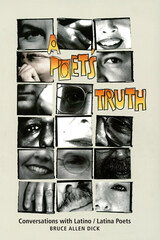 A Poet's Truth: Conversations with Latino/Latina Poets
Bruce Allen Dick
University of Arizona Press, 2003 Among students and aficionados of contemporary literature, the work of Latina and Latino poets holds a particular fascination. Through works imbued with fire and passion, these writers have kindled new enthusiasm in their compatriots and admiration in non-Latino readers. This book brings together recent interviews with fifteen Latino/a poets, a cross-section of Chicano, Puerto Rican, and Cuban voices who discuss not only their work but also related issues that help define their place in American literature. Each talks at length about the craft of his or her poetry—both the influences and the process behind it—and takes a stand on social and political issues affecting Latinos across the United States. The interviews feature both established writers published as early as the 1960s and emerging artists, each of whom has enjoyed success in other literary forms also.
As Bruce Dick's insightful questions reveal, the key threads linking these writers are their connections to their families and communities and their concern for civil rights—believing like Chicana writer Pat Mora that "the work of the poet is for the people." The interviews also reveal diversity among and within the three communities, from Victor Hernández Cruz, who traces Latino collective identity to Africa and claims that all Latinos are "swimming in olive oil," to Cuban writer Gustavo Perez Firmat, who considers nationality more important than ethnicity and says that "the term Latino erases [his] nationality."
The dialogues also offer new insights on the place of Chicano/a writings in the U.S.-Mexico borderlands, on the Puerto Rican/Nuyorican establishment, and on the anti-Castro stand of Cuban-born poets. As these writers answer questions about their work, background, ethnic identity, and political ideology, they provide a wealth of biographical, intellectual, and literary material collected here for the first time. A Poet's Truth is a provocative and revealing book that not only conveys the fire of these writers' passions but also sheds important light on a whole literary movement.Interviews with:
Miguel Algarín
Martín Espada
Sandra María Esteves
Victor Hernández Cruz
Carolina Hospital and Carlos Medina
Demetria Martínez
Pat Mora
Judith Ortiz Cofer
Ricardo Pau-Llosa
Gustavo Pérez Firmat
Leroy Quintana
Aleida Rodríguez
Luis Rodríguez
Benjamin Alire Sáenz
Virgil Suárez
The Poet's Work: 29 Poets on the Origins and Practice of Their Art
Edited by Reginald Gibbons
University of Chicago Press, 1989 "This anthology brings together essays by 20th-century poets on their own art: some concern themselves with its deep sources and ultimate justifications; others deal with technique, controversies among schools, the experience behind particular poems. The great Modernists of most countries are presented here—Paul Valéry, Federico García Lorca, Boris Pasternak, Fernando Pessoa, Eugenio Montale, Wallace Stevens—as are a range of younger, less eminent figures from the English-speaking world: Seamus Heaney, Denise Levertov, Wendell Berry. . . . The reader will find here a lively debate over the individualistic and the communal ends served by poetry, and over other issues that divide poets: inspiration and craft; the use or the condemnation of science; traditional and 'organic' form."—Alan Williamson, New York Times Book Review
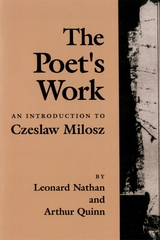 The Poet’s Work: An Introduction to Czeslaw Milosz
Leonard Nathan and Arthur Quinn
Harvard University Press, 1991 Born eighty years ago in Lithuania, Czeslaw Milosz has been acclaimed “one of the greatest poets of our time, perhaps the greatest” (Joseph Brodsky). This self-described “connoisseur of heavens and abysses” has produced a corpus of poems, essays, memoirs, and fiction of such depth and range that the reader's imagination is moved far beyond ordinary limits of consciousness. In The Poet's Work Leonard Nathan and Arthur Quinn follow Milosz's wanderings in exile from Poland to Paris to Berkeley as they chart the singular development of his art. Relating his life and his works to the unfolding of his thought, they have crafted a lucid reading of Milosz that far surpasses anything yet written on this often enigmatic poet.
The Poet's Work is not only a solid introduction to Milosz; it is also a unique record of the poet's own interpretations of his work. As colleagues of Milosz at Berkeley, Nathan and Quinn had long, detailed discussions with the poet. It is this spirit of collaboration that brings a sense of immediacy and authority to their seamless study. Nathan and Quinn reveal as never before why Milosz is a true visionary, a poet of ideas in history. And they show how the influence of Blake, Simone Weil, Dostoevsky, Lev Shestov, and Swedenborg, together with Henry Miller, Allen Ginsberg, and Robinson Jeffers, has enriched his vision. Milosz's lifelong experience of totalitarian regimes that exalt science and technology over individual needs and aspirations, his acute sense of alienation as an émigré, and his humanistic zeal and belief in the primacy of living have brought a prismatic quality to his poetry.
At seventy, Milosz spoke of himself as an “ecstatic pessimist.” In their sensitive mapping of his art, Nathan and Quinn skillfully demonstrate that Milosz's global influence has been achieved by the ever-shifting balance he strikes between ecstasy and pessimism. Irony and humor are never far from this book, which not only communicates Milosz's polyphonic message but also evokes his uniquely humane sensibility. The Poet's Work is an illuminating introduction to Milosz that will inform and engage scholars and general readers for years to come.
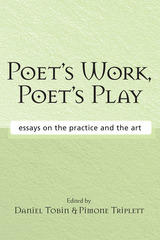 Poet's Work, Poet's Play: Essays on the Practice and the Art
Edited by Daniel Tobin and Pimone Triplett
University of Michigan Press, 2008 A follow-up to the highly praised Poets Teaching Poets, Daniel Tobin and Pimone Triplett's Poet's Work, Poet's Play gathers together essays by some of the most important voices in contemporary poetry: Carl Dennis, Stephen Dobyns, Tony Hoagland, Heather McHugh, Ellen Bryant Voigt, Eleanor Wilner, Dean Young, and the late Larry Levis and Agha Shahid Ali. Lively, accessible, and erudite, the pieces range from discussions on syntax and the syllable to an exploration of the complexities of canon formation under the shadow of imperialism, race, and history. Exploring the work of John Donne, William Butler Yeats, Robert Frost, Philip Larkin, Charles Olsen, Ezra Pound, Anne Carson, Robert Herrick, Harryette Mullen, and many others, Poet's Work, Poet's Play---like its predecessor volume---will be an invaluable tool for teachers, students, and poets at every level. "Much more than a set of essays on poetic craft or aesthetic understandings, this collection takes on two of the most prevalent anxieties about writing poetry in our time: the place of subjectivity in poetry, and how to make a significant shape in language while both affirming and interrogating the poetic I's authority. This is a book for anyone who wants to write better poems, who wants to read with greater passion, and who believes that poetry is an independent category of human consciousness that can be as capaciousness as the world, and as nuanced."
---Tom Sleigh, author of Space Walk and Far Side of the Earth "Gathering together essays by unquestionably important poets, Poet's Work, Poet's Play has immense pedagogical value in the way it demonstrates how to discover in poetry resources of language and structure often overlooked in first, and ensuing, readings of complex texts."
---Laurence Goldstein, Professor of English, University of Michigan, and Editor, Michigan Quarterly Review "A valuable document illuminating critical aspects of the contemporary American poetry scene."
---John Koethe, Distinguished Professor of Philosophy at the University of Wisconsin, Milwaukee, and author of Sally's Hair: Poems
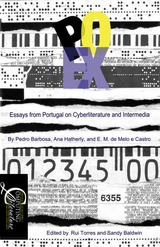 PO.EX: Essays from Portugal on Cyberliterature and Intermedia
Rui Torres
West Virginia University Press, 2013 Po.Ex: Essays from Portugal on Cyberliterature and Intermedia is a crucial addition to the bookshelf for scholars and students of new media, digital literature, and experimental writing. Available for the first time outside of Portuguese, these essays are crucial primary texts of experimental literature. Po.Ex shows a long history of procedural composition and expressive intermedial writing, leading directly to the latest computer and network-based artworks. Collecting essays by Pedro Barbosa, Ana Hatherly, and E. M. de Melo e Castro, along with framing essays by the editors and extensive bibliographical materials,this book situates today’s digital and online texts in a rich tradition of European literature. New forms of writing appear in the encounter of literature and digital media, just as old forms are renewed. Po.Ex is an archive of the past, present, and future of cyberliterature and intermedia writing.
POG vol 1 num 1
The University of Chicago Press
University of Chicago Press Journals, 2018
POG vol 2 num 1
The University of Chicago Press
University of Chicago Press Journals, 2019
POG vol 2 num 2
The University of Chicago Press
University of Chicago Press Journals, 2019
POG vol 3 num 1
The University of Chicago Press
University of Chicago Press Journals, 2020 This is volume 3 issue 1 of Portable Gray. Portable Gray (PG), interdisciplinary in scope and dedicated to experimentation, offers a forum for artists and scholars to consider how collaboration can enrich their practices and foster new discoveries. Encouraging contributors to play with artistic and literary forms and modes in order to challenge long-held ideas, PG features essays, interviews, poetry, art, and musical compositions, among other works.
POG vol 3 num 2
The University of Chicago Press
University of Chicago Press Journals, 2020
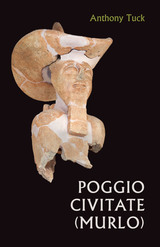 Poggio Civitate (Murlo)
By Anthony Tuck
University of Texas Press, 2021 Poggio Civitate in Murlo, Tuscany, is home to one of the best-preserved Etruscan communities of the eighth through the sixth centuries BCE. In this book, Anthony Tuck, the director of excavations, provides a broad synthesis of decades of data from the site. The results of many years of excavation at Poggio Civitate tell a story of growth, urbanization, ancient industrialization, and dissolution. The site preserves traces of aristocratic domestic buildings, including some of the most evocative and enigmatic architectural sculpture in the region, along with remnants of non-elite domestic spaces, enabling illuminating comparisons across social strata. The settlement also features evidence of large-scale production systems, including tools and other objects that reflect the daily experiences of laborers. Finally, the site contains the story of its own destruction. Tuck finds in the data clear indications that Poggio Civitate was methodically dismantled, and he posits hypotheses concerning the circumstances around this violent social and political act.
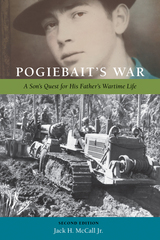 Pogiebait's War: A Son's Quest for His Father's Wartime Life
Jack H. McCall
University of Tennessee Press, 2022 Jack H. McCall Sr. was a born storyteller, an inveterate practical joker, and a proud Tennessean whose flaws included a considerable taste for candy, or “pogiebait” in Marine parlance. Like so many other able-bodied young people in on the eve of World War II, he decided to enlist in the wake of the Japanese attack on Pearl Harbor. Much more than a family memoir or nostalgic wartime reminiscence, this painstakingly researched biography presents a rich, engaging study of the U.S. Marine Corps, particularly McCall’s understudied unit, the Ninth Defense Battalion—the “Fighting Ninth.” The author provides a window into the day-to-day service of a Marine during World War II, with important coverage of fighting in the Pacific Theater. McCall also depicts life in wartime Franklin, Tennessee, and offers a poignant and personal tribute to his father.
McCall dramatizes some of the classic themes of the war memoir genre (war is hell, but memories fade!), but he sets riveting descriptions of decisive action against rarely seen views of mundane work and daily life, supported with maps, photographs, and fresh interpretations. Another distinction of this work is its attention to the action on Guam, a very unpleasant late-war “mopping up” that has received relatively little scholarly attention. In his portrait of the bitter island-hopping war in the Pacific, the author shows how both U.S. and Japanese soldiers were often eager innocents drawn to the cauldron of conflict and indoctrinated and trained by their respective governments. Reflecting on the action late in life, Jack (as well as several other Ninth veterans) came to a begrudging respect for the enemy.
Poiesis and Modernity in the Old and New Worlds
Anthony J. Cascardi
Vanderbilt University Press, 2012 This broadranging exploration argues that there was a special preoccupation with the nature and limits of poetry in early modern Spain and Europe, as well as especially vigorous poetic activity in this period. Contrary to what one might read in Hegel, the "prosification" of the world has remained an unfinished affair.
 Poindexter of Washington: A Study in Progressive Politics
Howard W Allen
Southern Illinois University Press, 1981
In this study of Miles Poindexter, Insurgent Republican turned conservative, Howard W. Allen reaches beyond the traditional bounds of biography to present a history of the United States Congress during the Progressive era and the early years after World War I.
A congressman (1909–13)and a senator (1913–23), Miles Poindexter of Washington State was an outspoken, progressive reformer before World War I. He struggled to protect “the people” from “special interests,” particularly defending the interest of his section against eastern “colonialism.” A man with a penchant for absolute positions, Poindexter became caught up in the emotionalism of the Insurgent Republican revolt. At one time or another he championed Socialists, the IWW, the striking textile workers in Lawrence, Massachusetts—all unlikely causes for a middle-class lawyer from Spokane.
Regarding foreign policy, Poindexter was an uncompromising nationalist who, with Theodore Roosevelt, declared himself a member of the Progressive party in 1912.
After 1917 Poindexter actively tried to suppress opponents of the war. Following the war his targets were “Bolshevists” and other radicals. He also developed intense hostility toward Socialists, the IWW, and organized labor, fearing radicalism and labor. Reversing his former position, he allied himself with the eastern businessmen and regular Republicans in the Senate. Campaigning for the presidency in 1920, he appealed without success to the most conservative members of the party. He was defeated b a progressive Democrat in his 1922 bid for reelection to the Senate.
Allen examines the traditional sources—archival collections, newspaper files, and congressional reports. When he combines this material with a quantitative analysis of roll-call votes throughout Senator Poindexter’s years in Congress, he creates a remarkably useful method never before attempted in political biography.
 Point Blank: 'Nothing to Declare', 'Operation Wonderland', and 'Roses and Morphine'
Edited by Liz Tomlin
Intellect Books, 2007 Point Blank, one of Britain’s most provocative new theater companies, has received a deluge of critical acclaim for its darkly comic political satire and bleak metaphorical landscapes. Point Blank: Nothing to Declare, Operation Wonderland, Roses and Morphine, here reproduces three prominent examples of the company’s early work and contextualizes these plays in the wider tradition and recent history of British political theater. In addition to the full performance scripts, Point Blank offers comprehensive notes to enable a range of potential restagings of the plays, as well as critical essays suggesting bold interpretations of the interplay between contemporary theatrical performance and the prevailing political climate. Editor Liz Tomlin offers invaluable insight into the company’s dramaturgical processes that transform theoretical ideas into mythical, absurd scenarios and visually striking theatrical metaphor. Subversive and incendiary, Point Blank is forging a radical new vision of twenty-first-century theater. Praise for the Point Blank theatre company “One of the most exciting theatres around. . . . Political, witty, challenging and bold.”—Guardian “Quality theatre . . . totally compelling.”—Independent on Sunday “Explosive new political satire . . . living up to their tag as Britain’s hottest new theatre company. . . . This is incendiary stuff.”—Edinburgh Evening News
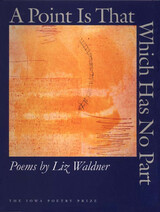 A Point Is That Which Has No Part
Liz Waldner
University of Iowa Press, 2000 Liz Waldner's bold new collection takes its title and its inspiration from Definition 1 of Euclid's Elements of Geometry. Its six sections—point, line, circle, square, triangle, and point again—are explorations of various kinds of longing and loss—sex, death, exile, story, love, and time. Drawing from culture high and low—Eno and Aquinas, Lassie and Donne, Silicon Valley and Walden Pond—these poems offer proof of and proof against the “mortal right-lined circle” of memory and identity.
The innocence and Keatsian beauty of Euclid's geometry become poignant from a perspective that encompasses all that is non-Euclidean as well as space, time, and the theory of matter. With rare wit and linguistic daring, Waldner opens resonant channels of communication that show there is indeed more than meets the eye—or the mind—in her poems.
Hand to Mouth (Twist and Shout)
Cold comes slow up out
of the darkness among the leaves
that smell so good when bruised
Do you, too, recognize me
god so soon?
Her First Reckoning
Pour wine into vessels the violet of woods,
wine of the reddening stars.
You are god, you can do it.
Your lover calls you St. John the Conqueror.
I have heard her.
This is the name of a root.
Asperge the thousands and thousands of rooms
in which photosynthesis promises sun
to the acolyte cells. Rain yourself on a leaf.
Birch. The bark is malleable as mushroom flesh.
Show that you know me. Scratch out my name
with this tree. My name of trees.
On the day I arrive at the door of my death,
myself now hard to tell
from the trees that had hid it from me,
I will demand that you love me.
You made me like this.
Why did you make me like this?
Transitive, Intransitive: Extemporary Measures
Two crows above the marsh: sew.
Stitch the seventeen sleek shades of blue
to the shadow-patterned greens below.
See fit to make me a suitable view who
having nowhere to else to go
might as well wear this world well.
Llama necks periscope the view:
yonder, across the water, you
testing the air now a crow
chases a redwing blackbird through.
What can I show you who sees
I don't believe? For now,
what the eye of the needle sees:
through through through:
clouds, birds, me, trees;
soon: in, out, with, to;
something moving, something moved:
a stitch in time's an avenue,
future's sutures' revenue—
“the shining hour” improved.
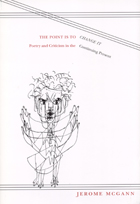 The Point Is To Change It: Poetry and Criticism in the Continuing Present
Jerome McGann
University of Alabama Press, 2007 A preeminent critic maps the frontier of contemporary poetry. In this book, Jerome McGann argues that contemporary language-oriented writing implies a marked change in the way we think about our poetic tradition on one hand and in the future of criticism on the other. He focuses on Walter Benjamin and Gertrude Stein as important intellectual resources because both see the history of poetry as a crisis of the present rather than as a legacy of the past. The crisis appears as a poetic deficit in contemporary culture, where values of politics and morality are judged prima facie more important than aesthetic values. McGann argues for the fundamental relevance of the aesthetic dimension and the contemporary relevance of cultural works of the past. McGann moves through several broad categories in his examination of contemporary poetry, including the ways in which poetry must be abstract, change, and give pleasure. The author draws on sources ranging from the poetry of Bruce Andrews and Robert Duncan to Looney Tunes cartoons. The experimental move in contemporary poetry, McGann contends, is an emergency signal for readers and critics as much as it is for writers and poets, a signal that calls us to rethink the aesthetics of criticism. The interpretation of literary works has been dominated by enlightenment models—the expository essay and monograph—for almost two hundred years. With the emergence of new media, especially digital culture, the limitations of those models have grown increasingly apparent. The Point Is To Change It explores alternative critical methods and provides a powerful call to reinvent our modes of investigation in order to escape the limitations of our inherited academic models. The goal of this process is to widen existing cracks or create new ones because, as McGann points out via the lyrics of Leonard Cohen, "That's how the light gets in."
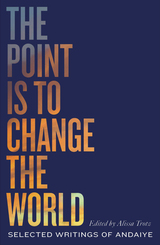 The Point is to Change the World: Selected Writings of Andaiye
Andaiye
Pluto Press, 2020 Radical activist, thinker, comrade of Walter Rodney, Andaiye was one of the Caribbean's most important political voices. For the first time, her writings are published in one collection.
Through essays, letters and journal entries, Andaiye's thinking on the intersections of gender, race, class and power are profoundly articulated, Caribbean histories emerge, and stories from a life lived at the barricades are revealed. We learn about the early years of the Working People's Alliance, the meaning and impact of the murder of Walter Rodney and the fall of the Grenada Revolution. Throughout, we bear witness to Andaiye's acute understanding of politics rooted in communities and the daily lives of so-called ordinary people.
Featuring forewords by Clem Seecharan and Robin DG Kelley, these texts will become vital tools in our own struggles to 'overturn the power relations which are embedded in every unequal facet of our lives'.
Point of Pines: A History of the University of Arizona Archaeological Field School
Emil W. Haury
University of Arizona Press, 1989 Recalls education and daily life at Point of Pines field school and also provides the background for the scientific papers that have resulted from the research that was undertaken there. Appendixes list contributions to Point of Pines archaeology, staff members and students, and institutions represented by attendees.
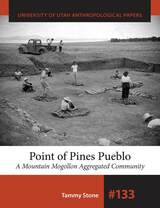 Point of Pines Pueblo: A Mountain Mogollon Aggregated Community
Tammy Stone
University of Utah Press, 2020 University of Utah Anthropological Papers No. 133
Point of Pines Pueblo has long been the center of theoretical debates in southwestern archaeology, yet detailed descriptions of the site have been lacking. Located on the San Carlos Apache Reservation in central Arizona, this large Mountain Mogollon village (about 800 rooms) dates from AD 1200 to 1400. For the first 100 years of occupation it was a multiethnic community and is often referenced in discussions of aggregation, community organization, migration, and ethnic interaction. In Point of Pines Pueblo Tammy Stone details the architectural structures and cultural materials at the site, providing a body of information never before published.
From 1947 to 1960, Point of Pines Pueblo was excavated by the University of Arizona field school under the direction of Emil Haury. Data from that work were housed at the Arizona State Museum Archives. Stone draws from those original excavation notes to present detailed descriptions of each architectural structure and extramural feature along with information on the associated artifacts, dated dendrochronology samples, and ethnobotanical samples unearthed at the site. A rich source of raw data, this book will serve as a valuable resource for years to come.
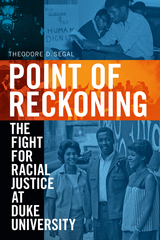 Point of Reckoning: The Fight for Racial Justice at Duke University
Theodore D. Segal
Duke University Press, 2021 On the morning of February 13, 1969, members of Duke University's Afro-American Society barricaded themselves inside the Allen administration building. That evening, police were summoned to clear the building, firing tear gas at students in the melee that followed. When it was over, nearly twenty people were taken to the hospital, and many more injured. In Point of Reckoning, Theodore D. Segal narrates the contested fight for racial justice at Duke from the enrollment of the first Black undergraduates in 1963 to the events that led to the Allen Building takeover and beyond. Segal shows that Duke's first Black students quickly recognized that the university was unwilling to acknowledge their presence or fully address its segregationist past. By exposing the tortuous dynamics that played out as racial progress stalled at Duke, Segal tells both a local and national story about the challenges that historically white colleges and universities throughout the country have faced and continue to face.
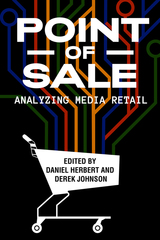 Point of Sale: Analyzing Media Retail
Daniel Herbert
Rutgers University Press, 2020 Point of Sale offers the first significant attempt to center media retail as a vital component in the study of popular culture. It brings together fifteen essays by top media scholars with their fingers on the pulse of both the changes that foreground retail in a digital age and the history that has made retail a fundamental part of the culture industries. The book reveals why retail matters as a site of transactional significance to industries as well as a crucial locus of meaning and interactional participation for consumers. In addition to examining how industries connect books, DVDs, video games, lifestyle products, toys, and more to consumers, it also interrogates the changes in media circulation driven by the collision of digital platforms with existing retail institutions. By grappling with the contexts in which we buy media, Point of Sale uncovers the underlying tensions that define the contemporary culture industries.
Point of View and the Emotional Arc of Stories: A handbook for writers and storytellers
Loren Niemi & Nancy Donoval
Parkhurst Brothers, Inc., 2020 A creative writing manual for high school to adult aged writers and storytellers, this volume includes the authors' philosophy regarding story creation and pointers especially related to the variety of choices regarding point of view available to writers and other story-creators or refiners.
Point of View: Talks on Education
Edward H. Levi
University of Chicago Press, 2007 Edward H. Levi served the University of Chicago for most of his professional life, as a professor, dean of the law school, provost, and eventually president. Gathered here are fourteen talks he delivered between 1963 and 1969 that include such topics as the role of the university; the purposes of undergraduate and liberal education, professional training, and graduate research; the relations between the university and its surroundings; and the causes of student unrest. Throughout these talks, the reader will find expressions of Levi’s essential belief that “the university must stand for reason and for persuasion by reasoning.”
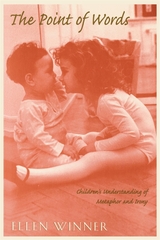 The Point of Words: Children’s Understanding of Metaphor and Irony
Ellen Winner
Harvard University Press, 1988 A small child looks at a dripping faucet and says that it is drooling." Another calls a centipede a "comb." An older child notices the mess in his younger brother's room and says, "Wow, it sure is neat in here." Children's spontaneous speech is rich in such creative, nonliteral discourse. How do children's abilities to use and interpret figurative language change as they grow older? What does such language show us about the changing features of children's minds?
In this absorbing book, psychologist Ellen Winner examines the development of the child's ability to use and understand metaphor and irony. These, she argues, are the two major forms of figurative language and are, moreover, complementary. Metaphor, which describes and sometimes explains, highlights attributes of a topic. As such, it serves primarily a cognitive function. Irony highlights the speaker's attitude toward the subject arid presupposes an appreciation of that attitude by the listener. In contrast to metaphor, irony serves primarily a social function. Winner looks in detail at the ways these forms of language differ structurally and at the cognitive and social capacities required for each.
The book not only draws on the author's own empirical studies but also offers a valuable synthesis of research in the area: it is the first account that spans the realm of figurative language. Winner writes clearly and engagingly and enlivens her account with many vivid examples from children's speech. The book will appeal to developmental psychologists, educators, psychologists of language, early-language specialists, students of literature, indeed, anyone who is delighted by the fanciful utterances of young children.
Pointing at the Past: From Formula to Performance in Homeric Poetics
Egbert J. Bakker
Harvard University Press, 2005 Epic is not only a nostalgic memory of a remote past, but also, as performance, a deliberate act in the present. In fact, as this book argues, memory is itself a deliberate act when it is turned into epic language. With numerous fresh linguistic observations the author shows that the epic narrator makes the epic past come to the present: epic is not only a verbal artifact that points to the past; it also is a performer's act of pointing at a past that has become present in and through language. Building on his earlier work, Egbert Bakker demonstrates the power of discourse analysis as an essential tool for elucidating the poetics of the Homeric tradition.
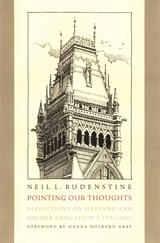 Pointing Our Thoughts: Reflections on Harvard and Higher Education, 1991–2001, with a Foreword by Hanna Holborn Gray
Neil L. Rudenstine
Harvard University Press As president of Harvard University, Neil Rudenstine has enjoyed a unique perspective on the state of higher learning, while exerting a significant influence on its recent and future course. Published to commemorate his decade-long tenure, this selection of Rudenstine’s talks and writings illuminates many of the ideas and issues that animate higher education today.
In a collection of more than fifty speeches and writings, Rudenstine eloquently explores topics both timely and timeless, from the educational importance of diversity to the enduring value of the humanities; from the teaching potential of new technologies to the profound benefits of basic research; from developments in the professions and public service to the singular power of education to transform lives.
Specially designed and printed in a limited edition, Pointing Our Thoughts features a foreword by Hanna Holborn Gray, President Emeritus of the University of Chicago and a member of the Harvard Corporation. As Gray remarks, “To read [Rudenstine’s] thoughtful and beautifully crafted speeches is to hear the voice of a teacher deeply committed to the vocation of opening minds to reflection and insight, listening intensely to his colleagues and entering with them into a continuing process of intellectual dialogue, sharing the convictions and perplexities of the search for understanding.” This volume is testament to that commitment. It represents an invaluable addition to the literature on higher education in America and around the world.
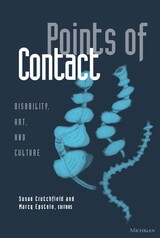 Points of Contact: Disability, Art, and Culture
Susan Crutchfield and Marcy Epstein, Editors
University of Michigan Press, 2000 Points of Contact brings together contributions by leading writers, artists, scholars, and critics to provide a remarkably broad and consistently engaging look at the intersection of disability and the arts. The contributions include essays and memoirs by a wide range of disabled and nondisabled writers, including Bell Gale Chevigny, Sandra Gilbert, Joseph Grigely, Georgina Kleege, Victoria Ann Lewis, Carol Poore, Tobin Siebers, and Rosemarie Garland Thomson among others; poetry by Brooke Horvath, Joan Seliger Sidney, William Stafford, and others; fiction by Stephen Dixon, Michael Downs, Georgina Kleege, Dallas Wiebe, and others.
The collection covers a broad range of subjects and concerns that lie at the intersection of disability and the arts, including fetal alcohol syndrome, education, and identity; representations of disability in the visual arts and the complicated position of the disabled spectator; the impact of cancer on the patient and the caregiver; the similarities between beauty pageants and freak shows; Alzheimer's disease; prosthetic devices; the mechanized disabled body; disability and performance; and profiles of Helen Keller and Annie Sullivan, Christopher Reeve, Franklin Roosevelt, and sado-masochistic performance artist Bob Flanagan.
Points of Contact: Disability, Art, and Culture was originally published as a special double issue of the well regarded literary magazine, the Michigan Quarterly Review. Now available in a single, convenient paperback volume, its broad range of perspectives on disability and its entertaining and engaging selections will appeal to general readers, scholars, and students alike.
Susan Crutchfield is lecturer in English, University of Michigan. Marcy Epstein teaches literature at The Roeper School and women's studies at Henry Ford Community College.
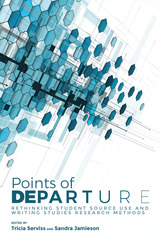 Points of Departure: Rethinking Student Source Use and Writing Studies Research Methods
Tricia Serviss
Utah State University Press, 2017 Points of Departure encourages a return to empirical research about writing, presenting a wealth of transparent, reproducible studies of student sources. The volume shows how to develop methods for coding and characterizing student texts, their choice of source material, and the resources used to teach information literacy. In so doing, the volume advances our understanding of how students actually write.
The contributors offer methodologies, techniques, and suggestions for research that move beyond decontextualized guides to grapple with the messiness of research-in-process, as well as design, development, and expansion. Serviss and Jamieson’s model of RAD writing studies research is transcontextual and based on hybridized or mixed methods. Among these methods are citation context analysis, research-aloud protocols, textual and genre analysis, surveys, interviews, and focus groups, with an emphasis on process and knowledge as contingent. Chapters report on research projects at different stages and across institution types—from pilot to multi-site, from community college to research university—focusing on the methods and artifacts employed.
A rich mosaic of research about research, Points of Departure advances knowledge about student writing and serves as a guide for both new and experienced researchers in writing studies.
Contributors: Crystal Benedicks, Katt Blackwell-Starnes, Lee-Ann Kastman Breuch, Kristi Murray Costello, Anne Diekema, Rebecca Moore Howard, Sandra Jamieson, Elizabeth Kleinfeld, Brian N. Larson, Karen J. Lunsford, M. Whitney Olsen, Tricia Serviss, Janice R. Walker
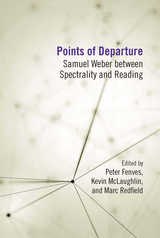 Points of Departure: Samuel Weber between Spectrality and Reading
Edited by Peter Fenves, Kevin McLaughlin, and Marc Redfield
Northwestern University Press, 2016 Since the late 1960s, when he introduced Theodor Adorno’s work on literature and cultural critique to an English-speaking public, Samuel Weber has stimulated the discovery of new and unexpected links within a broad spectrum of humanistic disciplines, including critical theory and psychoanalysis, media studies and literary analysis, continental philosophy and theater studies. The international group of scholars who contribute to Points of Departure demonstrate the persistent fecundity of Weber’s work. Centered around his essay on the Ghost of Hamlet, as reflected in the writings of Walter Benjamin and Carl Schmitt, the volume is broadly divided into explorations of the nature of spectrality, on the one hand, and the dynamics of reading, on the other. Each of the twelve essays thus takes its point of departure from “Weber’s singular path between languages, cultures, and traditions”—to quote Jacques Derrida, whose fictive “interview with a passing journalist” is published here for the first time.
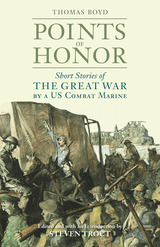 Points of Honor: Short Stories of the Great War by a US Combat Marine
Thomas Boyd, Edited and with an Introduction by Steven Trout
University of Alabama Press, 2018 A masterwork of World War I short stories portraying the experiences of Marines in battle.
Points of Honor: Short Stories of the Great War by a US Combat Marine is based on author Thomas Alexander Boyd’s personal experiences as an enlisted Marine. First published in 1925 and long out of print, this edition rescues from obscurity a vivid, kaleidoscopic vision of American soldiers, US Marines mostly, serving in a global conflict a century ago. It is a true forgotten masterpiece of World War I literature.
The stories in Points of Honor deal almost entirely with Marines in the midst of battle—or faced with the consequences of military violence. The eleven stories in this collection offer a panoramic view of war experience and its aftermath, what Boyd described as “a mass of more human happenings.” The themes are often antiheroic: dehumanization, pettiness, betrayal by loved ones at home, and the cruelty of military justice. But Boyd’s vision also accommodates courage and loyalty. Like all great works of war literature, this collection underscores the central paradox of armed conflict—its ability to bring out both the best and worst in human beings.
This reissue of Points of Honor is edited, annotated, and introduced by Steven Trout. Trout provides an overview of Thomas Boyd’s war experience and writing career and situates the stories within the broader context of World War I American literature.
Points of Honor received strong reviews at the time of its initial publication and remains an overwhelming reading experience today. While each of the stories is a freestanding work of art, when read together they carry the force of a novel.
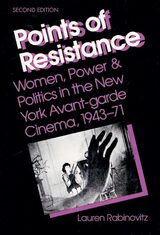 POINTS OF RESISTANCE
Lauren Rabinovitz
University of Illinois Press, 2003 In detailing the relationship of three women filmmakers’ lives and films to the changing institutions of the post-World War II era, Lauren Rabinovitz has created the first feminist social history of the North American avant-garde cinema.
At a time when there were few women directors in commercial films, the postwar avant-garde movement offered an opportunity. Rabinovitz argues that avant-garde cinema, open to women because of its marginal status in the art world, included women as filmmakers, organizers, and critics.
Focusing on Maya Deren, Shirley Clarke, and Joyce Wieland, Rabinovitz illustrates how women used bold physical images to enhance their work and how each provided entrée to her subversive art while remaining culturally acceptable. She combines archival materials with her own interviews to show how the women’s labor and films, even their identities as women filmmakers, were produced, disseminated, and understood. With a new preface and an updated bibliography, Points of Resistance simultaneously demonstrates the avant-garde’s importance as an organizational network for women filmmakers and the processes by which women remained marginal figures within that network.
Points of the Compass: Stories
Sahar Tawfiq
University of Arkansas Press, 1995 This collection of short stories, recipient of a 1994 University of Arkansas Press Award for Arabic Literature in Translation, presents one of Egypt’s most innovative contemporary fiction writers. In her first collection published in English, Sahar Tawfiq explores the consciousnesses of young women alienated from their surroundings in today’s rapidly changing Egyptian society. In questioning the place of long-powerful myths and beliefs, she is in the forefront of writers examining the legacy of the Pharaohs as it permeates current Egyptian identities and practices, especially in the countryside. Her characters are shaped by journeys through modern social and economic trials and the ageless troubles of the human spirit and heart.
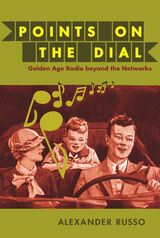 Points on the Dial: Golden Age Radio beyond the Networks
Alexander Russo
Duke University Press, 2010 The golden age of radio is often recalled as a time when the medium unified the nation, when families gathered around the radios in homes across the country to listen to live, commercially sponsored network broadcasts. In Points on the Dial, Alexander Russo revises our understanding of radio’s past by revealing the hidden histories of production, distribution, and reception practices during this era, which extended from the 1920s into the 1950s. Russo brings to light a tiered broadcasting system with intermingling but distinct national, regional, and local programming forms, sponsorship patterns, and methods of program distribution. Examining a wide range of practices, including regional networking, sound-on-disc transcription, the use of station representatives, spot advertising, and programming aimed at homes with several radios, he not only recasts our understanding of the relationship between national networks and local stations but also charts the development of new ways of listening—often distractedly rather than attentively—that set the stage for radio in the second half of the twentieth century.
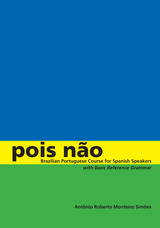 Pois não: Brazilian Portuguese Course for Spanish Speakers, with Basic Reference Grammar
By Antônio Roberto Monteiro Simões
University of Texas Press, 2008 Spanish speakers can learn Brazilian Portuguese much more rapidly than any other language, and thousands of students have used Antônio Simões's text/workbook Com licença: Brazilian Portuguese for Spanish Speakers to make the transition between the two languages. Recognizing the need for a text that incorporates current cultural references and the latest language pedagogy, Simões now offers Pois não: Brazilian Portuguese Course for Spanish Speakers, with Basic Reference Grammar. Pois não contrasts Portuguese and Spanish, which accomplishes two main goals. It teaches the equivalent of one year of college Portuguese in one semester, three times a week, to Spanish speakers who also have a solid understanding of English. Additionally, the book serves as a basic reference guide to Brazilian Portuguese for the same audience. Pois não can be used by students in the classroom or by independent learners. Users of the book may focus on the drills alone, concentrate on both the explanations and drills, or use the book as a reference for consultation only. Answers to all of the exercises are included in the book. Audio and video recordings by native Brazilian speakers of dialogues that appear in the book can be downloaded at https://utexas.box.com/v/PoisNaoAudio.
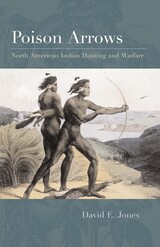 Poison Arrows: North American Indian Hunting and Warfare
By David E. Jones
University of Texas Press, 2007 Biological warfare is a menacing twenty-first-century issue, but its origins extend to antiquity. While the recorded use of toxins in warfare in some ancient populations is rarely disputed (the use of arsenical smoke in China, which dates to at least 1000 BC, for example) the use of "poison arrows" and other deadly substances by Native American groups has been fraught with contradiction. At last revealing clear documentation to support these theories, anthropologist David Jones transforms the realm of ethnobotany in Poison Arrows. Examining evidence within the few extant descriptive accounts of Native American warfare, along with grooved arrowheads and clues from botanical knowledge, Jones builds a solid case to indicate widespread and very effective use of many types of toxins. He argues that various groups applied them to not only warfare but also to hunting, and even as an early form of insect extermination. Culling extensive ethnological, historical, and archaeological data, Jones provides a thoroughly comprehensive survey of the use of ethnobotanical and entomological compounds applied in wide-ranging ways, including homicide and suicide. Although many narratives from the contact period in North America deny such uses, Jones now offers conclusive documentation to prove otherwise. A groundbreaking study of a subject that has been long overlooked, Poison Arrows imparts an extraordinary new perspective to the history of warfare, weaponry, and deadly human ingenuity.
The Poison in the Gift: Ritual, Prestation, and the Dominant Caste in a North Indian Village
Gloria Goodwin Raheja
University of Chicago Press, 1988 The Poison in the Gift is a detailed ethnography of gift-giving in a North Indian village that powerfully demonstrates a new theoretical interpretation of caste. Introducing the concept of ritual centrality, Raheja shows that the position of the dominant landholding caste in the village is grounded in a central-peripheral configuration of castes rather than a hierarchical ordering. She advances a view of caste as semiotically constituted of contextually shifting sets of meanings, rather than one overarching ideological feature. This new understanding undermines the controversial interpretation advanced by Louis Dumont in his 1966 book, Homo Hierarchicus, in which he proposed a disjunction between the ideology of hierarchy based on the "purity" of the Brahman priest and the "temporal power" of the dominant caste or the king.
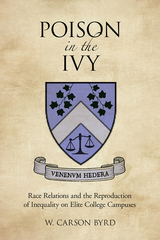 Poison in the Ivy: Race Relations and the Reproduction of Inequality on Elite College Campuses
Byrd, W. Carson
Rutgers University Press, 2017 The world of elite campuses is one of rarified social circles, as well as prestigious educational opportunities. W. Carson Byrd studied twenty-eight of the most selective colleges and universities in the United States to see whether elite students’ social interactions with each other might influence their racial beliefs in a positive way, since many of these graduates will eventually hold leadership positions in society. He found that students at these universities believed in the success of the ‘best and the brightest,’ leading them to situate differences in race and status around issues of merit and individual effort.
Poison in the Ivy challenges popular beliefs about the importance of cross-racial interactions as an antidote to racism in the increasingly diverse United States. He shows that it is the context and framing of such interactions on college campuses that plays an important role in shaping students’ beliefs about race and inequality in everyday life for the future political and professional leaders of the nation. Poison in the Ivy is an eye-opening look at race on elite college campuses, and offers lessons for anyone involved in modern American higher education.
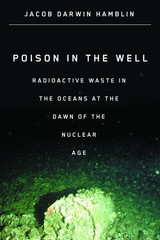 Poison in the Well: Radioactive Waste in the Oceans at the Dawn of the Nuclear Age
Hamblin, Jacob D
Rutgers University Press, 2009 In the early 1990s, Russian President Boris Yeltsin revealed that for the previous thirty years the Soviet Union had dumped vast amounts of dangerous radioactive waste into rivers and seas in blatant violation of international agreements. The disclosure caused outrage throughout the Western world, particularly since officials from the Soviet Union had denounced environmental pollution by the United States and Britain throughout the cold war. Poison in the Well provides a balanced look at the policy decisions, scientific conflicts, public relations strategies, and the myriad mishaps and subsequent cover-ups that were born out of the dilemma of where to house deadly nuclear materials. Why did scientists and politicians choose the sea for waste disposal? How did negotiations about the uses of the sea change the way scientists, government officials, and ultimately the lay public envisioned the oceans? Jacob Darwin Hamblin traces the development of the issue in Western countries from the end of World War II to the blossoming of the environmental movement in the early 1970s. This is an important book for students and scholars in the history of science who want to explore a striking case study of the conflicts that so often occur at the intersection of science, politics, and international diplomacy.
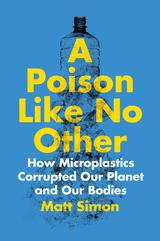 A Poison Like No Other: How Microplastics Corrupted Our Planet and Our Bodies
Matt Simon
Island Press, 2022 “Informed, utterly blindsiding account.” - Booklist, starred review
It’s falling from the sky and in the air we breathe. It’s in our food, our clothes, and our homes. It’s microplastic and it’s everywhere—including our own bodies. Scientists are just beginning to discover how these tiny particles threaten health, but the studies are alarming.
In A Poison Like No Other, Matt Simon reveals a whole new dimension to the plastic crisis, one even more disturbing than plastic bottles washing up on shores and grocery bags dumped in landfills. Dealing with discarded plastic is bad enough, but when it starts to break down, the real trouble begins. The very thing that makes plastic so useful and ubiquitous – its toughness – means it never really goes away. It just gets smaller and smaller: eventually small enough to enter your lungs or be absorbed by crops or penetrate a fish’s muscle tissue before it becomes dinner.
Unlike other pollutants that are single elements or simple chemical compounds, microplastics represent a cocktail of toxicity: plastics contain at least 10,000 different chemicals. Those chemicals are linked to diseases from diabetes to hormone disruption to cancers.
A Poison Like No Other is the first book to fully explore this new dimension of the plastic crisis, following the intrepid scientists who travel to the ends of the earth and the bottom of the ocean to understand the consequences of our dependence on plastic. As Simon learns from these researchers, there is no easy fix. But we will never curb our plastic addiction until we begin to recognize the invisible particles all around us.
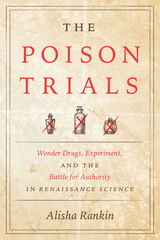 The Poison Trials: Wonder Drugs, Experiment, and the Battle for Authority in Renaissance Science
Alisha Rankin
University of Chicago Press, 2021 In 1524, Pope Clement VII gave two condemned criminals to his physician to test a promising new antidote. After each convict ate a marzipan cake poisoned with deadly aconite, one of them received the antidote, and lived—the other died in agony. In sixteenth-century Europe, this and more than a dozen other accounts of poison trials were committed to writing. Alisha Rankin tells their little-known story.
At a time when poison was widely feared, the urgent need for effective cures provoked intense excitement about new drugs. As doctors created, performed, and evaluated poison trials, they devoted careful attention to method, wrote detailed experimental reports, and engaged with the problem of using human subjects for fatal tests. In reconstructing this history, Rankin reveals how the antidote trials generated extensive engagement with “experimental thinking” long before the great experimental boom of the seventeenth century and investigates how competition with lower-class healers spurred on this trend.
The Poison Trials sheds welcome and timely light on the intertwined nature of medical innovations, professional rivalries, and political power.
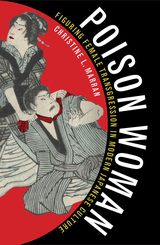 Poison Woman: Figuring Female Transgression in Modern Japanese Culture
Christine L. Marran
University of Minnesota Press, 2007 Based on the lives and crimes of no less than twenty real women, dokufu (poison women) narratives emerged as a powerful presence in Japan during the 1870s. During this tumultuous time, as the nation moved from feudalism to oligarchic government, such accounts articulated the politics and position of underclass women, sexual morality, and female suffrage. Over the next century, the figure of the oversexed female criminal, usually guilty of robbery or murder, became ubiquitous in modern Japanese culture. In Poison Woman, Christine L. Marran investigates this powerful icon, its shifting meanings, and its influence on defining women’s sexuality and place in Japan. She begins by considering Meiji gesaku literature, in which female criminality was often medically defined and marginalized as abnormal. She describes the small newspapers (koshinbun) that originally reported on poison women, establishing journalistic and legal conventions for future fiction about them. She examines zange, or confessional narratives, of female and male ex-convicts from the turn of the century, then reveals how medical and psychoanalytical literature of the 1920s and 1930s offered contradictory explanations of the female criminal as an everywoman or a historical victim of social circumstances and the press. She concludes by exploring postwar pulp fiction (kasutori), film and underground theater of the 1970s, and the feminist writer Tomioka Taeko’s take on the transgressive woman. Persistent stories about poison women illustrate how a few violent acts by women were transformed into myriad ideological, social, and moral tales that deployed notions of female sexual desire and womanhood. Bringing together literary criticism, the history of science, media theory, and gender and sexuality studies, Poison Woman delves into genre and gender in ways that implicate both in projects of nation-building. Christine L. Marran is associate professor of Japanese literature and cultural studies at the University of Minnesota.
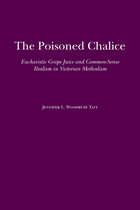 The Poisoned Chalice: Eucharistic Grape Juice and Common-Sense Realism in Victorian Methodism
Jennifer L. Woodruff Tait
University of Alabama Press, 2011 Examines the introduction of grape juice into the celebration of Holy Communion in the late 19th century Methodist Episcopal Church and reveals how a 1,800-year-old practice of using fermented communion wine became theologically incomprehensible in a mere forty years
This work examines the introduction of grape juice into the celebration of Holy Communion in the late 19th century Methodist Episcopal Church and reveals how a 1,800-year-old practice of using fermented communion wine became theologically incomprehensible in a mere forty years. Through study of denominational publications, influential exegetical works, popular fiction and songs, and didactic moral literature, Jennifer Woodruff Tait charts the development of opposing symbolic associations for wine and grape juice. She argues that 19th century Methodists, steeped in Baconian models of science and operating from epistemological presuppositions dictated by common-sense realism, placed a premium on the ability to perceive reality accurately in order to act morally. They therefore rejected any action or substance that dulled or confused the senses (in addition to alcohol, this included “bad” books, the theatre, stimulants, etc., which were all seen as unleashing unchecked, ungovernable thoughts and passions incompatible with true religion). This outlook informed Methodist opposition to many popular amusements and behaviors, and they decided to place on the communion table a substance scientifically and theologically pure. Grape juice was considered holy because it did not cloud the mind, and new techniques—developed by Methodist laymen Thomas and Charles Welch—permitted the safe bottling and shipment of the unfermented juice. Although Methodists were not the only religious group to oppose communion wine, the experience of this broadly based and numerous denomination illuminates similar beliefs and actions by other groups.
 Poisoned for Pennies: The Economics of Toxics and Precaution
Frank Ackerman
Island Press, 2008 “Cost-benefit analysis” is a term that is used so frequently we rarely stop to think about it. But relying on it can lead to some dubious conclusions, as Frank Ackerman points out in this eye-opening book. For example, some economists have argued that states should encourage—and even subsidize—cigarette smoking by citizens because smoking will shorten life spans and therefore reduce the need and expense of caring for the elderly. How did the economists reach that conclusion? The answer is cost-benefit analysis, Ackerman explains.
Then in clear, understandable language, he describes an alternative, precautionary approach to making decisions under uncertainty. Once a mere theory, the precautionary principle has now been applied in practice through the European Union’s REACH protocol. Citing major studies, many of which he has directed, he shows that the precautionary approach has not only worked, but has been relatively cheap.
Poisoned for Pennies shows how the misuse of cost-benefit analysis is impeding efforts to clean up and protect our environment, especially in the case of toxic chemicals. According to Ackerman, conservatives—in elected office, in state and federal regulatory agencies, and in businesses of every size—have been able to successfully argue that environmental clean-up and protection are simply too expensive. But he proves, that is untrue in case after case.
Ackerman is already well known for his carefully reasoned attacks on the conventional wisdom about the costs of environmental regulation. This new book, which finds Ackerman ranging from psychological research to risk analysis to the benefits of aggressive pesticide regulation, and from mad cow disease to lead paint, will further his reputation as a thought leader in environmental protection. We can’t afford not to listen to him.
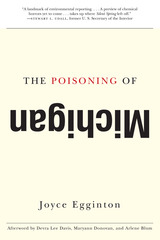 The Poisoning of Michigan
Joyce Egginton
Michigan State University Press, 1980 The highly toxic PBB poisoning of Michigan remains the most widespread chemical contamination known in U.S. history. The Poisoning of Michigan is an investigative journalist's account of the contamination of Michigan's dairy cattle with the highly toxic chemical PBB (polybrominated biphenyl) in 1973. A near relation of PCB, this now-banned substance, designed as a fire retardant, was mistaken for a nutritional supplement at a chemical plant. It ended up in cattle feed that was distributed to farms throughout the state. By the time the error was discovered, virtually all nine million residents of Michigan had been ingesting contaminated milk and meat for almost a year.
A new introduction by the author and an afterword by three distinguished environmental scientists explain how the legacy of Michigan's poisoning lives on—and how equally toxic substitutes for PBB still invade our homes and lives. This new edition of Egginton's environmental classic—first published in 1980 and long out of print—tells how the tragedy affected both the farm community and the wider populace, and how federal and state authorities failed to respond. "We were mired in a swamp of ignorance," one state official admitted.
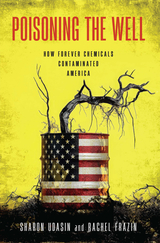 Poisoning the Well: How Forever Chemicals Contaminated America
Sharon Udasin and Rachel Frazin
Island Press, 2025 This is the shocking true-life story of how PFAS—a set of toxic chemicals most people have never heard of—poisoned the entire country. Based on original, shoe-leather reporting in four highly contaminated towns and damning documents from the polluters’ own files, Poisoning the Well traces an ugly history of corporate greed and devastation of human lives.
We learn that PFAS, the ‘forever chemicals’ found in everyday products, from cooking pans to mascara, are coursing through the veins of 97% of Americans. We witness the pain of families who lost sisters and daughters, cousins and neighbors, after PFAS leached into their drinking water. We discover evidence that the makers of forever chemicals may have known for decades about the deadly risks of their products—because their own scientists have been documenting these dangers since the 1960s. And we see the failure of our government, time after time, to provide basic protections to its citizens.
It is impossible to read this searing exposé without being infuriated by the recklessness of corporate America. But readers will also be awed by the spirit of ordinary people who, while fighting for their own lives, took it upon themselves to fix a broken regulatory system. Heart-wrenching and maddening, stirring and uplifting, Poisoning the Well offers a unique window into the worst and best of human nature. It is essential reading for anyone concerned about the unfettered power of industry and the invisible threat it poses to the health of the nation—and to each of us.
 A Poisonous Cocktail?: Aum Shinrikyo's Path to Violence
Ian Reader
National University of Singapore Press, 1996 This highly acclaimed study describes Aum Shinrikyo’s history, examines the various conflicts it was involved in, and discusses the contents of Asahara’s sermons and prophecies. Reader suggests that the Aum case is not unique but similar to other cases of religious violence. The March 1995 gas attack on the Tokyo subway system killed 12 people and injured thousands. Massive police raids and the subsequent investigation linked this attack (plus a variety of other criminal activities including murders) to Aum Shinrikyo, a small religious movement whose leader, Asahara Shoko, had prophesied that Armageddon was at hand. Many questions have been raised by the Aum affair. What were Aum's spiritual roots and the focus of Asahara's teaching? Why did a religious movement ostensibly focused on yoga, meditation, asceticism and the pursuit of enlightenment become involved in violent activities? What factors brought Aum into conflict with society at large, caused it to believe it was the victim of a huge conspiracy to destroy it, and impelled it to experiment with making nerve gasses, build weapons and form its own 'alternative government'? Ian Reader examines these questions by describing Aum's history, examining the various conflicts it was involved in, and discussing the contents of Asahara's sermons and prophesies. In so doing, he points to a combination of factors which together took Aum down a path of violence. Suggesting that the Aum case is not unique, he shows how it displays similarities with other cases of violence and conflict among religious and political movements in Japan and elsewhere.
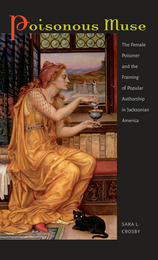 Poisonous Muse: The Female Poisoner and the Framing of Popular Authorship in Jacksonian America
Sara L. Crosby
University of Iowa Press, 2016 The nineteenth century was, we have been told, the “century of the poisoner,” when Britain and the United States trembled under an onslaught of unruly women who poisoned husbands with gleeful abandon. That story, however, is only half true. While British authorities did indeed round up and execute a number of impoverished women with minimal evidence and fomented media hysteria, American juries refused to convict suspected women and newspapers laughed at men who feared them.
This difference in outcome doesn’t mean that poisonous women didn’t preoccupy Americans. In the decades following Andrew Jackson’s first presidential bid, Americans buzzed over women who used poison to kill men. They produced and devoured reams of ephemeral newsprint, cheap trial transcripts, and sensational “true” pamphlets, as well as novels, plays, and poems. Female poisoners served as crucial elements in the literary manifestos of writers from Nathaniel Hawthorne and Edgar Allan Poe to George Lippard and the cheap pamphleteer E. E. Barclay, but these characters were given a strangely positive spin, appearing as innocent victims, avenging heroes, or engaging humbugs.
The reason for this poison predilection lies in the political logic of metaphor. Nineteenth-century Britain strove to rein in democratic and populist movements by labeling popular print “poison” and its providers “poisoners,” drawing on centuries of established metaphor that negatively associated poison, women, and popular speech or writing. Jacksonian America, by contrast, was ideologically committed to the popular—although what and who counted as such was up for serious debate. The literary gadfly John Neal called on his fellow Jacksonian writers to defy British critical standards, saying, “Let us have poison.” Poisonous Muse investigates how they answered, how they deployed the figure of the female poisoner to theorize popular authorship, to validate or undermine it, and to fight over its limits, particularly its political, gendered, and racial boundaries.
Poisonous Muse tracks the progress of this debate from approximately 1820 to 1845. Uncovering forgotten writers and restoring forgotten context to well-remembered authors, it seeks to understand Jacksonian print culture from the inside out, through its own poisonous language.
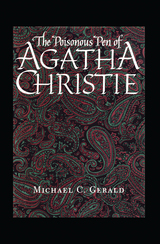 The Poisonous Pen of Agatha Christie
By Michael C. Gerald
University of Texas Press, 1993 Poisoning occurs in over half of Agatha Christie's many novels and stories. In fact, she used a larger number and broader selection of poisons and medicines, for a wider variety of purposes, with greater frequency, ingenuity, and scientific accuracy than any other detective fiction writer. Yet very little has been written on the use of drugs, poisons, and chemicals in Christie's fiction. The Poisonous Pen of Agatha Christie entertainingly and authoritatively fills this gap. Michael Gerald explores the use of poisons and drugs in Christie's fiction not only to commit murder and suicide but also to incapacitate a victim, alter behavior, treat disease, or support addiction. He also analyzes her views, as expressed in her fiction and autobiography, on drug addiction, the health professions, the value of medicines, and scientific discoveries. Especially valuable is Gerald's exhaustive listing of all drugs, poisons, and chemicals mentioned in Christie's novels and stories, with references to the work(s) in which each appears and the ways in which each is used. Other tables list all the novels and short stories and the chemicals that are used in each. Throughout, the properties of all drugs are clearly explained so that the reader needs no special scientific or medical knowledge. The Poisonous Pen of Agatha Christie illuminates the fictional uses Christie made of her real-life experiences as a hospital drug dispenser and as a provider of nursing care. It will be of interest to fans and scholars alike.
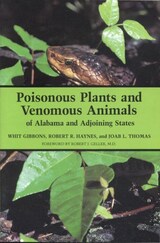 Poisonous Plants and Venomous Animals of Alabama and Adjoining States
Whit Gibbons, Robert R. Haynes, and Joab L. Thomas
University of Alabama Press, 1989 Wisteria, mistletoe, oleander, milkweed, narcissus, yellow Jessamine, wild hydrangea, trillium, all are plants easily recognized by most people. But these and more that 200 other plants in Alabama and the Southeast can cause systemic poisoning if ingested by human beings and livestock. This book describes these poisonous plants, including various mushrooms, and discusses the toxic properties, symptoms of poisoning, habitat occurrence, and geographic distribution. One chapter describes plants that cause dermatitis or other allergic reactions-plants including poison ivy, poison sumac, ragweed, clematis, and red maple. Other chapters of the book discuss venous animals-not only the six venomous snakes of the Southeast but also certain jellyfishes, centipedes, spiders, scorpions, stinging caterpillars, wasps, hornets, bees, catfishes, stingrays, and others- that might be encountered by people during recreation or work. The authors describe habitat occurrence, geographic distribution, and general life history and behavior for these animals. Numerous color photographs and drawings of both plants and animals are included for identification, as well as hundreds of range maps. The authors encourage an appreciation for the protective mechanisms hat help plants and animals defend themselves against predators or other threats. Although people must be able to recognize a poisonous plant or venomous animal in order to avoid suffering unwary contact, the book reassures the reader that Alabama’s flora and fauna gives us little cause to worry on a relative scale. The information provided increases our understanding of and admiration for these species and their environments.
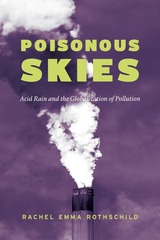 Poisonous Skies: Acid Rain and the Globalization of Pollution
Rachel Emma Rothschild
University of Chicago Press, 2019 The climate change reckoning looms. As scientists try to discern what the Earth’s changing weather patterns mean for our future, Rachel Rothschild seeks to understand the current scientific and political debates surrounding the environment through the history of another global environmental threat: acid rain.
The identification of acid rain in the 1960s changed scientific and popular understanding of fossil fuel pollution’s potential to cause regional—and even global—environmental harms. It showed scientists that the problem of fossil fuel pollution was one that crossed borders—it could travel across vast stretches of the earth’s atmosphere to impact ecosystems around the world. This unprecedented transnational reach prompted governments, for the first time, to confront the need to cooperate on pollution policies, transforming environmental science and diplomacy. Studies of acid rain and other pollutants brought about a reimagining of how to investigate the natural world as a complete entity, and the responses of policy makers, scientists, and the public set the stage for how societies have approached other prominent environmental dangers on a global scale, most notably climate change.
Grounded in archival research spanning eight countries and five languages, as well as interviews with leading scientists from both government and industry, Poisonous Skies is the first book to examine the history of acid rain in an international context. By delving deep into our environmental past, Rothschild hopes to inform its future, showing us how much is at stake for the natural world as well as what we risk—and have already risked—by not acting.
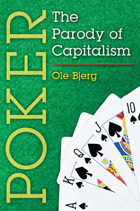 Poker: The Parody of Capitalism
Ole Bjerg
University of Michigan Press, 2011 Poker is an extraordinary worldwide phenomenon with major social, cultural, and political implications, and Poker: The Parody of Capitalism investigates the game of poker as a cultural expression of significance not unlike art, literature, film, or music. Tracing the history of poker and comparing the evolution of the game to the development of capitalism, Ole Bjerg complicates prevalent notions of “casino capitalism” and correspondingly facile and simplistic comparisons of late capitalism and poker. By employing Slavoj Žižek’s threefold distinction between imaginary-symbolic-real as a philosophical framework to analyze poker and to understand the basic strategies of the game, Bjerg explores the structural characteristics of poker in relation to other games, making a clear distinction between poker and other gambling games of pure chance such as roulette and craps. With its combination of social theory and empirical research, Poker offers an engaging exploration of a cultural trend. "Poker is a theoretically sophisticated, highly original and innovative treatment of a contemporary social phenomenon, and contributes greatly to our understanding of the nature of contemporary capitalism."
—Charles Livingstone, Monash University Australia
POL vol 49 num 1
The University of Chicago Press
University of Chicago Press Journals, 2017
POL vol 49 num 2
The University of Chicago Press
University of Chicago Press Journals, 2017
POL vol 49 num 3
The University of Chicago Press
University of Chicago Press Journals, 2017
POL vol 49 num 4
The University of Chicago Press
University of Chicago Press Journals, 2017
POL vol 50 num 1
The University of Chicago Press
University of Chicago Press Journals, 2018
POL vol 50 num 2
The University of Chicago Press
University of Chicago Press Journals, 2018
POL vol 50 num 3
The University of Chicago Press
University of Chicago Press Journals, 2018
POL vol 50 num 4
The University of Chicago Press
University of Chicago Press Journals, 2018
POL vol 51 num 1
The University of Chicago Press
University of Chicago Press Journals, 2019
POL vol 51 num 2
The University of Chicago Press
University of Chicago Press Journals, 2019
POL vol 51 num 3
The University of Chicago Press
University of Chicago Press Journals, 2019
POL vol 51 num 4
The University of Chicago Press
University of Chicago Press Journals, 2019
POL vol 52 num 1
The University of Chicago Press
University of Chicago Press Journals, 2020
POL vol 52 num 2
The University of Chicago Press
University of Chicago Press Journals, 2020
POL vol 52 num 3
The University of Chicago Press
University of Chicago Press Journals, 2020
POL vol 52 num 4
The University of Chicago Press
University of Chicago Press Journals, 2020
POL vol 53 num 1
The University of Chicago Press
University of Chicago Press Journals, 2021
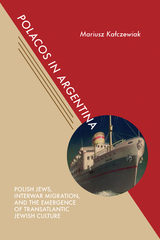 Polacos in Argentina: Polish Jews, Interwar Migration, and the Emergence of Transatlantic Jewish Culture
Mariusz Kalczewiak
University of Alabama Press, 2020 Winner of the Latin American Jewish Studies Association Best Book Award 2020
An examination of the social and cultural repercussions of Jewish emigration from Poland to Argentina in the 1920s and 1930s
Between the 1890s and 1930s, Argentina, following the United States and Palestine, became the main destination for Eastern European Ashkenazi Jews seeking safety, civil rights, and better economic prospects. In the period between 1918 and 1939, sixty thousand Polish Jews established new homes in Argentina. They formed a strong ethnic community that quickly embraced Argentine culture while still maintaining their unique Jewish-Polish character. This mass migration caused the transformation of cultural, social, and political milieus in both Poland and Argentina, forever shaping the cultural landscape of both lands.
In Polacos in Argentina: Polish Jews, Interwar Migration, and the Emergence of Transatlantic Jewish Culture, Mariusz Kałczewiak has constructed a multifaceted and in-depth narrative that sheds light on marginalized aspects of Jewish migration and enriches the dialogue between Latin American Jewish studies and Polish Jewish Studies. Based on archival research, Yiddish travelogues on Argentina, and the Yiddish and Spanish-language press, this study recreates a mosaic of entanglements that Jewish migration wove between Poland and Argentina.
Most studies on mass migration fail to acknowledge the role of the country of origin, but this innovative work approaches Jewish migration to Argentina as a continuous process that took place on both sides of the Atlantic. Taken as a whole, Polacos in Argentina enlightens the heterogeneous and complex issue of immigrant commitments, belongings, and expectations. Jewish emigration from Poland to Argentina serves as a case study of how ethnicity evolves among migrants and their children, and the dynamics that emerge between putting down roots in a new country and maintaining commitments to the country of origin.
Poland 1945: War and Peace
Magdalena Grzebalkowska (translated by John Markoff and Malgorzata Markoff)
University of Pittsburgh Press, 2020 The official end of World War II did not mean the end of the torments inflicted on civilians. This book brings us vivid personal accounts of ordinary people in Poland—Poles, Germans, Jews, Ukrainians, and others—caught up in the most violent war in history and its aftermath. No place experienced more intense suffering for a longer period of time than Poland—the first country to be invaded by both Nazi Germany and Soviet Russia and the last to be “liberated”. This is the story of how people survived the flames of war, and began to clear the rubble and try to rebuild their lives, from January to December 1945.
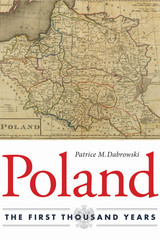 Poland: The First Thousand Years
Patrice M. Dabrowski
Northern Illinois University Press, 2016 Since its beginnings, Poland has been a moving target, geographically as well as demographically, and the very definition of who is a Pole has been in flux. In the late medieval and early modern periods, the country grew to be the largest in continental Europe, only to be later wiped off the map for more than a century. The Polish phoenix that rose out of the ashes of World War I was obliterated by the joint Nazi-Soviet occupation that began with World War II. The postwar entity known as Poland was shaped and controlled by the Soviet Union. Yet even under these constraints, Poles persisted in their desire to wrest from their oppressors a modicum of national dignity and, ultimately, managed to achieve much more than that.
Poland: The First Thousand Years is a sweeping account designed to amplify major figures, moments, milestones, and turning points in Polish history. These include important battles and illustrious individuals, alliances forged by marriages and choices of religious denomination, and meditations on the likes of the Polish battle slogan “for our freedom and yours” that resounded during the Polish fight for independence in the long 19th century and echoed in the Solidarity period of the late 20th century.
The experience of oppression helped Poles to endure and surmount various challenges in the 20th century, and Poland’s demonstration of strength was a model for other peoples seeking to extract themselves from foreign yoke. Patrice Dabrowski’s work situates Poland and the Poles within a broader European framework that locates this multiethnic and multidenominational region squarely between East and West. This illuminating chronicle will appeal to general readers, and will be of special interest to those of Polish descent who will appreciate Poland’s longstanding republican experiment.
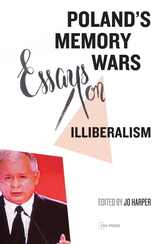 Poland's Memory Wars: Essays on Illiberalism
Jo Harper
Central European University Press, 2018 This volume of essays and interviews by Polish, British, and American academics and journalists provides an overview of current Polish politics for both informed and non-specialist readers. The essays consider why and how PiS, Law and Justice, the party of Jarosław Kaczynski, returned to power, and the why and how of its policies while in power. They help to make sense of how “history” plays a key role in Polish public life and politics. The descriptions of PiS in Western media tend to rework old stereotypes about Eastern Europe that had lain dormant for some time. The book addresses the underlying question whether PiS was simply successful in understanding its electorate, and just helped Poland to revert to its normal state. This new Normal seems quite similar to the old one: insular, conservative, xenophobic, and statist. The book looks at the current struggle between one ‘Poland’ and another; between a Western-looking Poland and an inward-looking Poland, the former more interested in opening to the world, competing in open markets, and working within the EU, and the latter more concerned with holding onto tradition. The question of illiberalism has gone from an ‘Eastern’ problem (Russia, Turkey, Hungary, etc.) to a global one (Brexit and the U.S. elections). This makes the very specific analysis of Poland’s illiberalism applicable on a broader scale.
 Poland's New Capitalism
Jane Hardy
Pluto Press, 2009 Poland was central to the historic changes that took place across Eastern Europe at the end of the Cold War. It is the largest economy in the region, and was at the forefront of opposition to communism, with the rise of Solidarity in the 1980s. This book explores the way that neoliberal policies have formed the basis of transformation, championed by both post-communist and post-Solidarity governments.
Jane Hardy provides a rigorous assessment of the impact of these policies on everyday lives and Poland's place in the European and global economy. These are firmly set in the context of the complex and dynamic political economy of the country. The role of capital in the form of transnational corporations and foreign direct investment is central to the analysis. The revival of trade unions and growth of new social movements are explored as they challenge Poland's new capitalism.
No other book studies Poland's recent history in such depth. This book will be a key text for students of political economy, international relations, social movements and labour studies.
 Polanski and Perception: The Psychology of Seeing and the Cinema of Roman Polanski
Davide Caputo
Intellect Books, 2012 A new approach to a director whose contribution to cinema is often overshadowed his personal life, Polanski and Perception focuses on Roman Polanski’s interest in the nature of perception and how this is manifested in his films. The incorporation of cognitive research into film theory is becoming increasingly widespread, with novel cinematic technologies and recent developments in digital projection making a strong grasp of perceptual psychology critical to fostering cognitive engagement. Informed by the work of neuropsychologist R. L. Gregory, this volume focuses primarily on two sets of films: the Apartment trilogyof Repulsion, Rosemary’s Baby, and The Tenant; and the Investigation trilogy of Chinatown, Frantic, and The Ninth Gate. Also included are case studies of Knife in the Water, Death and the Maiden, and The Ghost.Polanski and Perception presents a highly original and engaging new look at the work of this influential filmmaker.
Polarimetric Radar Signal Processing
Augusto Aubry
The Institution of Engineering and Technology, 2022 Polarimetric Radar Signal Processing provides an overview of advanced techniques and technologies developed for polarimetric radars to meet challenging performance requirements. It aims to cover some of the most challenging application fields, including: target detection for active and passive surveillance systems, interference suppression, detection of temporal changes in a given scene, environment classification, automatic target recognition, non-cooperative target imaging, polarimetric coding in radar and SAR systems, pol-SAR ambiguities suppression, space-debris detection, tracking, and classification, estimation of biological and behavioural parameters of insects, precipitations localization as well as type and motion parameters estimation via real-life practical polarimetric weather radar.
 The Polaris System Development: Bureaucratic and Programmatic Success in Government
Harvey M. Sapolsky
Harvard University Press, 1972 To many the goal of the Polaris program seemed unachievable when first proposed: to produce a ballistic missile with a range of over a thousand miles that would be capable of being launched from a submerged submarine. Today a fleet of Polaris-carrying submarines constantly patrols beneath the seas as a key element in a national strategy of deterrence. Harvey Sapolsky examines the Polaris missile program, one of the most costly and successful ever undertaken by the federal government, and describes the bureaucratic strategies the Polaris proponents employed to control the threatening environment.
Sapolsky points out that the Program Evaluation and Review Technique (PERT), which gained the program a worldwide reputation for managerial innovativeness, was as much a device to protect the program from external interference as an effective management tool. The book should be valuable to those concerned with bureaucratic politics, management techniques, weapons procurement, and arms control problems as well as to those who seek to understand the operations of American government.
 Polarization and Democracy in Latin America: Legacies of the Left Turn
Santiago Anria and Kenneth M. Roberts
University of Chicago Press, 2026 An insightful examination of Latin America’s contemporary democratic landscape and how it is marked by patterns of polarization and volatility. Although Latin American democracies have shown considerable resilience, today they face new forms of political polarization and instability. These challenges are closely connected to the legacies of the region’s “left turn,” which sought to transform entrenched inequalities and social hierarchies in the early twenty-first century. Unprecedented in its scope and duration, the left turn reflected an underlying realignment of political contestation in a highly unequal region. Yet despite notable achievements in addressing social needs, leftist parties struggled to deepen democracy by empowering popular majorities, and they faced powerful elite backlashes. Through a comparative analysis of seven South American countries, Santiago Anria and Kenneth M. Roberts trace the different origins and trajectories in power of the populist and social democratic currents that emerged within the left turn. Anria and Roberts argue that today’s democratic orders face intensifying polarization and institutional fragility, even where social democratic parties made explicit efforts to build broad coalitions and temper political conflict. They show how activist networks and social movements on the left and the right triggered latent political conflicts and are now reshaping democratic competition and the terms of social inclusion in South American politics.
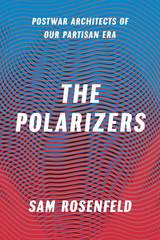 The Polarizers: Postwar Architects of Our Partisan Era
Sam Rosenfeld
University of Chicago Press, 2017 Even in this most partisan and dysfunctional of eras, we can all agree on one thing: Washington is broken. Politicians take increasingly inflexible and extreme positions, leading to gridlock, partisan warfare, and the sense that our seats of government are nothing but cesspools of hypocrisy, childishness, and waste. The shocking reality, though, is that modern polarization was a deliberate project carried out by Democratic and Republican activists.
In The Polarizers, Sam Rosenfeld details why bipartisanship was seen as a problem in the postwar period and how polarization was then cast as the solution. Republicans and Democrats feared that they were becoming too similar, and that a mushy consensus imperiled their agendas and even American democracy itself. Thus began a deliberate move to match ideology with party label—with the toxic results we now endure. Rosenfeld reveals the specific politicians, intellectuals, and operatives who worked together to heighten partisan discord, showing that our system today is not (solely) a product of gradual structural shifts but of deliberate actions motivated by specific agendas. Rosenfeld reveals that the story of Washington’s transformation is both significantly institutional and driven by grassroots influences on both the left and the right.
The Polarizers brilliantly challenges and overturns our conventional narrative about partisanship, but perhaps most importantly, it points us toward a new consensus: if we deliberately created today’s dysfunctional environment, we can deliberately change it.
 Polarizing Development: Alternatives to Neoliberalism and the Crisis
Edited by Lucia Pradella and Thomas Marois
Pluto Press, 2015 The global economic crisis has exposed the limits of neoliberalism and dramatically deepened social polarization. Yet, despite increasing social resistance and opposition, neoliberalism prevails globally.
Radical alternatives, moreover, are only rarely debated. And if they are, such alternatives are reduced to new Keynesian and new developmental agendas, which fail to address existing class divisions and imperialist relations of domination.
This collection of essays polarizes the debate between radical and reformist alternatives by exploring head-on the antagonistic structure of capitalist development. The contributors ground their proposals in an international, non-Eurocentric and Marxian inspired analysis of capitalism and its crises. From Latin America to Asia, Africa to the Middle East and Europe to the US, social and labour movements have emerged as the protagonists behind creating alternatives.
This book’s new generation of scholars has written accessible yet theoretically informed and empirically rich chapters elaborating radical worldwide strategies for moving beyond neoliberalism, and beyond capitalism. The intent is to provoke critical reflection and positive action towards substantive change.
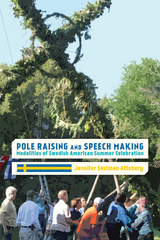 Pole Raising and Speech Making: Modalities of Swedish American Summer Celebration
Jennifer Eastman Attebery
Utah State University Press, 2015 In Pole Raising and Speech Making, author Jennifer Eastman Attebery focuses on the beginnings of the traditional Scandinavian Midsummer celebration and the surrounding spring-to-summer seasonal festivities in the Rocky Mountain West during the height of Swedish immigration to the area—1880–1917. Combining research in folkloristics and history, Attebery explores various ways that immigrants blended traditional Swedish Midsummer-related celebrations with local civic celebrations of American Independence Day on July 4 and the Mormons’ Pioneer Day on July 24. Functioning as multimodal observances with multiple meanings, these holidays represent and reconsider ethnicity and panethnicity, sacred and secular relationships, and the rural and the urban, demonstrating how flexible and complex traditional celebrations can be. Providing a wealth of detail and information surrounding little-studied celebrations and valuable archival and published primary sources—diaries, letters, speeches, newspaper reports, and images—Pole Raising and Speech Making is proof that non-English immigrant culture must be included when discussing “American” culture. It will be of interest to scholars and graduate students in ethnic studies, folklore, ritual and festival studies, and Scandinavian American cultural history.
 Pole/Jew: History, Literature, Identity, Future
John J. Bukowczyk and Halina Filipowicz
Ohio University Press Pole/Jew brings together a group of scholars—about half of them Jewish, about half of them ethnic Poles—from the United States, Poland, the United Kingdom, and Canada and enlists their diverse methodological and generational perspectives to push debates over Polish-Jewish relations beyond entrenched and reductive positions. At the core of the volume are the following questions: –What impact has the Holocaust had on Polish history and Polish literature? –How has the Holocaust affected Polish-Jewish—and Polish—identity? –What future is there for relations between Poland’s small Jewish minority and the country’s overwhelming ethnic Polish majority? Between Poland and Israel? Between Jews of the diaspora and ethnic Poles abroad? –Which research areas have yet to be addressed or revisited and reexamined? –Are there ways to move beyond the reductive notion of 1989 (i.e., the fall of the communist regime in Poland) as wall and fulcrum? By addressing these compelling questions, this volume offers fresh perspectives and encourages a nuanced understanding of Polish-Jewish relations. Contributors:
M. B. B. Biskupski
Robert Blobaum
John J. Bukowczyk
Patrice M. Dabrowski
Halina Filipowicz
Agnieszka Jezyk
Bozena Karwowska
Kamil Kijek
Kate Korycki
Elzbieta Kossewska
Grazyna J. Kozaczka
Stanislaw Krajewski
Adam Lipszyc
Wiktor Marzec
Alina Molisak
Stanislaw Obirek
Benjamin Paloff
Antony Polonsky
Brian Porter-Szucs
Piotr Puchalski
Roma Sendyka
Dariusz Stola
Katarzyna Zechenter
Joshua D. Zimmerman
Geneviève Zubrzycki
Slawomir Zurek
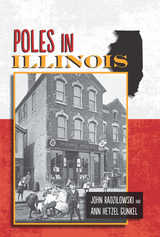 Poles in Illinois
John Radzilowski and Ann Hetzel Gunkel
Southern Illinois University Press, 2020 Illinois boasts one of the most visible concentrations of Poles in the United States. Chicago is home to one of the largest Polish ethnic communities outside Poland itself. Yet no one has told the full story of our state’s large and varied Polish community—until now. Poles in Illinois is the first comprehensive history to trace the abundance and diversity of this ethnic group throughout the state from the 1800s to the present.
Authors John Radzilowski and Ann Hetzel Gunkel look at family life among Polish immigrants, their role in the economic development of the state, the working conditions they experienced, and the development of their labor activism. Close-knit Polish American communities were often centered on parish churches but also focused on fraternal and social groups and cultural organizations. Polish Americans, including waves of political refugees during World War II and the Cold War, helped shape the history and culture of not only Chicago, the “capital” of Polish America, but also the rest of Illinois with their music, theater, literature, food.
With forty-seven photographs and an ample number of extensive excerpts from first-person accounts and Polish newspaper articles, this captivating, highly readable book illustrates important and often overlooked stories of this ethnic group in Illinois and the changing nature of Polish ethnicity in the state over the past two hundred years. Illinoisans and Midwesterners celebrating their connections to Poland will treasure this rich and important part of the state’s history.
Poles in Michigan
Dennis Badaczewski
Michigan State University Press, 2002 One of the most vibrant and influential ethnic groups in Michigan, Poles have a long history of migration and settlement in the Great Lakes State. From Michigan’s earliest Polish marriage (in 1762) to the most recent post-Cold War migrations, each successive wave of settlement has enriched and enlivened Michigan culture. Yet, Paczki Day and Polish festivals represent a relatively small portion of the Polish experience. Commitments both to religious and ethnic identity, and a belief in the American vision of landownership and success, have combined to create a mainstream ethnic community abundant in ethnic pride. Poles’ success in Michigan continues to attract Polish immigrants from Europe, just as Polonia continues to make its mark on Michigan’s culture.
Poles in Wisconsin
Susan Gibson Mikos
Wisconsin Historical Society Press, 2012 In this all-new addition to the People of Wisconsin series, author Susan Mikos traces the history of Polish immigrants as they settled in America’s northern heartland. The second largest immigrant population after Germans, Poles put down roots in all corners of the state, from the industrial center of Milwaukee to the farmland around Stevens Point, in the Cutover, and beyond. In each locale, they brought with them a hunger to own land, a willingness to work hard, and a passion for building churches. Included is a first person memoir from Polish immigrant Maciej Wojda, translated for the first time into English, and historical photographs of Polish settlements around our state.
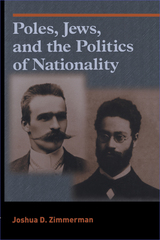 Poles, Jews, and the Politics of Nationality: The Bund and the Polish Socialist Party in Late Tsarist Russia, 1892–1914
Joshua D. Zimmerman
University of Wisconsin Press, 2004 The Jewish experience on Polish lands is often viewed backwards through the lens of the Holocaust and the ethnic rivalries that escalated in the period between the two world wars. Critical to the history of Polish-Jewish relations, however, is the period prior to World War I when the emergence of mass electoral politics in Czarist Russia led to the consolidation of modern political parties. Using sources published in Polish, Yiddish, Hebrew, and Russian, Joshua D. Zimmerman has compiled a full-length English-language study of the relations between the two dominant progressive movements in Russian Poland. He examines the Polish Socialist Party (PPS), which sought social emancipation and equal civil rights for minority nationalities, including Jews, under a democratic Polish republic, and the Jewish Labor Bund, which declared that Jews were a nation distinct from Poles and Russians and advocated cultural autonomy. By 1905, the PPS abandoned its call for Jewish assimilation, and recognized Jews as a separate nationality. Zimmerman demonstrates persuasively that Polish history in Czarist Russia cannot be fully understood without studying the Jewish influence and that Jewish history was equally infused with the Polish influence.
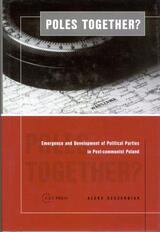 Poles Together?: The Emergence and Development of Political Parties in Postcommunist Poland
Aleks Szczerbiak
Central European University Press, 2001 This book fills a gap in the existing literature on how parties and party systems are developing in the new democracies of post-communist Central and Eastern Europe. It provides the first detailed, empirically based examination from a structural and organizational perspective of the new parties and political groupings that have emerged in Poland since the collapse of communism in 1989. The author develops his argument on the basis of an analysis of five key structural and organizational variables: the internal distribution of power and modes of representation within the parties; the role of the party bureaucracy; the relationship between parties and their electorates; the development of parties as membership organizations; and the relationship between parties and the state. As the first in-depth, empirically grounded single-country study of party structure and organization in post-communist Eastern Europe, the book provides an opportunity to draw broader conclusions about the process of Central and East European party development and will contribute significantly towards the development of a post-communist political party model. Szczerbiak sheds light on an important aspect of the more general process of post-communist democratization in the region and provides a major contribution to one of the least-explored areas of transition.
Poletown: COMMUNITY BETRAYED
Jeanie Wylie
University of Illinois Press, 1989 More than 4,200 residents of Detroit's "Poletown" community lost their homes in the 1980s when the neighborhood was razed to accommodate construction of a Cadillac plant on land where generations of Polish immigrants had lived, worked, and worshipped. Poletown is the story of the only group in Detroit to oppose the construction plan: the Poles and blacks who fought side by side to save their neighborhood, one of the city's oldest integrated communities.
"This book is about the ramifications of raw corporate power going unchecked." -- John Conyers, Michigan congressman
"Racial class is a fundamental problem in America. But Poletown demonstrates that economic class is even more fundamental." -- Rev. Jesse Jackson
Police Administration in Boston: Survey of Crime and Criminal Justice in Boston, conducted by the Harvard Law School, Volume III
Leonard Vance Harrison
Harvard University Press A minor portion of this volume has to do with phases of police administration that are of purely local interest in Boston; the greater part relates to problems encountered in every large police organization. In recognition of the fact that improvement in quality of personnel is the foundation upon which the prospects of better policing must inevitably rest, the book treats exhaustively the selection of recruits, departmental training, promotion, and discipline. There are novel and far-reaching proposals regarding police organization, the use of civil service, the development of police training schools, the coordination of the work of the police with that of the prosecutor’s office, and improvement of police patrol.
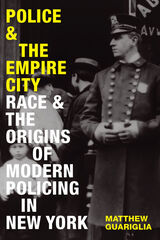 Police and the Empire City: Race and the Origins of Modern Policing in New York
Matthew Guariglia
Duke University Press, 2023 During the years between the Civil War and World War II, police in New York City struggled with how to control a diverse metropolis. In Police and the Empire City Matthew Guariglia tells the history of the New York Police Department to show how its origins were built upon and inseparably entwined with the history of race, ethnicity, and whiteness in the United States. Guariglia explores the New York City Police Department through its periods of experimentation and violence as police experts imported tactics from the US occupation of the Philippines and Cuba, devised modern bureaucratic techniques to better suppress Black communities, and infiltrated supposedly unknowable immigrant neighborhoods. Innovations ranging from recruiting Chinese, Italian, and German police to form “ethnic squads” to the use of deportation and federal immigration restrictions to control local crime—even the introduction of fingerprinting—were motivated by attempts to govern a multiracial city. Campaigns to remake the police department created an urban landscape where power, gender, sexuality, race, ethnicity, crime, and bodies collided and provided a foundation for the supposedly color-blind, technocratic, federally backed, and surveillance-based policing of today.
Police Burnout: Signs, Symptoms and SOLUTIONS
Gerald Loren Fishkin, PH.D.
Parkhurst Brothers, Inc. Police Burnout is the synthesis of Dr. Fishkin’s sixteen years experience as a police psychologist, and is a must read for all police officers, family members, police and public safety administrators, as well as mental health specialists who work in the area of law enforcement. It is a modern classic in the field of police psychology.
 Police in the Hallways: Discipline in an Urban High School
Kathleen Nolan
University of Minnesota Press, 2011 As zero-tolerance discipline policies have been instituted at high schools across the country, police officers are employed with increasing frequency to enforce behavior codes and maintain order, primarily at poorly performing, racially segregated urban schools. Actions that may once have sent students to the detention hall or resulted in their suspension may now introduce them to the criminal justice system. In Police in the Hallways, Kathleen Nolan explores the impact of policing and punitive disciplinary policies on the students and their educational experience. Through in-depth interviews with and observations of students, teachers, administrators, and police officers, Nolan offers a rich and nuanced account of daily life at a Bronx high school where police patrol the hallways and security and discipline fall under the jurisdiction of the NYPD. She documents how, as law enforcement officials initiate confrontations with students, small infractions often escalate into “police matters” that can lead to summonses to criminal court, arrest, and confinement in juvenile detention centers. Nolan follows students from the classroom and the cafeteria to the detention hall, the dean’s office, and the criminal court system, clarifying the increasingly intimate relations between the school and the criminal justice system. Placing this trend within the context of recent social and economic changes, as well as developments within criminal justice and urban school reform, she shows how this police presence has created a culture of control in which penal management overshadows educational innovation. Police in the Hallways also examines the prevalent forms of oppositional behavior through which students express their frustrations and their deep sense of exclusion. With compassion and clear-eyed analysis, Nolan sounds a warning about this alarming convergence of prison and school cultures and the negative impact that it has on the real lives of low-income students of color—and, in turn, on us all.
 Police in Transition: Essays on the Police Forces in Transition Countries
András Kádár
Central European University Press, 2001 The police forces of the transition countries in Central and Eastern Europe have to undergo profound reform to be able to respond to the needs of society; to serve the public and not just the government, and to prove that they can effectively combat crime. This volume is the result of a survey by the Hungarian Helsinki Committee concerning the mode and extent of changes police forces of the post-communist countries have undergone since 1989 – 1990. Information is provided about the relevant tasks, organization, personnel, accountability, and international relations of the national police forces and about the coercive measures they are entitled to use. Written by internationally acknowledged experts of policing and representatives of human-rights organizations, Police in Transition deals with the questions of transition, European trends in the governance of the police, the relationship between police and criminality, the role of the police in the constitutional framework, the limits of policing, police brutality, civilian oversight of the police and the possibilities of a democratic reform of police forces in Central and Eastern Europe.
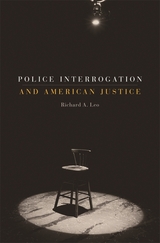 Police Interrogation and American Justice
Richard A. Leo
Harvard University Press, 2009 "Read him his rights." We all recognize this line from cop dramas. But what happens afterward? In this book, Richard Leo sheds light on a little-known corner of our criminal justice system--the police interrogation.
Incriminating statements are necessary to solve crimes, but suspects almost never have reason to provide them. Therefore, as Leo shows, crime units have developed sophisticated interrogation methods that rely on persuasion, manipulation, and deception to move a subject from denial to admission, serving to shore up the case against him. Ostensibly aimed at uncovering truth, the structure of interrogation requires that officers act as an arm of the prosecution.
Skillful and fair interrogation allows authorities to capture criminals and deter future crime. But Leo draws on extensive research to argue that confessions are inherently suspect and that coercive interrogation has led to false confession and wrongful conviction. He looks at police evidence in the court, the nature and disappearance of the brutal "third degree," the reforms of the mid-twentieth century, and how police can persuade suspects to waive their Miranda rights.
An important study of the criminal justice system, Police Interrogation and American Justice raises unsettling questions. How should police be permitted to interrogate when society needs both crime control and due process? How can order be maintained yet justice served?
Police Interrogation and Confessions
Yale Kamisar
University of Michigan Press, 2025 A historical overview of the Supreme Court's efforts to deal with a most troublesome and most controversial cluster of problems from pre-Miranda days to the present time.
Police, Politics, and Race: The New York City Referendum on Civilian Review
David W. Abbott, Louis H. Gold, and Edward T. Rogowsky
Harvard University Press In November of 1966, the voters of New York City defeated a proposal to establish a Civilian Review Board of the New York City Police Department, a board intended to control police brutality against minority groups. This important work, an attempt to understand why the proposal was defeated, is a penetrating survey of the attitudes of a representative sample of white Brooklyn voters on civilian review of the police, crime and safety, race, and the civil rights movement. The survey was conducted immediately following the New York City referendum.
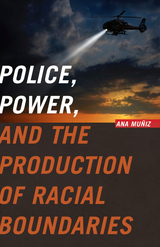 Police, Power, and the Production of Racial Boundaries
Muñiz, Ana
Rutgers University Press, 2015 Based on five years of ethnography, archival research, census data analysis, and interviews, Police, Power, and the Production of Racial Boundaries reveals how the LAPD, city prosecutors, and business owners struggled to control who should be considered “dangerous” and how they should be policed in Los Angeles. Sociologist Ana Muñiz shows how these influential groups used policies and everyday procedures to criminalize behaviors commonly associated with blacks and Latinos and to promote an exceedingly aggressive form of policing. Muñiz illuminates the degree to which the definitions of “gangs” and “deviants” are politically constructed labels born of public policy and court decisions, offering an innovative look at the process of criminalization and underscoring the ways in which a politically powerful coalition can define deviant behavior. As she does so, Muñiz also highlights the various grassroots challenges to such policies and the efforts to call attention to their racist effects. Muñiz describes the fight over two very different methods of policing: community policing (in which the police and the community work together) and the “broken windows” or “zero tolerance” approach (which aggressively polices minor infractions—such as loitering—to deter more serious crime). Police, Power, and the Production of Racial Boundaries also explores the history of the area to explain how Cadillac-Corning became viewed by outsiders as a “violent neighborhood” and how the city’s first gang injunction—a restraining order aimed at alleged gang members—solidified this negative image. As a result, Muñiz shows, Cadillac-Corning and other sections became a test site for repressive practices that eventually spread to the rest of the city.
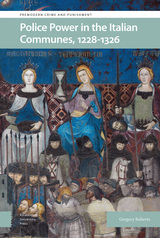 Police Power in the Italian Communes, 1228-1326
Gregory Roberts
Amsterdam University Press, 2019 Medieval states are widely assumed to have lacked police forces. Yet in the Italian city-republics, soldiers patrolled the streets daily in search of lawbreakers. Police Power in the Italian Communes, 1228-1326 is the first book to examine the emergence of urban policing in medieval Italy and its impact on city life. Focusing on Bologna in the thirteenth and early fourteenth centuries, Gregory Roberts shows how police forces gave teeth to the communes' many statutes through a range of patrol activities. Whether seeking outlaws in the countryside or nighttime serenaders in the streets, urban police forces pursued lawbreakers energetically and effectively. They charged hundreds of individuals each year with arms-bearing, gambling, and curfew violations, convicting many of them in the process. Roberts draws on a trove of unpublished evidence from judicial archives, rich with witness testimony, to paint a vivid picture of policing in daily life and the capacity of urban governments to coerce. Breaking new ground in the study of violence, justice, and state formation in the Middle Ages, Police Power in the Italian Communes sheds fresh light on the question of how ostensibly modern institutions emerge from premodern social orders.
The Police Procedural
George N. Dove
University of Wisconsin Press, 1982 In the late 1940s and early 1950s a new kind of detective story appeared on the scene. This was a story in which the mystery is solved by regular police detectives, usually working in teams and using ordinary police routines. This kind of narrative is customarily called the "police procedural" story. And it is the subject of this book. Though there has been numberless writers of these stories, there has never been a book of criticism before.
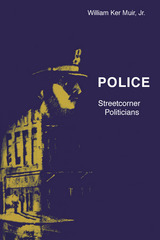 Police: Streetcorner Politicians
William K. Muir Jr.
University of Chicago Press, 1979 "This book . . . examines the problem of police corruption . . . in such a way that the stereotype of the crude, greedy cop who is basically a grown-up delinquent, if not an out-and-out robber, yields to portraits of particular men, often of earnest good will and even more than ordinary compassion, contending with an enormously demanding and challenging job."—Robert Coles, New Yorker
"Other social scientists have observed policemen on patrol, or have interviewed them systematically. Professor Muir has brought the two together, and, because of the philosophical depth he brings to his commentaries, he has lifted the sociology of the police on to a new level. He has both observed the men and talked with them at length about their personal lives, their conceptions of society and of the place of criminals within it. His ambition is to define the good policeman and to explain his development, but his achievement is to illuminate the philosophical and occupational maturation of patrol officers in 'Laconia' (a pseudonym) . . . . His discussions of [the policemen's] moral development are threaded through with analytically suggestive formulations that bespeak a wisdom very rarely encountered in reports of sociological research."—Michael Banton, Times Literary Supplement
 Policemen of the Tsar: Local Police in an Age of Upheaval
Robert J. Abbott
Central European University Press, 2022 Founded by Peter the Great in 1718, Russia’s police were key instruments of tsarist power. In the reign of Alexander II (1855-1881), local police forces took on new importance. The liberation of 23 million serfs from landlord control, growing fear of crime, and the terrorist violence of the closing years challenged law enforcement with new tasks that made worse what was already a staggering burden. (“I am obliged to inform Your Imperial Highness that the police often fail to carry out their assignments and, when they do execute them, they do so poorly because of their moral corruption…”) This book describes the regime’s decades-long struggle to reform and strengthen the police. The author reviews the local police’s role and performance in the mid-nineteenth century and the implications of the largely unsuccessful effort to transform them. From a longer-term perspective, the study considers how the police’s systemic weaknesses undermined tsarist rule, impeded a range of liberalizing reforms, perpetuated reliance on the military to maintain law and order, and gave rise to vigilante justice. While its primary focus is on European Russia, the analysis also covers much of the imperial periphery, discussing the police systems in the Baltic Provinces, Congress Poland, the Caucasus, Central Asia, and Siberia.
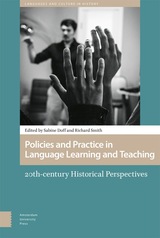 Policies and Practice in Language Learning and Teaching: 20th-century Historical Perspectives
Sabine Doff
Amsterdam University Press, 2023 This book brings together studies from Georgia, Germany, Italy, Japan, New Zealand, Poland, South Korea, and the UK which explore links between policy and practice in language teaching in the twentieth century. The 14 contributions set out to expand the remit of ‘grounded history’ within the field of History of Language Learning and Teaching (HoLLT) by focusing on language teaching policies and linking these to practices and to contexts, situating policy formulation in particular contexts on the one hand, and exploring the relationship between policy and practice on the other. In this sense, the book shows how the theories, policy pronouncements, curricula, textbooks, and overall teaching approaches which tend to feature in most histories of language teaching always emerge from particular, researchable contexts, and, in the other direction, are interpreted and responded to in practice, again, in particular contexts. In this way, we hope to contribute a context-based perspective that highlights diversity of practices, in opposition to received views that language teaching methodology is ‘universal’ and context-free.
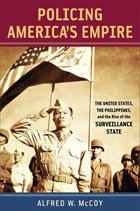 Policing America’s Empire: The United States, the Philippines, and the Rise of the Surveillance State
Alfred W. McCoy
University of Wisconsin Press, 2009 At the dawn of the twentieth century, the U.S. Army swiftly occupied Manila and then plunged into a decade-long pacification campaign with striking parallels to today’s war in Iraq. Armed with cutting-edge technology from America’s first information revolution, the U.S. colonial regime created the most modern police and intelligence units anywhere under the American flag. In Policing America’s Empire Alfred W. McCoy shows how this imperial panopticon slowly crushed the Filipino revolutionary movement with a lethal mix of firepower, surveillance, and incriminating information. Even after Washington freed its colony and won global power in 1945, it would intervene in the Philippines periodically for the next half-century—using the country as a laboratory for counterinsurgency and rearming local security forces for repression. In trying to create a democracy in the Philippines, the United States unleashed profoundly undemocratic forces that persist to the present day.
But security techniques bred in the tropical hothouse of colonial rule were not contained, McCoy shows, at this remote periphery of American power. Migrating homeward through both personnel and policies, these innovations helped shape a new federal security apparatus during World War I. Once established under the pressures of wartime mobilization, this distinctively American system of public-private surveillance persisted in various forms for the next fifty years, as an omnipresent, sub rosa matrix that honeycombed U.S. society with active informers, secretive civilian organizations, and government counterintelligence agencies. In each succeeding global crisis, this covert nexus expanded its domestic operations, producing new contraventions of civil liberties—from the harassment of labor activists and ethnic communities during World War I, to the mass incarceration of Japanese Americans during World War II, all the way to the secret blacklisting of suspected communists during the Cold War.
“With a breathtaking sweep of archival research, McCoy shows how repressive techniques developed in the colonial Philippines migrated back to the United States for use against people of color, aliens, and really any heterodox challenge to American power. This book proves Mark Twain’s adage that you cannot have an empire abroad and a republic at home.”—Bruce Cumings, University of Chicago
“This book lays the Philippine body politic on the examination table to reveal the disease that lies within—crime, clandestine policing, and political scandal. But McCoy also draws the line from Manila to Baghdad, arguing that the seeds of controversial counterinsurgency tactics used in Iraq were sown in the anti-guerrilla operations in the Philippines. His arguments are forceful.”—Sheila S. Coronel, Columbia University “Conclusively, McCoy’s Policing America’s Empire is an impressive historical piece of research that appeals not only to Southeast Asianists but also to those interested in examining the historical embedding and institutional ontogenesis of post-colonial states’ police power apparatuses and their apparently inherent propensity to implement illiberal practices of surveillance and repression.”—Salvador Santino F. Regilme, Jr., Journal of Current Southeast Asian Affairs “McCoy’s remarkable book . . . does justice both to its author’s deep knowledge of Philippine history as well as to his rare expertise in unmasking the seamy undersides of state power.”—POLAR: Political and Legal Anthropology Review Winner, George McT. Kahin Prize, Southeast Asian Council of the Association for Asian Studies
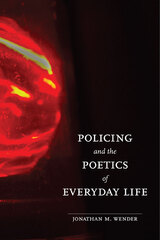 Policing and the Poetics of Everyday Life
Jonathan M. Wender
University of Illinois Press, 2008 Policing and the Poetics of Everyday Life takes a unique approach to the investigation of several abiding issues at the center of criminological and sociological inquiry by engaging them from a standpoint grounded in philosophy and aesthetics. This study by a self-described “philosopher-cop” develops a phenomenological interpretation of police-citizen encounters, revealing the importance of metaphysics in everyday life through a disclosure of the grounding principles that inform the bureaucratic approach to human predicaments. Jonathan M. Wender, a social philosopher and veteran police sergeant, brings a refreshing new voice to academic and practical discussions of social questions that are otherwise addressed almost exclusively from a narrow scientific or administrative perspective. This book reflects a conscious attempt to follow the general model of Martin Heidegger’s Zollikon Seminars, in which Heidegger engaged psychiatrists and psychologists in a sustained dialogue aimed at developing their critical awareness of the unexamined philosophical foundations informing their everyday clinical practice. Wender draws on Heidegger to argue that “praxis is poetry” and from this standpoint interprets all social action as intentional creation (or “poiesis”), which by its very nature is intrinsically meaningful. Using an interpretive framework that he calls a “phenomenological aesthetics of encounter,” Wender takes up a number of case studies of police-citizen encounters, including cases of domestic violence, contacts with juveniles, drug-related situations, instances of mental and emotional crisis, and death.
 Policing as Though People Matter
Dorothy Guyot
Temple University Press, 1991 In this work, Dorothy Guyot asks: What makes a good police department? In analyzing the transformation of the police department in Troy, New York. she explains a set of standards by which the quality of police service can be judged and illustrates a way to improve services over the long run. Throughout her case study and analysis, Guyot asks penetrating questions about the performance of police departments. She maintains that when police officers are treated as professionals by their department, they will act professionally toward citizens. This examination of fifteen years of policymaking within a single department looks at policing as a complex social service in an urban environment. Rather than accepting the traditional "chain of command" authoritarian model of police administration, Guyot draws an analogy to hospital organization and suggests that the practitioner, whether a physician or a cop on the beat, performs the service with a tremendous amount of discretion. It follows that better management tactics at the police chief level as well as better employment policies will result in more responsible and dedicated policing by officers. The author demonstrates how, under the leadership of George W. O’Connor, the Troy P.D. changed from a backward department to one that promotes competence, as well as concern for citizens, among its individual officers. The book is organized by issues and provides a full picture of how upgrading can be achieved through clear and specific goals. Throughout this case study, Guyot provides many examples of the behavior of police officers on the street, to illustrate the differences made by restructuring the department.
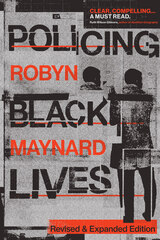 Policing Black Lives: State Violence in Canada from Slavery to the Present
Robyn Maynard
Duke University Press, 2025 Robyn Maynard’s bestselling Policing Black Lives offers a comprehensive account of the state-sanctioned surveillance, criminalization, and punishment of Black lives in Canada. In this revised and expanded edition, Maynard exposes Canada’s veneer of multiculturalism and tolerance to document how half a century of police reforms have expanded the scope and scale of policing and undermined Black freedom struggles in the wake of global Black uprisings in 2020. She traces the afterlives of slavery across multiple institutions and illuminates the state’s role in perpetuating colonial dispossession, racial profiling, police killings, incarceration, immigration detention, deportation, exploitative migrant labor practices, and the school-to-prison pipeline. At the same time, Maynard foregrounds the ubiquity of Black resistance while offering new insights on how to build liveable futures without policing. Advancing a compelling vision for making policing obsolete and building new forms of safety, Policing Black Lives is an essential text that will guide and inspire activists, students, scholars, and all those working toward Black futures beyond surveillance and confinement.
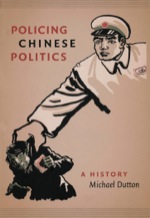 Policing Chinese Politics: A History
Michael Dutton
Duke University Press, 2005 Beginning with the bloody communist purges of the Jiangxi era of the late 1920s and early 1930s and moving forward to the wild excesses of the Cultural Revolution, Policing Chinese Politics explores the question of revolutionary violence and the political passion that propels it. “Who are our enemies, who are our friends, that is a question germane to the revolution,” wrote Mao Zedong in 1926. Michael Dutton shows just how powerful this one line was to become. It would establish the binary division of life in revolutionary China and lead to both passionate commitment and revolutionary excess. The political history of revolutionary China, he argues, is largely framed by the attempts of Mao and the Party to harness these passions. The economic reform period that followed Mao Zedong’s rule contained a hint as to how the magic spell of political faith and commitment could be broken, but the cost of such disenchantment was considerable. This detailed, empirical tale of Chinese socialist policing is, therefore, more than simply a police story. It is a parable that offers a cogent analysis of Chinese politics generally while radically redrafting our understanding of what politics is all about. Breaking away from the traditional elite modes of political analysis that focus on personalities, factions, and betrayals, and from “rational” accounts of politics and government, Dutton provides a highly original understanding of the far-reaching consequences of acts of faith and commitment in the realm of politics.
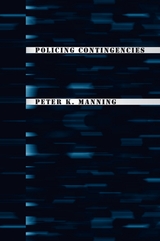 Policing Contingencies
Peter K. Manning
University of Chicago Press, 2003 Despite constant calls for reform, policing in the United States and Britain has changed little over the past thirty years. In Policing Contingencies, Peter K. Manning draws on decades of fieldwork to investigate how law enforcement works on the ground and in the symbolic realm, and why most efforts to reform the way police work have failed so far.
Manning begins by developing a model of policing as drama—a way of communicating various messages to the public in an effort to enforce moral boundaries. Unexpected outcomes, or contingencies, continually rewrite the plot of this drama, requiring officers to adjust accordingly. New information technologies, media scrutiny and representations, and community policing also play important roles, and Manning studies these influences in detail. He concludes that their impacts have been quite limited, because the basic structure of policing—officer assessments based on encounters during routine patrols—has remained unchanged. For policing to really change, Manning argues, its focus will need to shift to prevention.
Written with precision and judiciously argued, Policing Contingencies will be of value to scholars of sociology, criminology, information technology, and cultural theory.
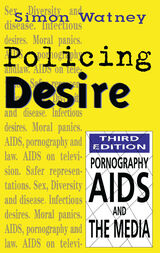 Policing Desire: Pornography, AIDS and the Media
Simon Watney
University of Minnesota Press, 1997 An updated edition of this essential work. Since its initial publication, Policing Desire has proved to be an unparalleled analysis of “the cacophony of voices which sounds through every institution of our society on the subject of AIDS.” For the third edition Simon Watney has provided a new preface, a compelling new concluding essay, and a directory for AIDS information that includes electronic resources. “A far-reaching analysis of images of AIDS and homosexuality in the media. . . . In Policing Desire, Simon Watney called the media on its own game, and the media actually changed its coverage of AIDS and queer issues.” Voice Literary Supplement“Simon Watney’s Policing Desire is essential reading for anyone who wants to press the question of how the media represents AIDS . . . it will stand as a great work of criticism written from the trenches.” New York Native“A landmark work in AIDS analysis because of the combination of emotional urgency and analytical insight that it manifests.” American Book ReviewWinner of the Gustavus Myers Prize for the Study of Human RightsISBN 0-8166-3024-0 Cloth $39.95xx CUSAISBN 0-8166-3025-9 Paper $16.95x CUSA000 pages 0 x 0 MarchMedia Studies/Social TheoryPolicing DesirePornography, AIDS and the MediaThird EditionSimon WatneyAn updated edition of this essential work. Since its initial publication, Policing Desire has proved to be an unparalleled analysis of “the cacophony of voices which sounds through every institution of our society on the subject of AIDS.” For the third edition Simon Watney has provided a new preface, a compelling new concluding essay, and a directory for AIDS information that includes electronic resources.“A far-reaching analysis of images of AIDS and homosexuality in the media. . . . In Policing Desire, Simon Watney called the media on its own game, and the media actually changed its coverage of AIDS and queer issues.” Voice Literary Supplement“Simon Watney’s Policing Desire is essential reading for anyone who wants to press the question of how the media represents AIDS . . . it will stand as a great work of criticism written from the trenches.” New York Native“A landmark work in AIDS analysis because of the combination of emotional urgency and analytical insight that it manifests.” American Book ReviewSimon Watney is the director of the Red Hot AIDS Charitable Trust, which distributes funds internationally for HIV/AIDS prevention and education. Watney lives in London, England.
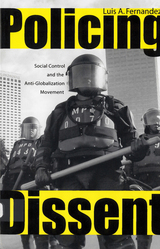 Policing Dissent: Social Control and the Anti-Globalization Movement
Luis A. Fernandez
Rutgers University Press, 2008 In November 1999, fifty-thousand anti-globalization activists converged on Seattle to shut down the World Trade Organization’s Ministerial Meeting. Using innovative and network-based strategies, the protesters left police flummoxed, desperately searching for ways to control the emerging anti-corporate globalization movement. Faced with these network-based tactics, law enforcement agencies transformed their policing and social control mechanisms to manage this new threat.
Policing Dissent provides a firsthand account of the changing nature of control efforts employed by law enforcement agencies when confronted with mass activism. The book also offers readers the richness of experiential detail and engaging stories often lacking in studies of police practices and social movements. This book does not merely seek to explain the causal relationship between repression and mobilization. Rather, it shows how social control strategies act on the mind and body of protesters.
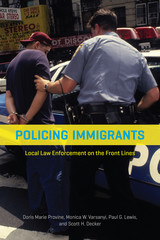 Policing Immigrants: Local Law Enforcement on the Front Lines
Doris Marie Provine, Monica W. Varsanyi, Paul G. Lewis, and Scott H. Decker
University of Chicago Press, 2016 The United States deported nearly two million illegal immigrants during the first five years of the Obama presidency—more than during any previous administration. President Obama stands accused by activists of being “deporter in chief.” Yet despite efforts to rebuild what many see as a broken system, the president has not yet been able to convince Congress to pass new immigration legislation, and his record remains rooted in a political landscape that was created long before his election. Deportation numbers have actually been on the rise since 1996, when two federal statutes sought to delegate a portion of the responsibilities for immigration enforcement to local authorities.
Policing Immigrants traces the transition of immigration enforcement from a traditionally federal power exercised primarily near the US borders to a patchwork system of local policing that extends throughout the country’s interior. Since federal authorities set local law enforcement to the task of bringing suspected illegal immigrants to the federal government’s attention, local responses have varied. While some localities have resisted the work, others have aggressively sought out unauthorized immigrants, often seeking to further their own objectives by putting their own stamp on immigration policing. Tellingly, how a community responds can best be predicted not by conditions like crime rates or the state of the local economy but rather by the level of conservatism among local voters. What has resulted, the authors argue, is a system that is neither just nor effective—one that threatens the core crime-fighting mission of policing by promoting racial profiling, creating fear in immigrant communities, and undermining the critical community-based function of local policing.
 Policing in Natural Disasters: Stress, Resilience, and the Challenges of Emergency Management
Terri M. Adams and Leigh R. Anderson
Temple University Press, 2019 When natural disasters and emergencies strike, the short- and long-term effects of these events on first responders—the very people society relies upon in the midst of a catastrophe—are often overlooked. Policing in Natural Disasters provides a comprehensive analysis of the major challenges faced by law enforcement officers during extreme crisis events. Terri Adams and Leigh Anderson examine the dilemmas police departments face as well as the impact of the disasters on the professional and personal lives of the officers. Case studies explore the response and recovery phases of emergencies including Hurricane Katrina, the 2010 earthquake and subsequent tsunami in Santiago, Chile, and the Superstorm Tornado Outbreak in 2011. Policing in Natural Disasters was inspired by the personal accounts of triumph and tragedy shared by first responders. It provides an understanding of first-responder behaviors during disasters, as well as the preparedness, mitigation, response and recovery policy implications for first responders and emergency managers. As first responders must frequently cope with stress, uncertainty, and threats to their health and safety during high-consequence events, Adams and Anderson provide lessons from first-hand experiences of police officers that can lead to better management in times of crisis.
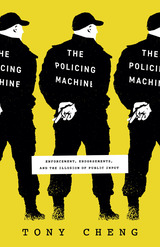 The Policing Machine: Enforcement, Endorsements, and the Illusion of Public Input
Tony Cheng
University of Chicago Press, 2024 A revelatory look at how the NYPD has resisted change through strategic and selective community engagement.
The past few years have seen Americans express passionate demands for police transformation. But even as discussion of no-knock warrants, chokeholds, and body cameras has exploded, any changes to police procedures have only led to the same outcomes. Despite calls for increased accountability, police departments have successfully stonewalled change.
In The Policing Machine, Tony Cheng reveals the stages of that resistance, offering a close look at the deep engagement strategies that NYPD precincts have developed with only subsets of the community in order to counter any truly meaningful, democratic oversight. Cheng spent nearly two years in an unprecedented effort to understand the who and how of police-community relationship building in New York City, documenting the many ways the police strategically distributed power and privilege within the community to increase their own public legitimacy without sacrificing their organizational independence. By setting up community councils that are conveniently run by police allies, handing out favors to local churches that will promote the police to their parishioners, and offering additional support to institutions friendly to the police, the NYPD, like police departments all over the country, cultivates political capital through a strategic politics that involves distributing public resources, offering regulatory leniency, and deploying coercive force. The fundamental challenge with police-community relationships, Cheng shows, is not to build them. It is that they already exist and are motivated by a machinery designed to stymie reform.
|
|

